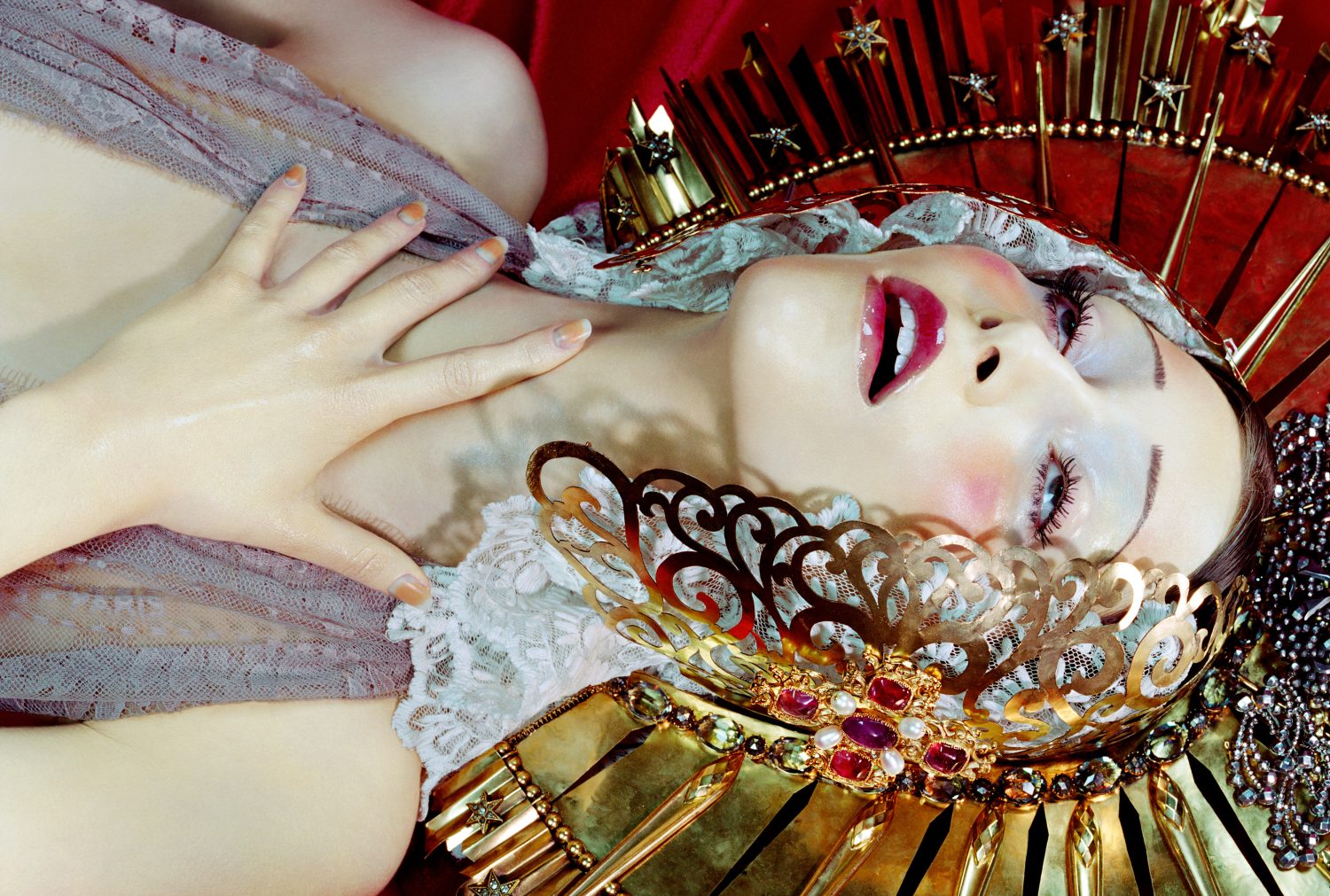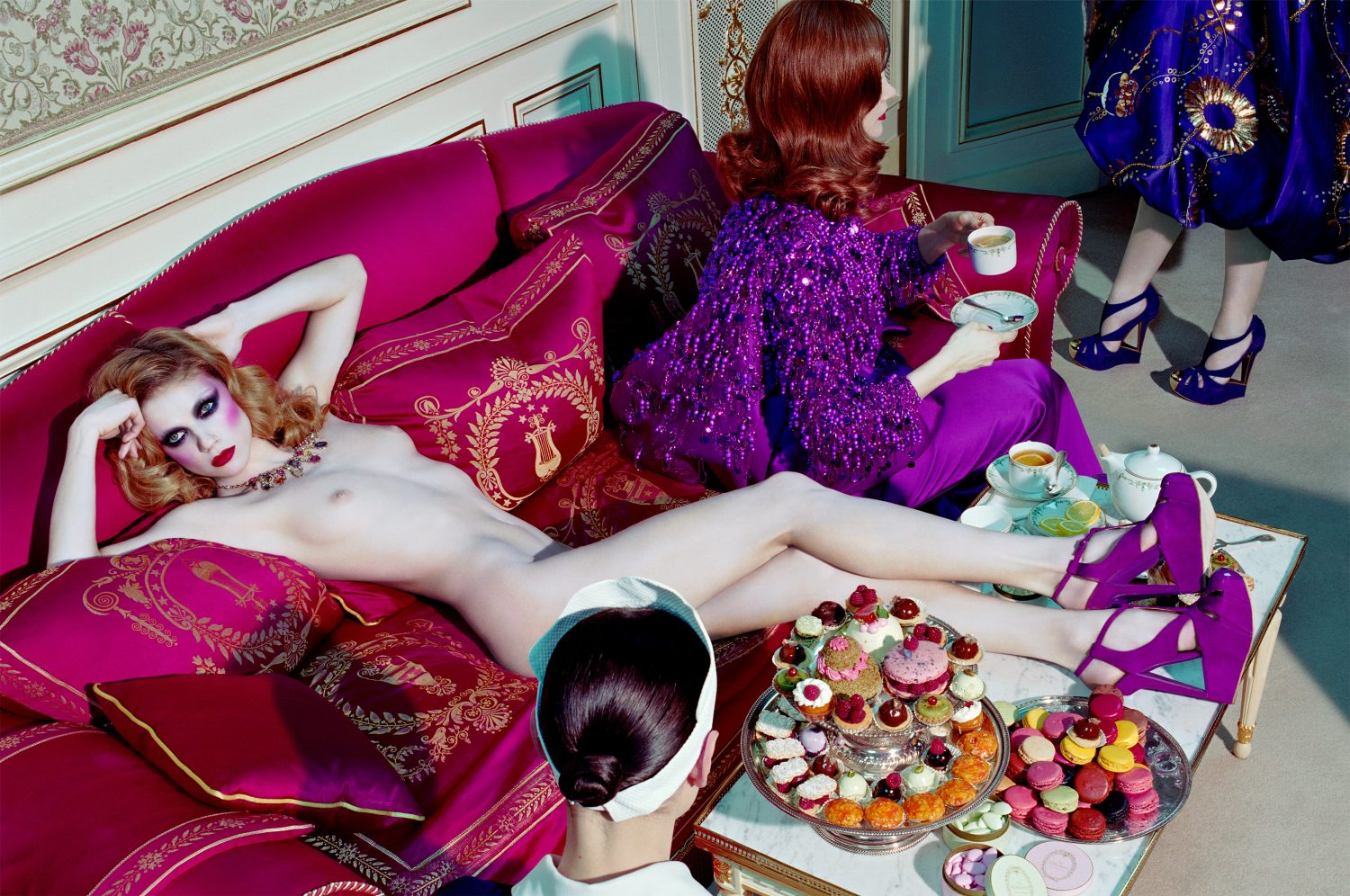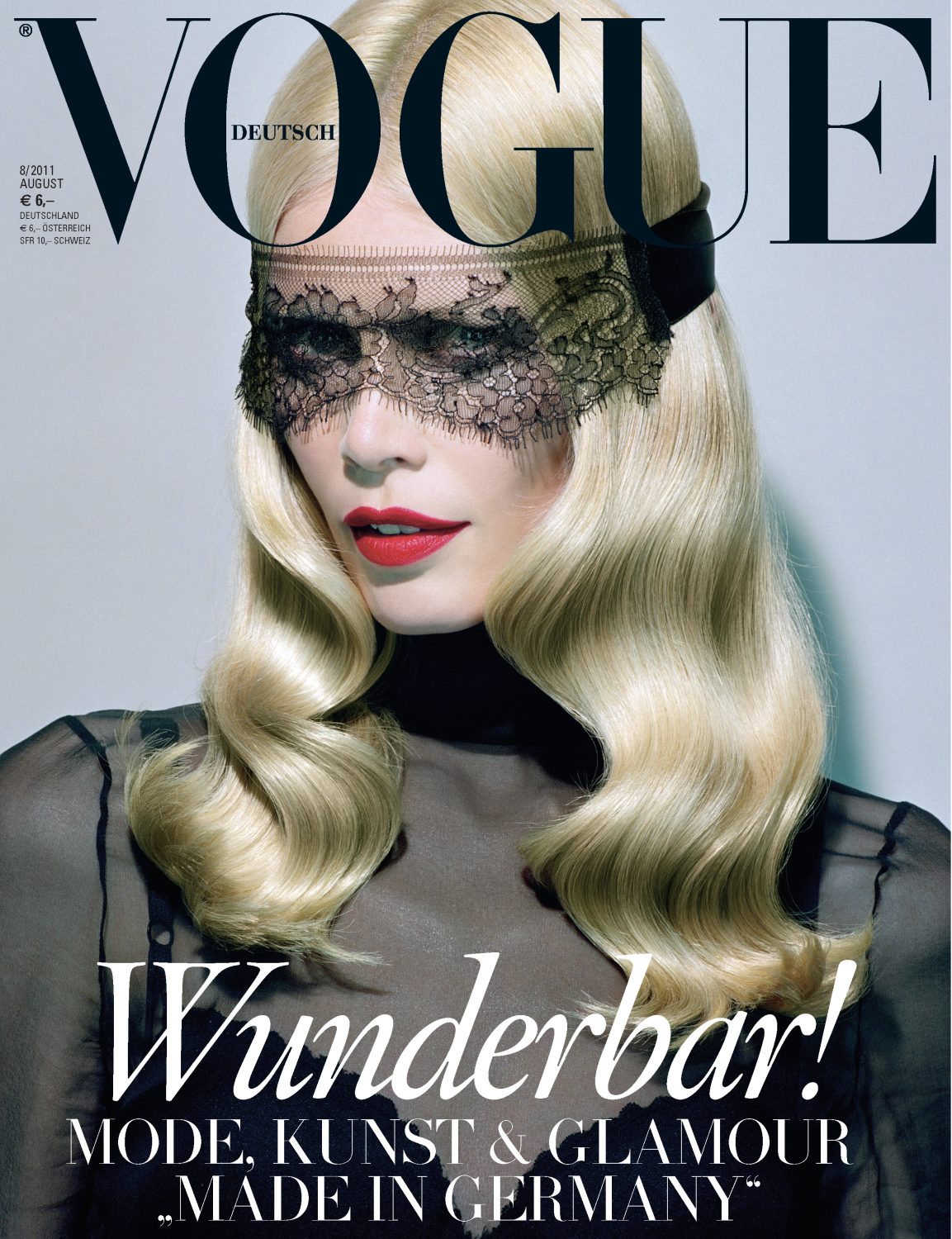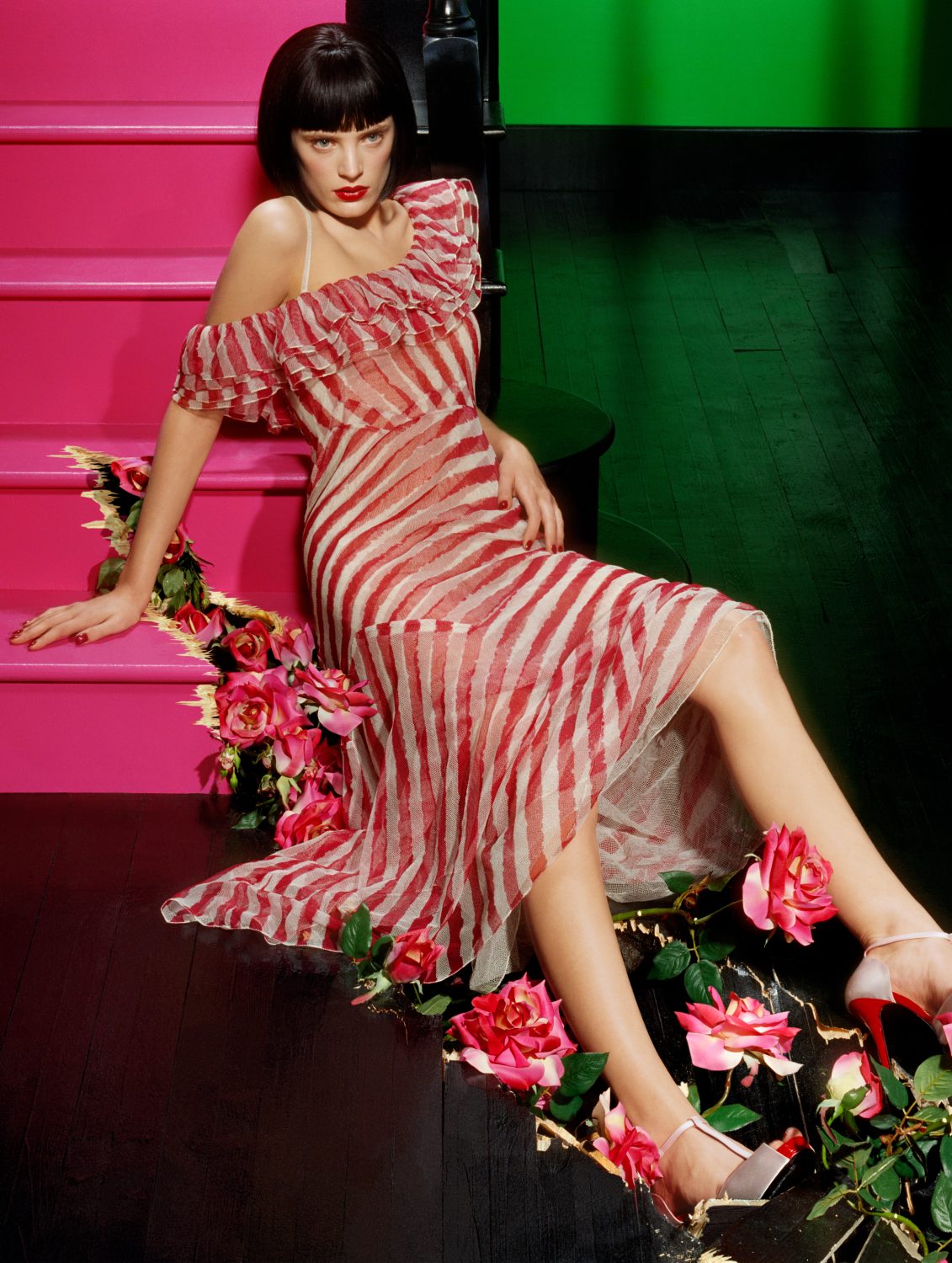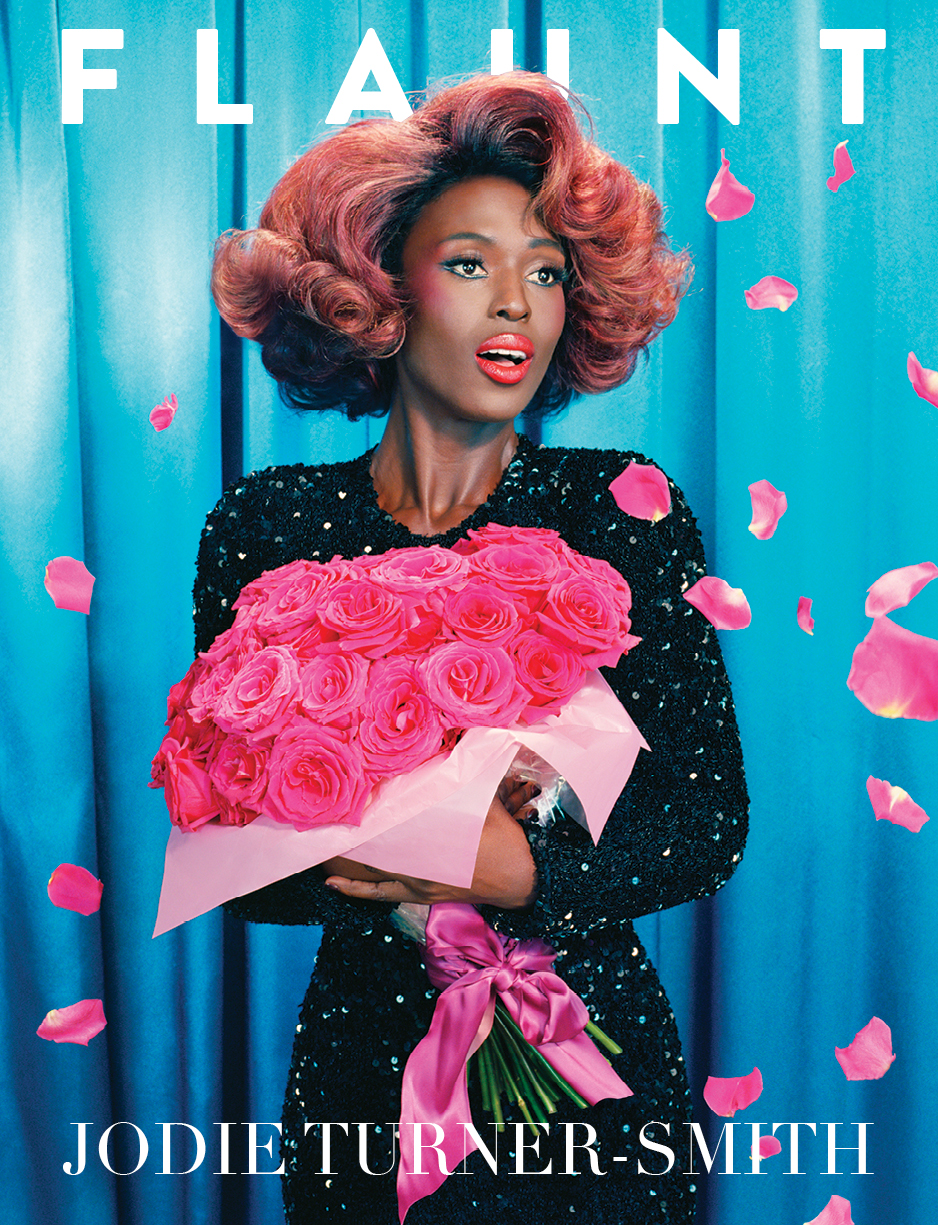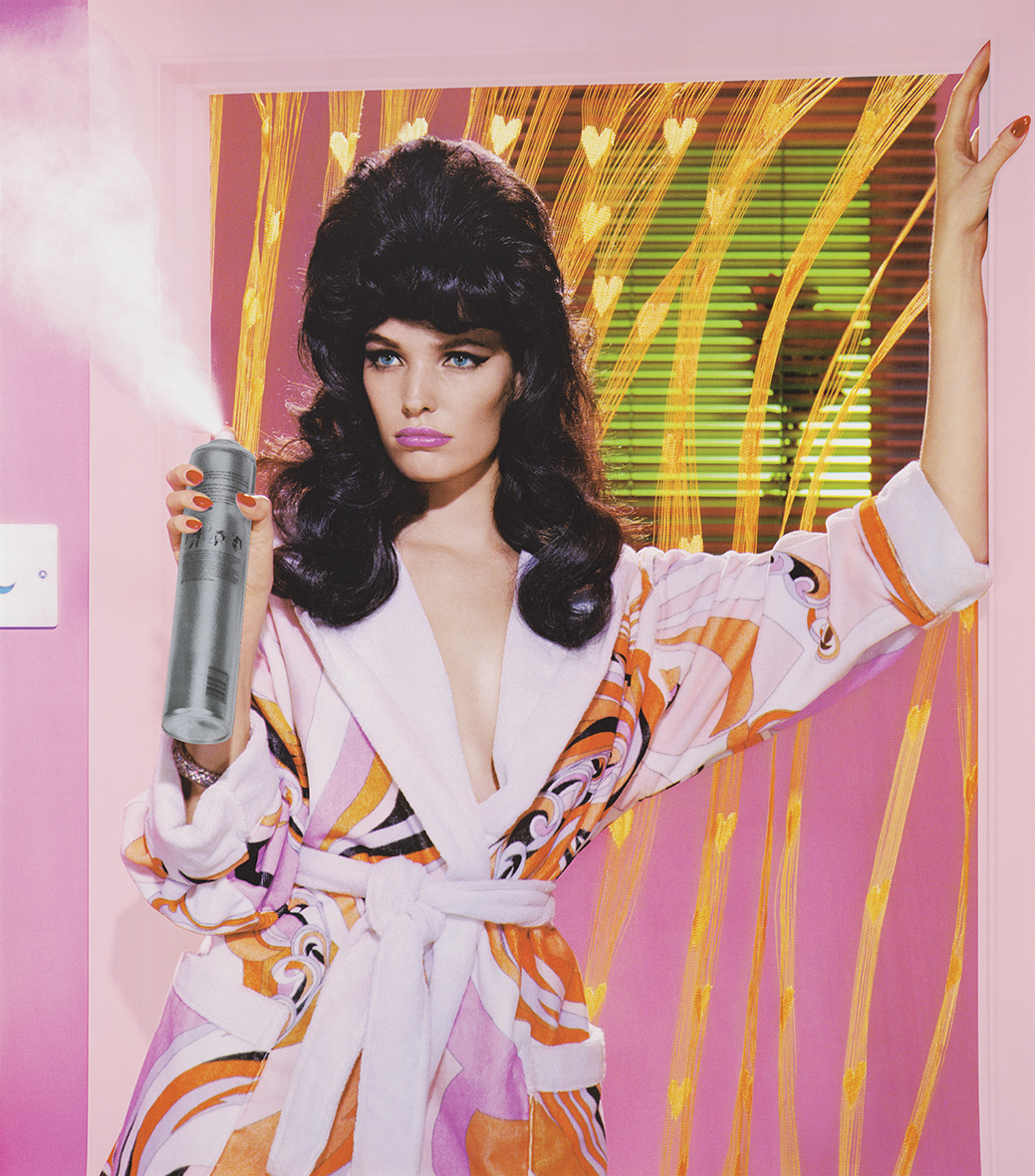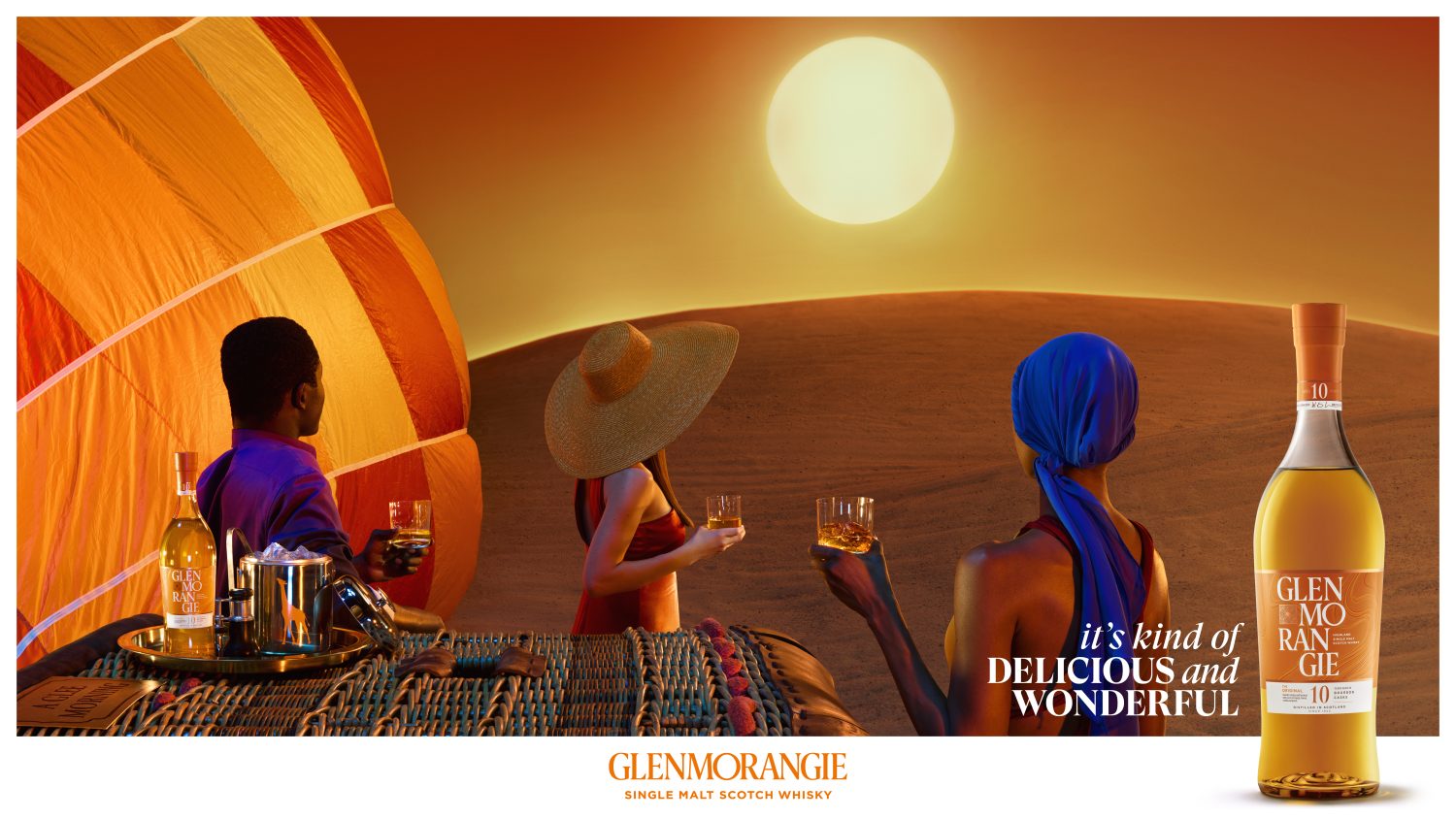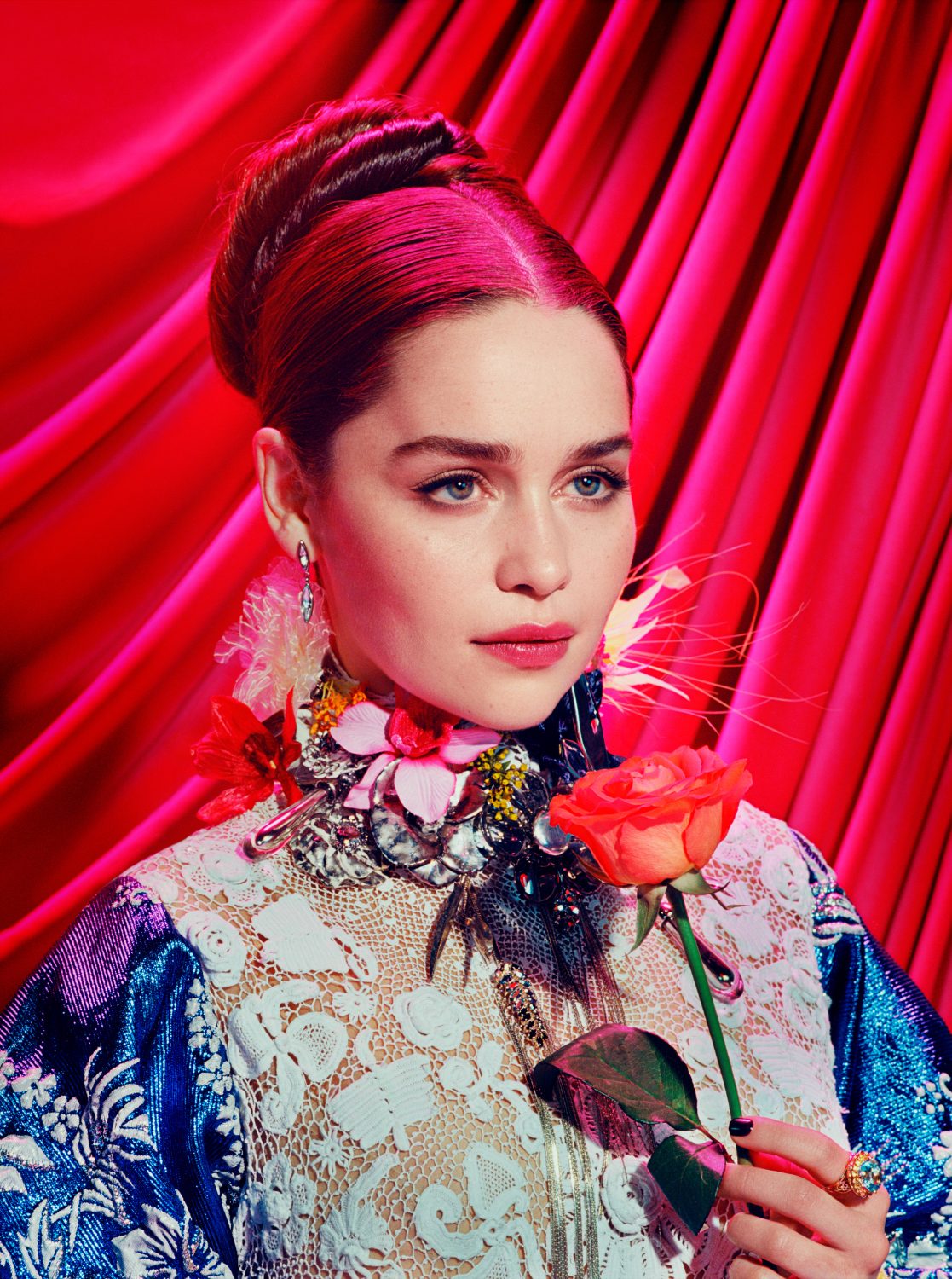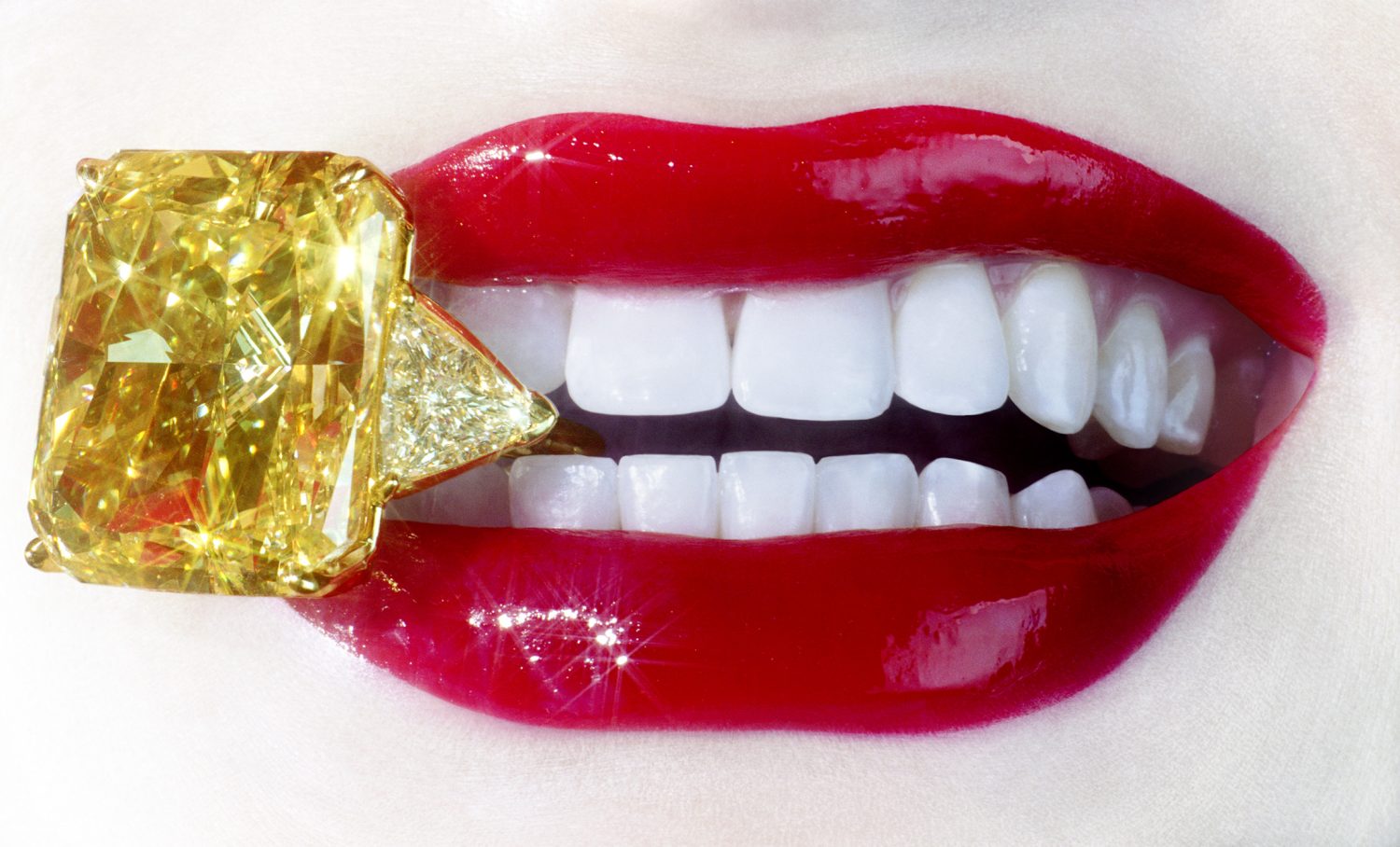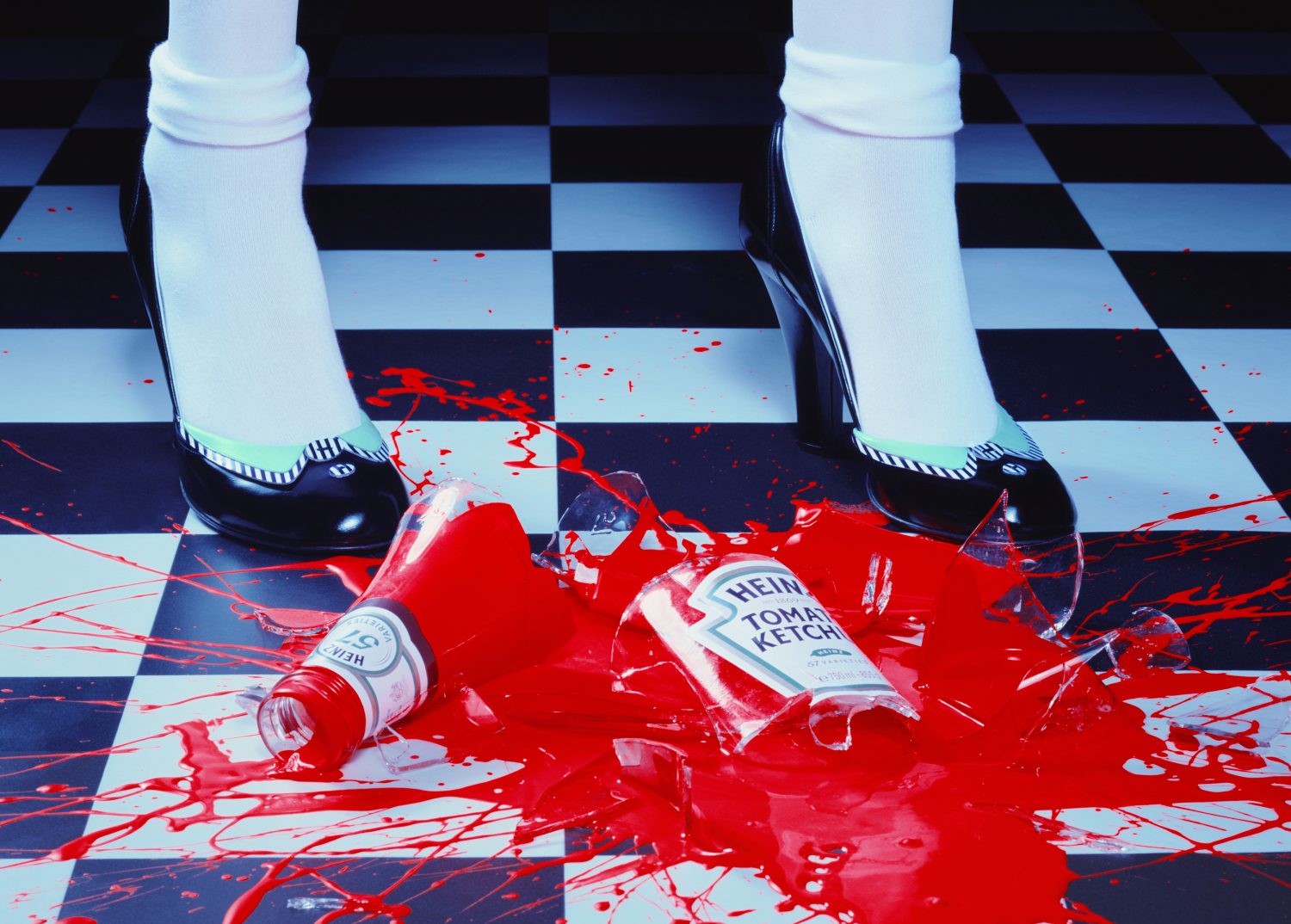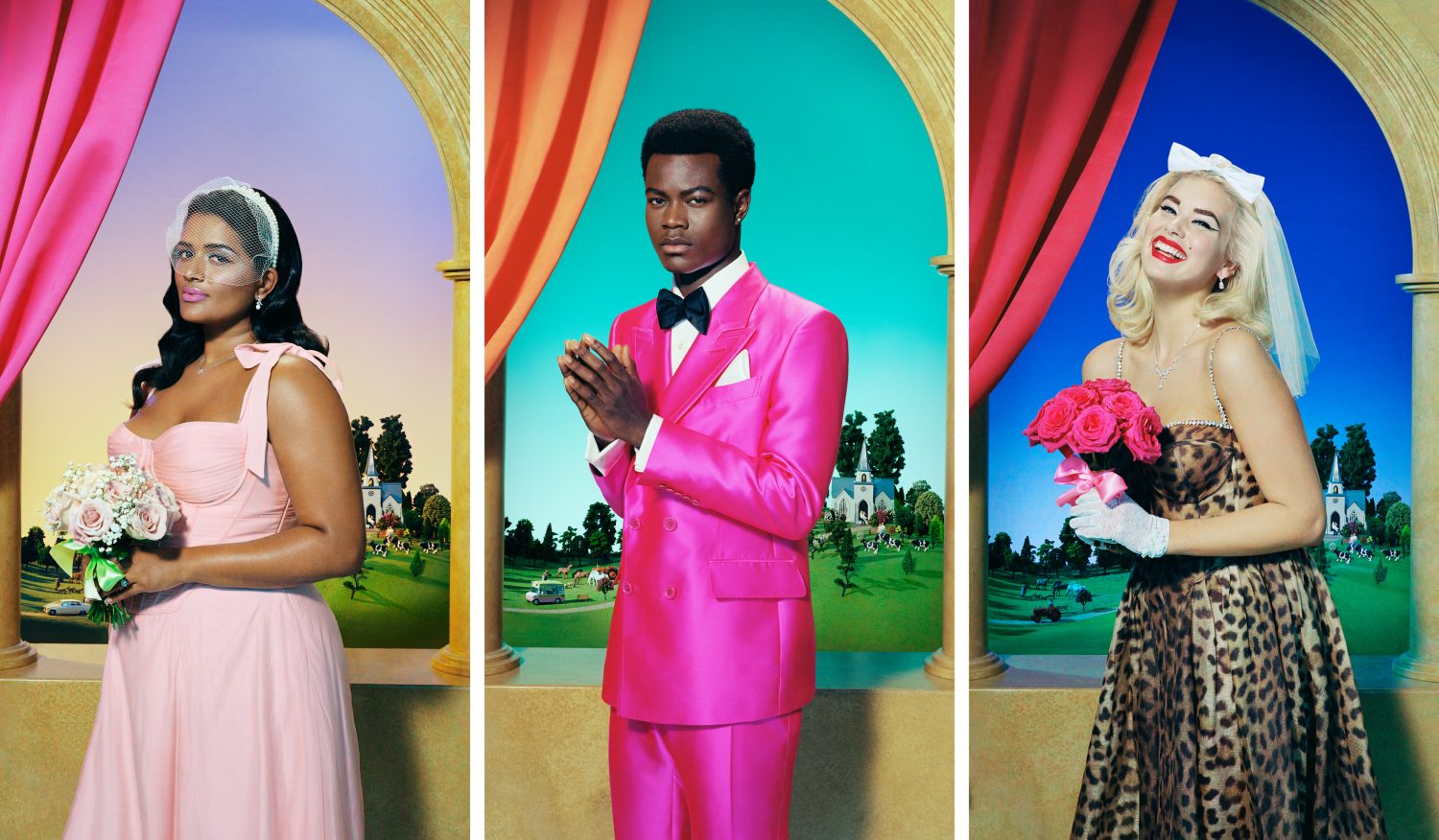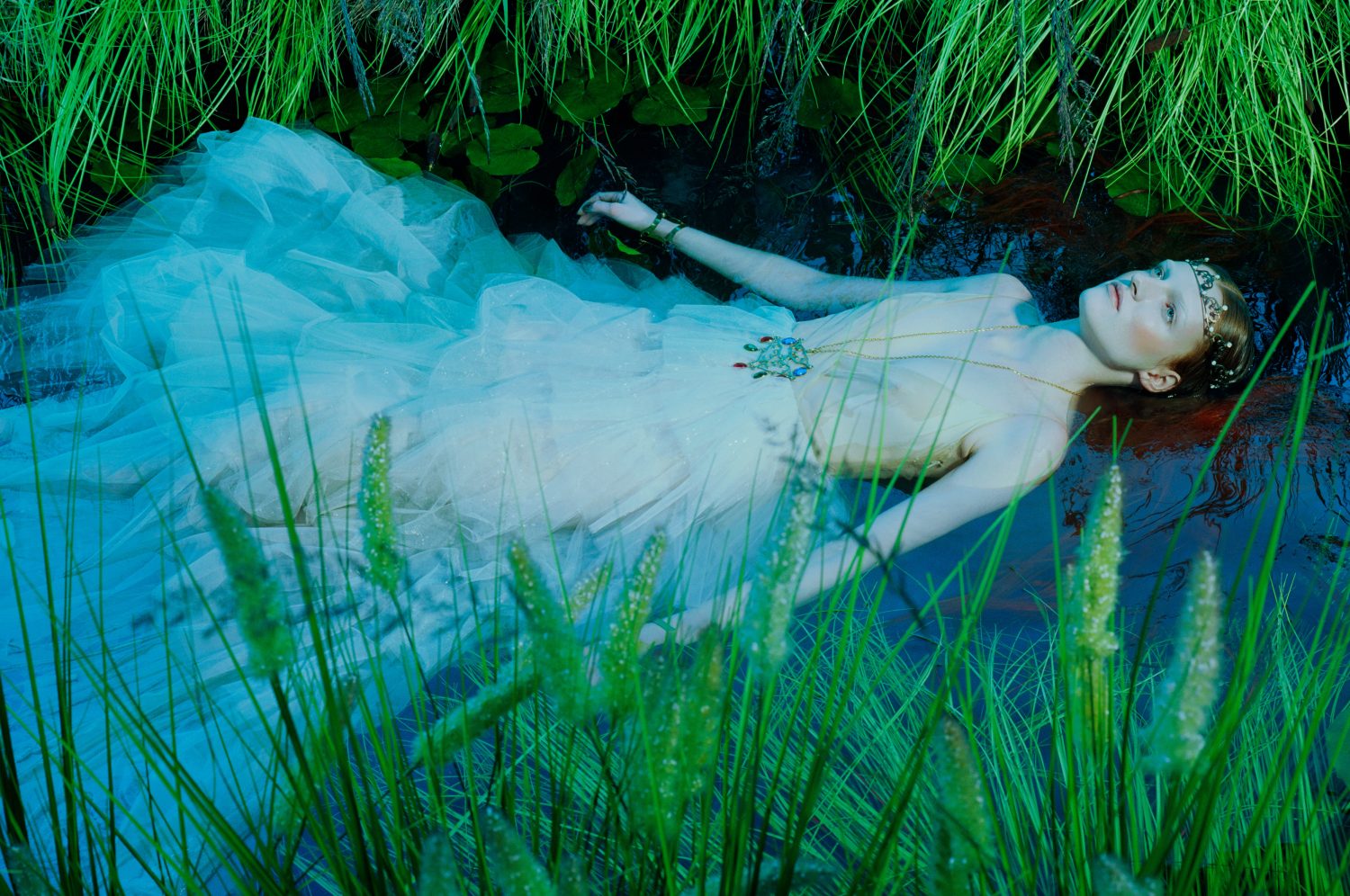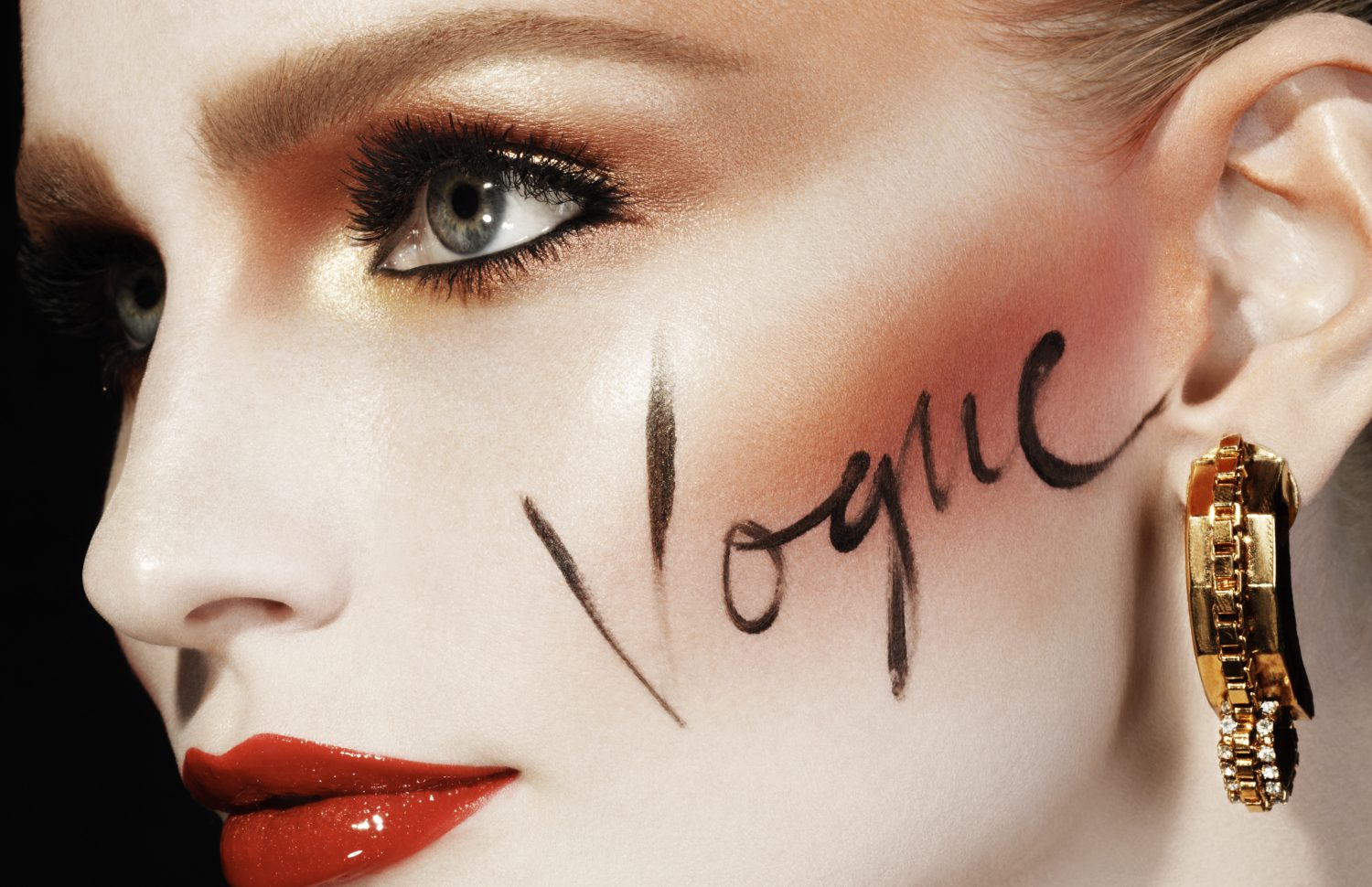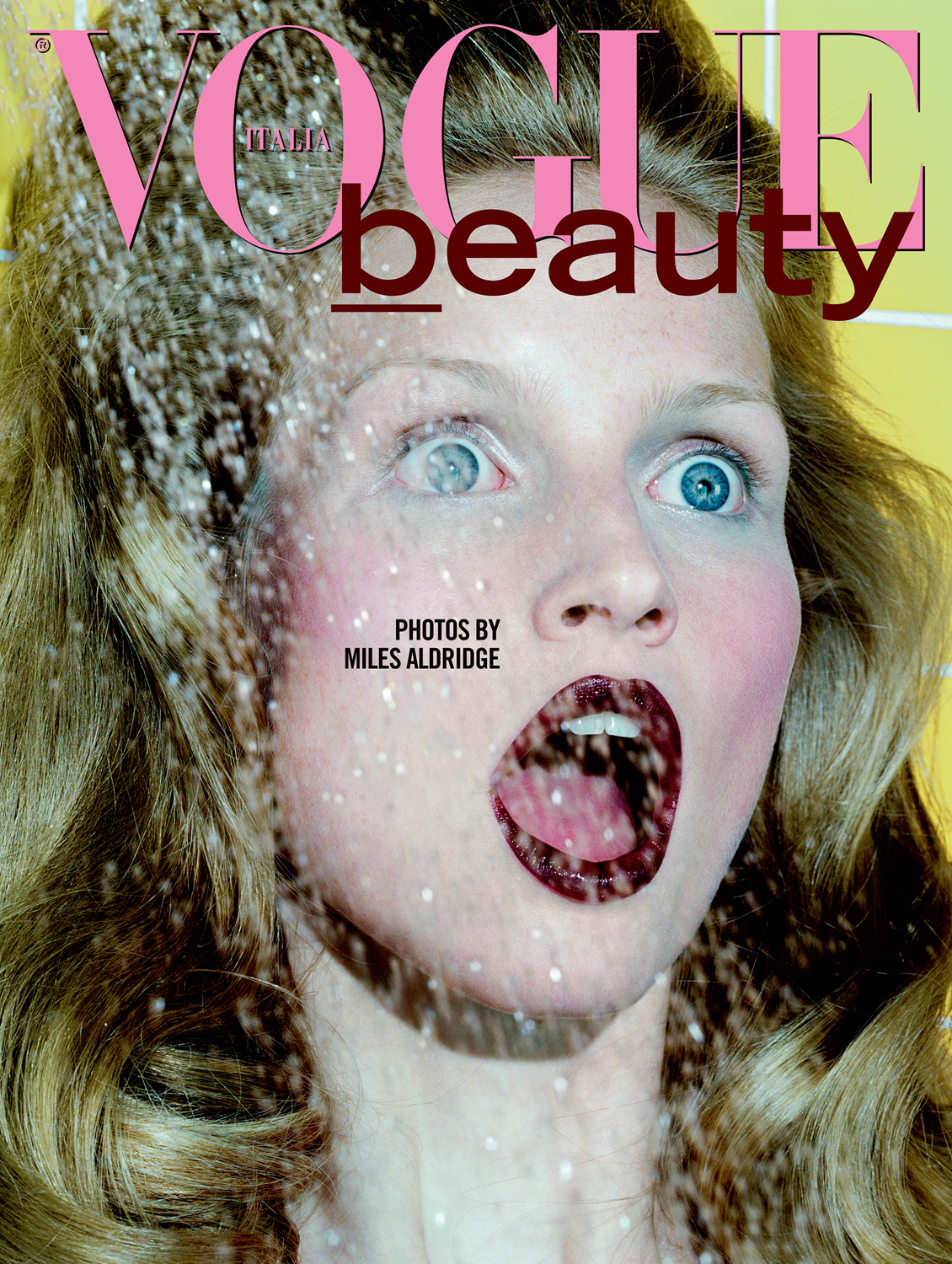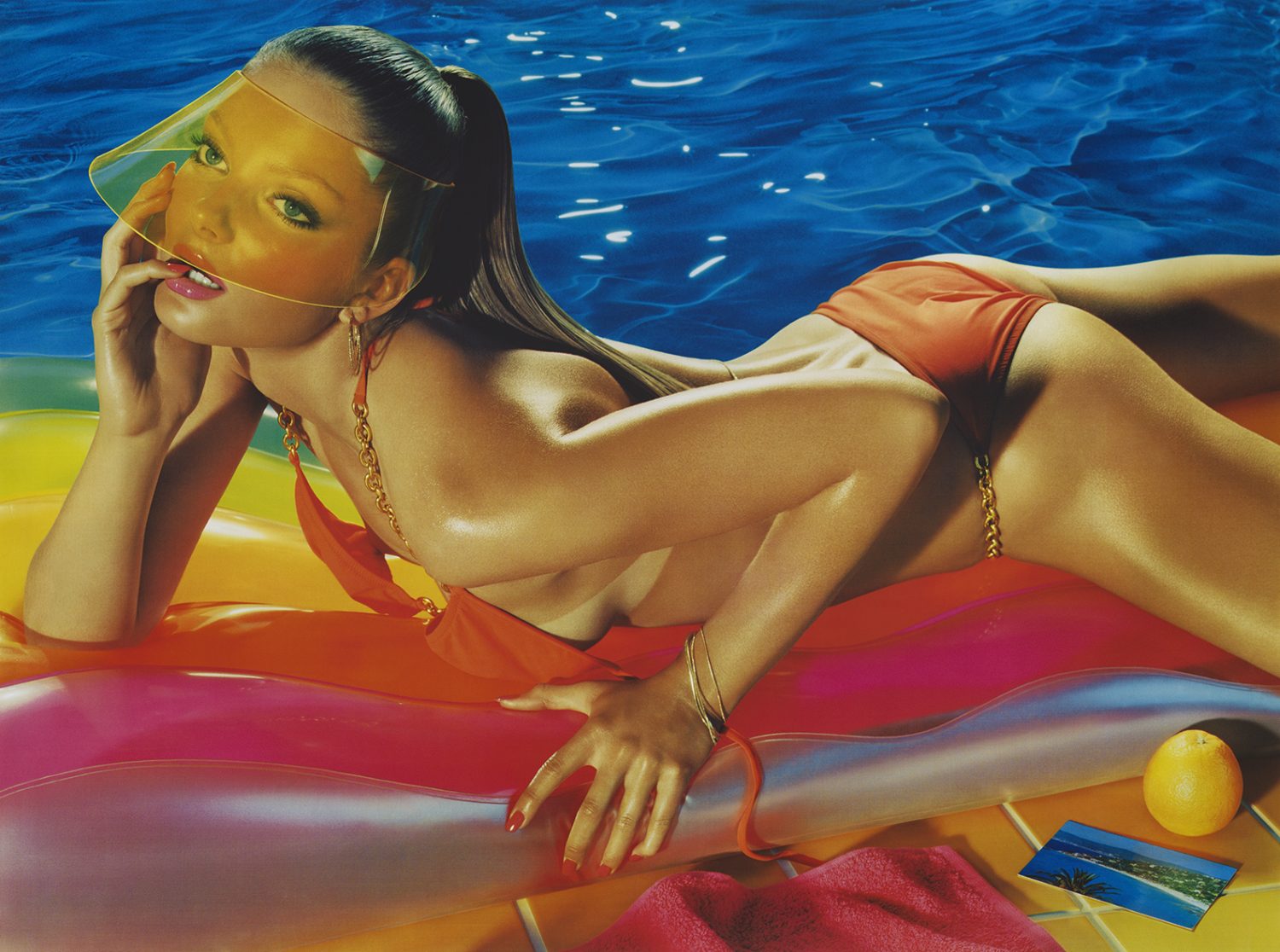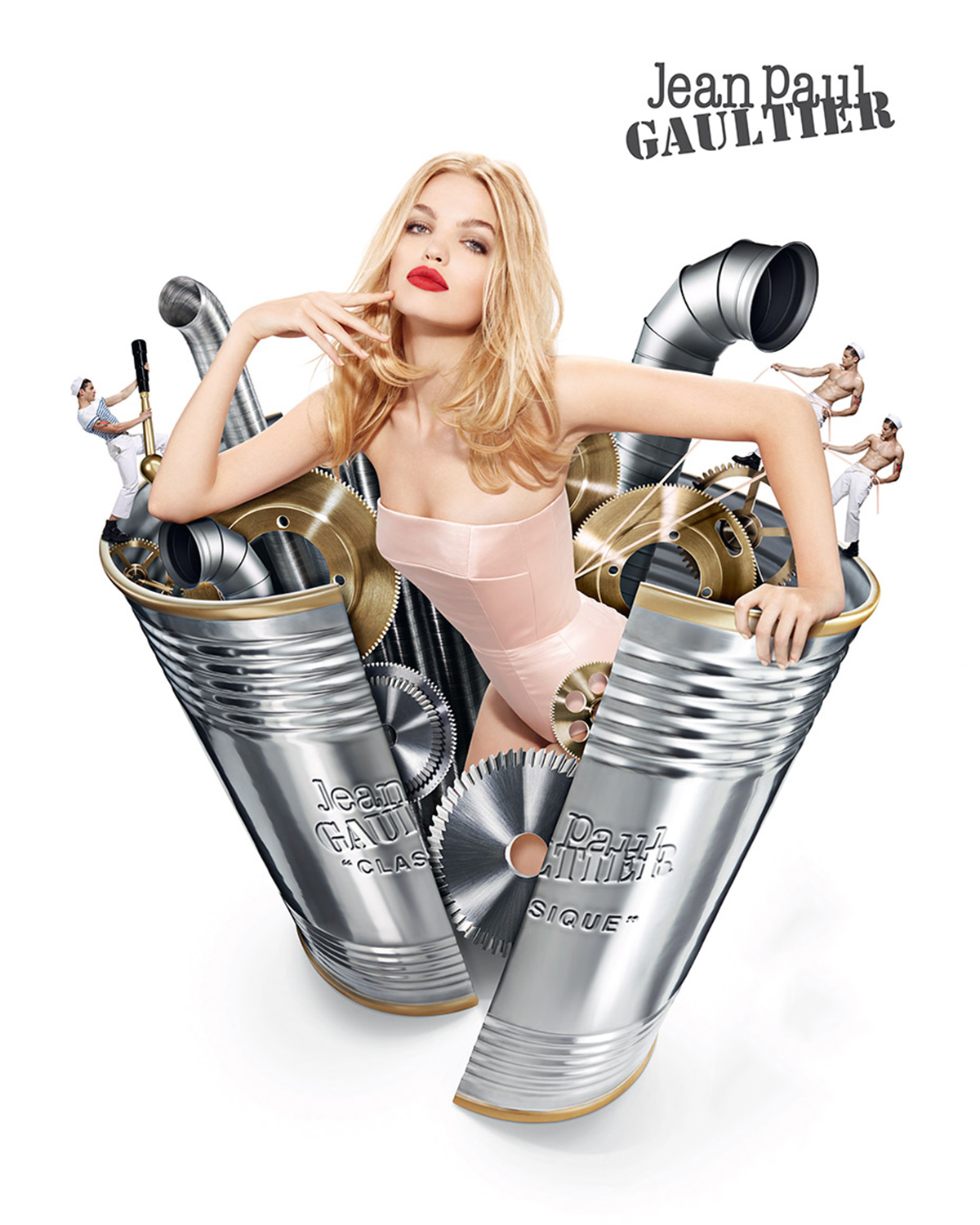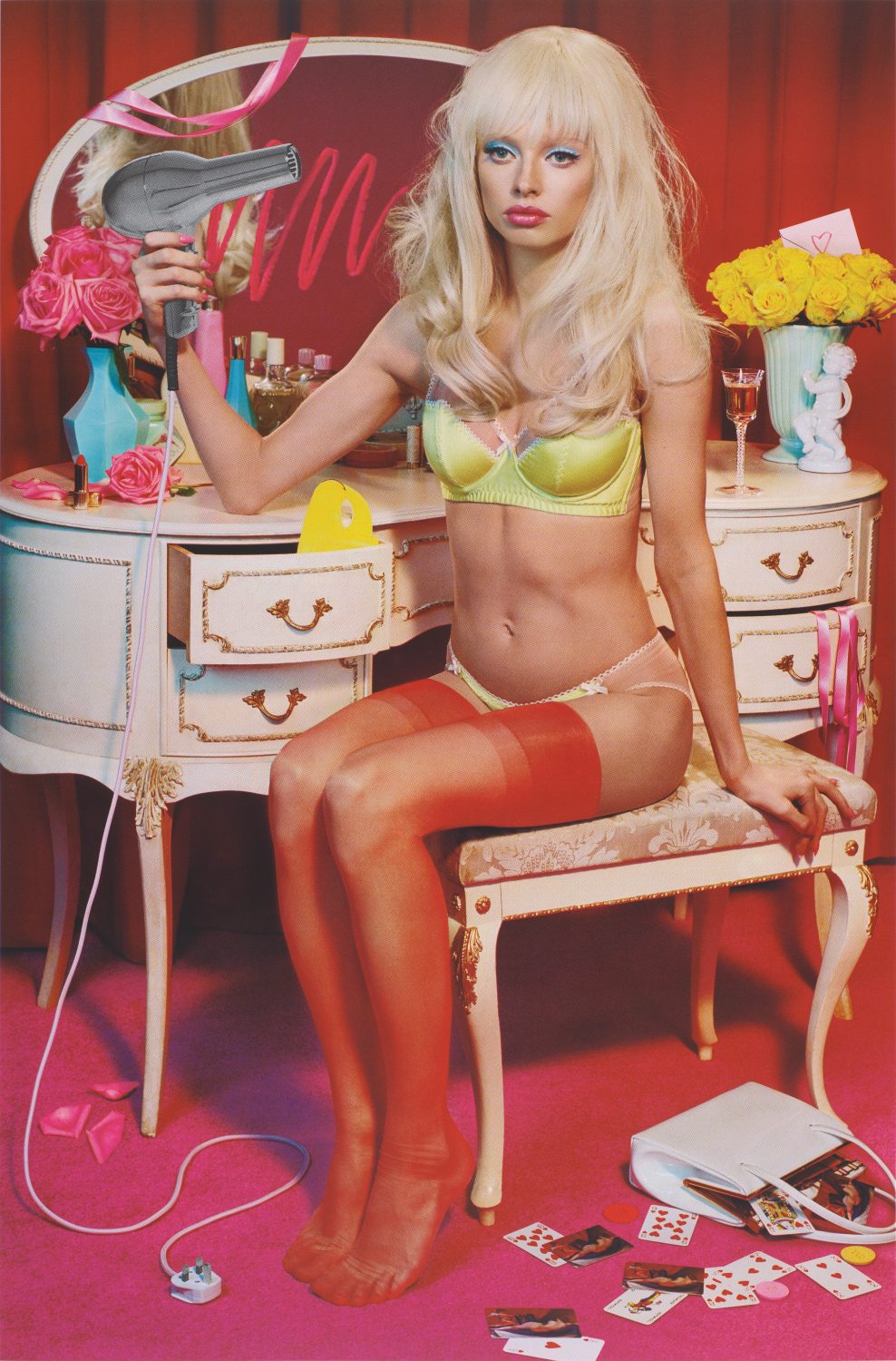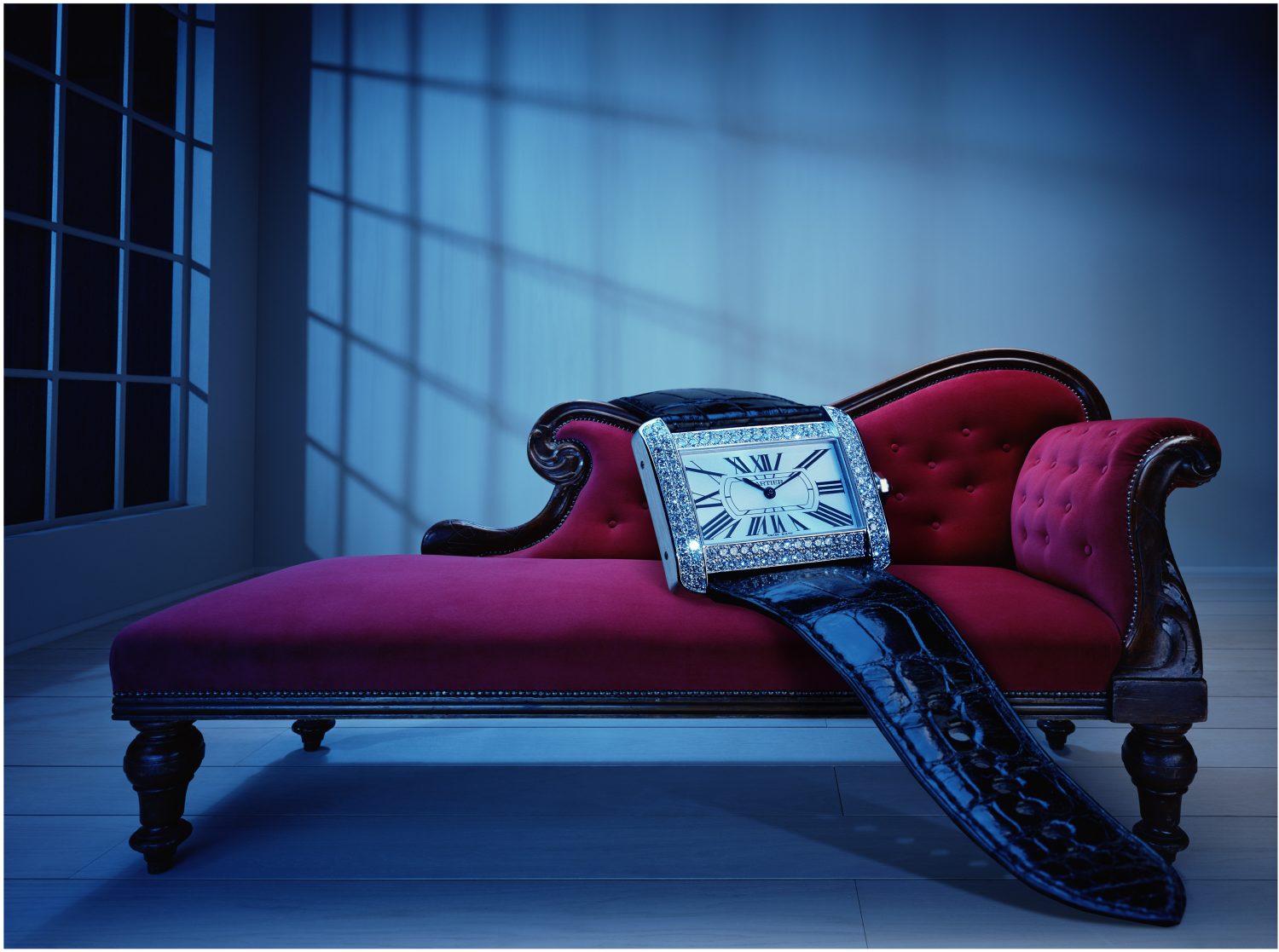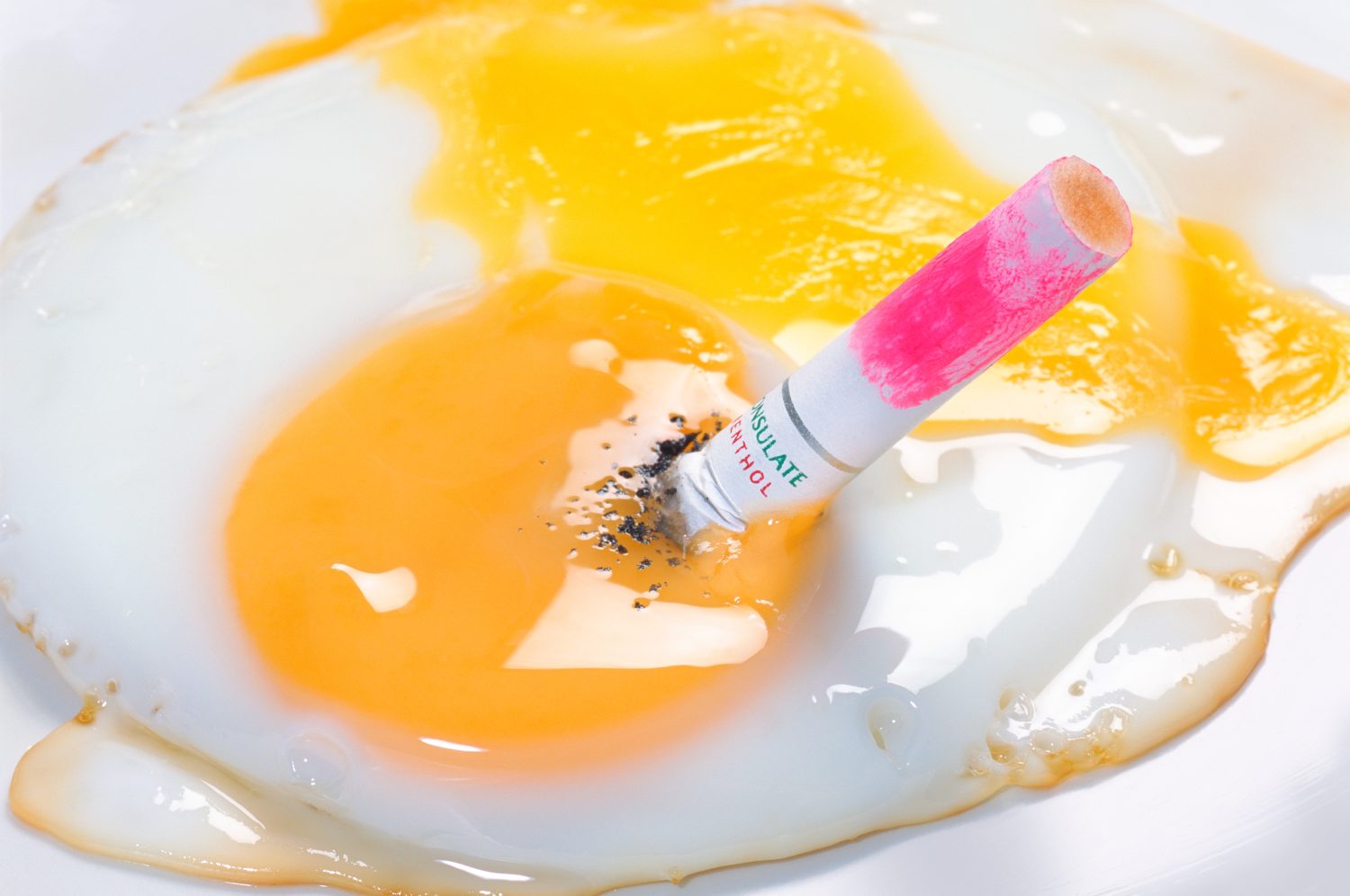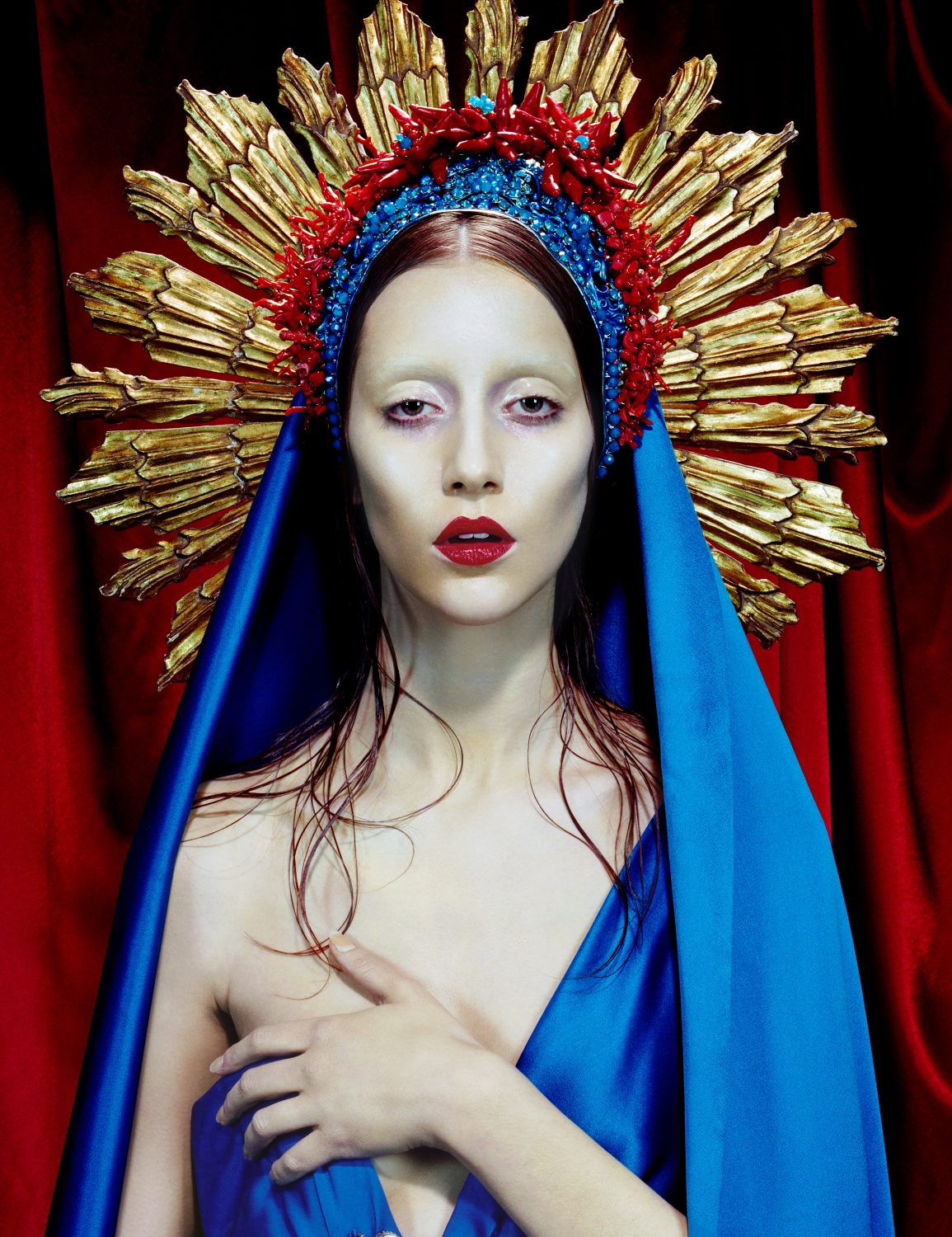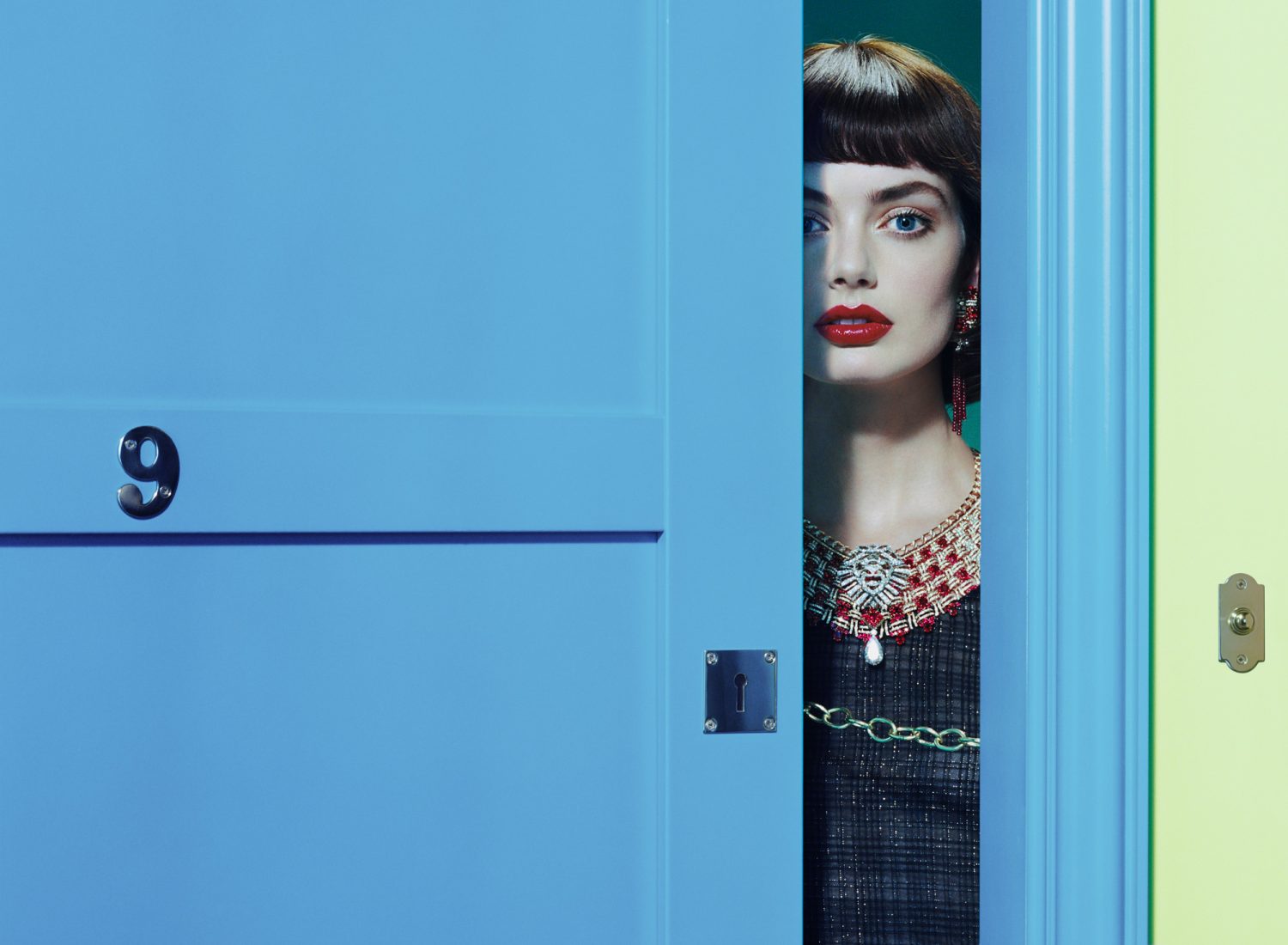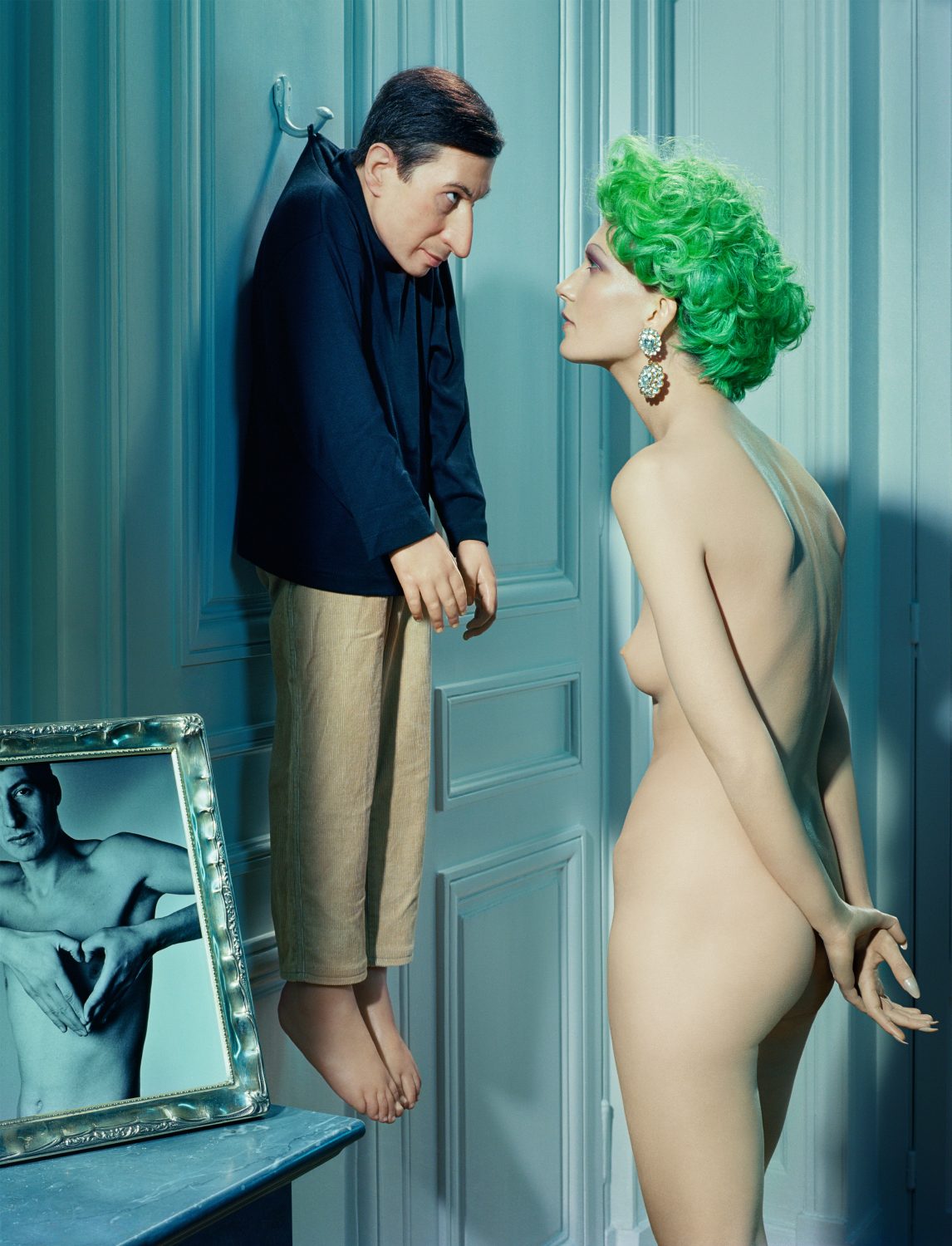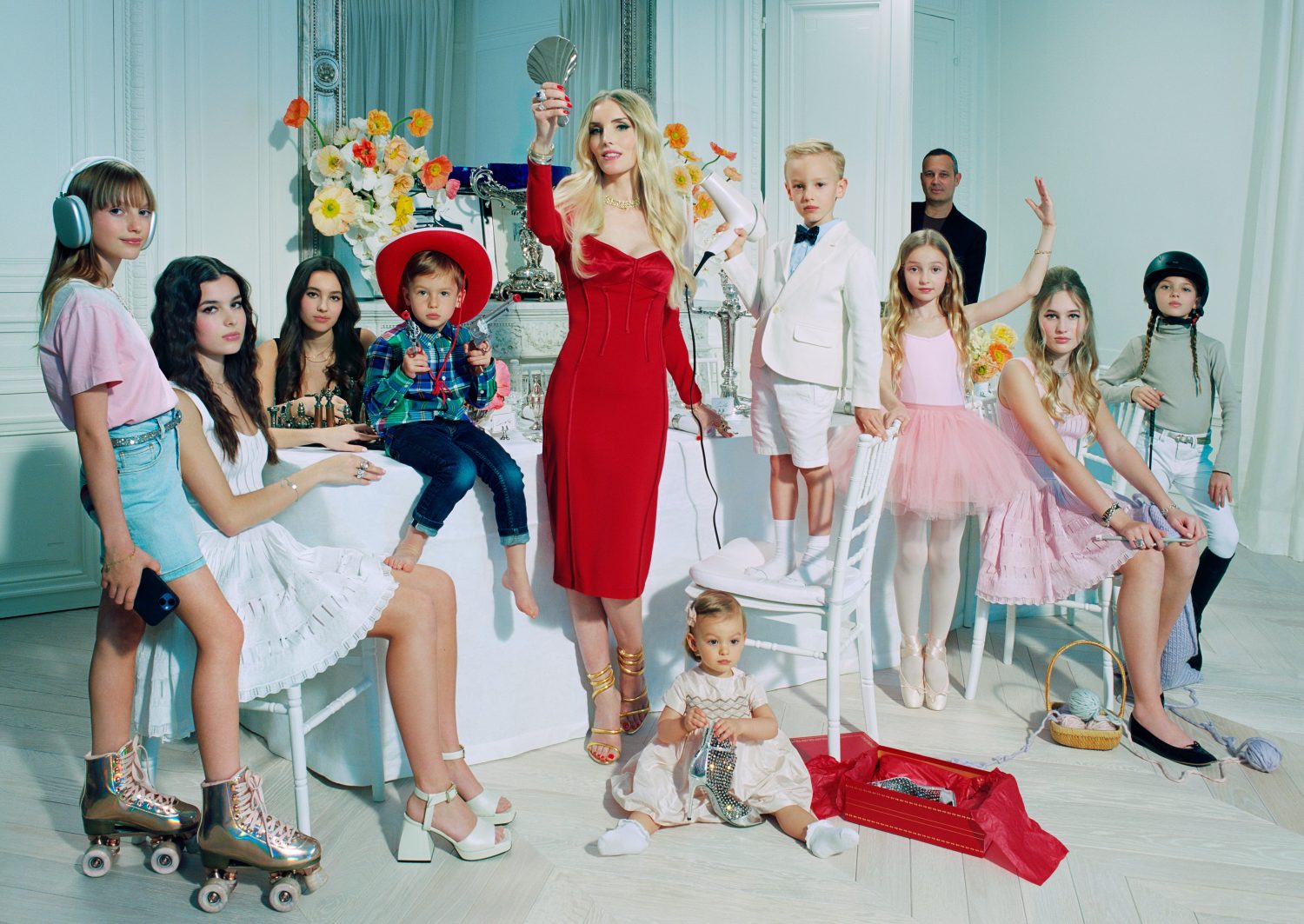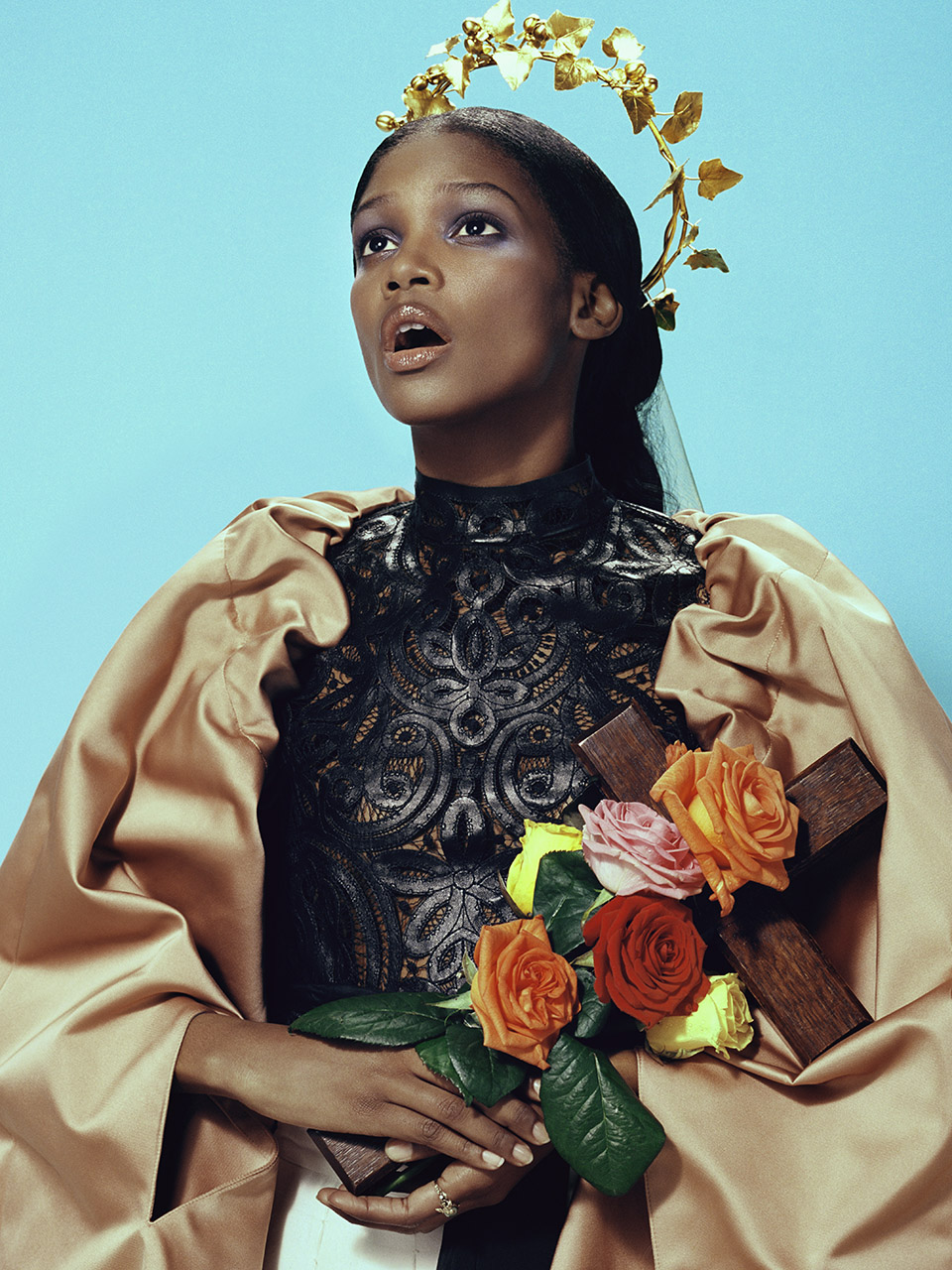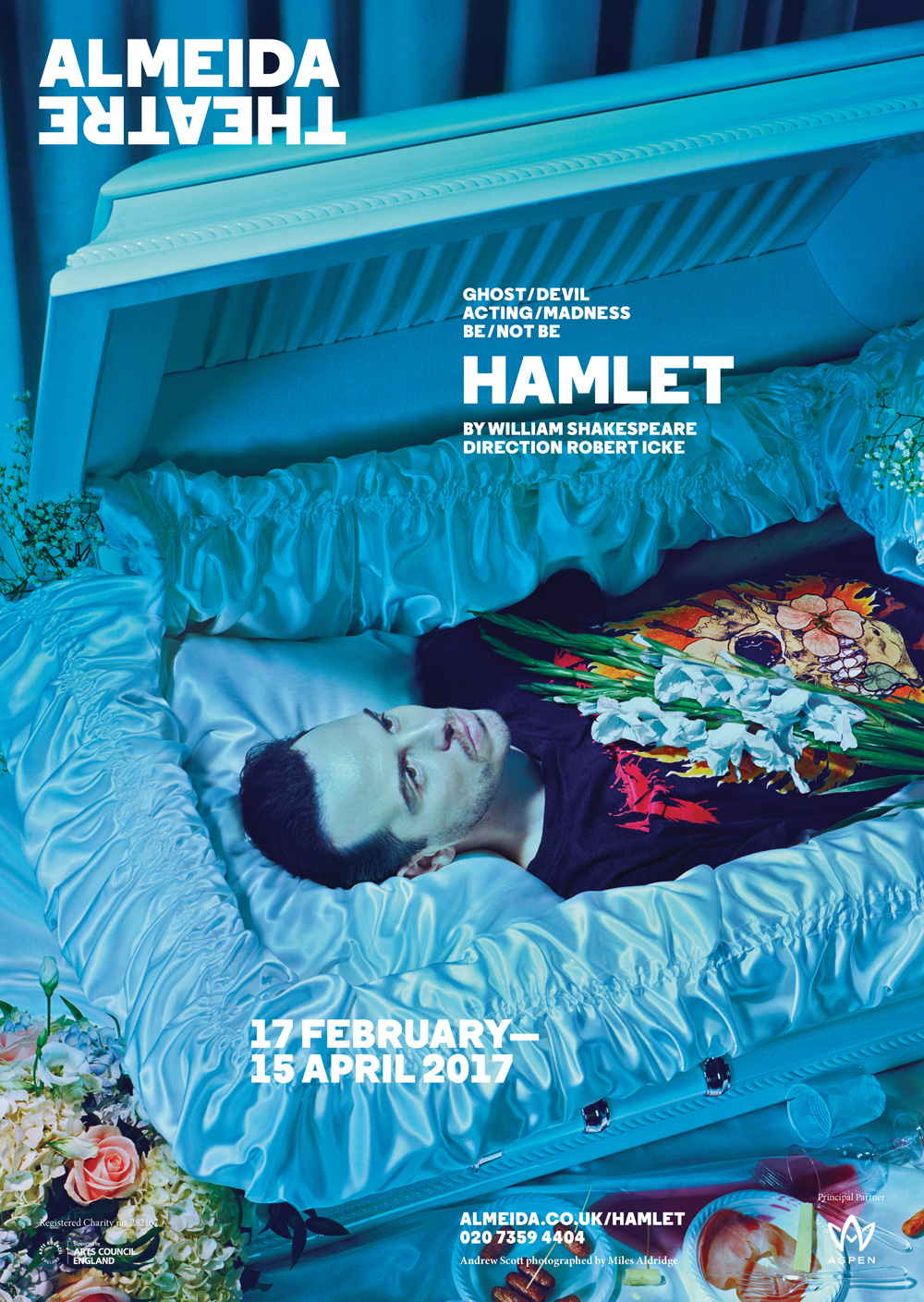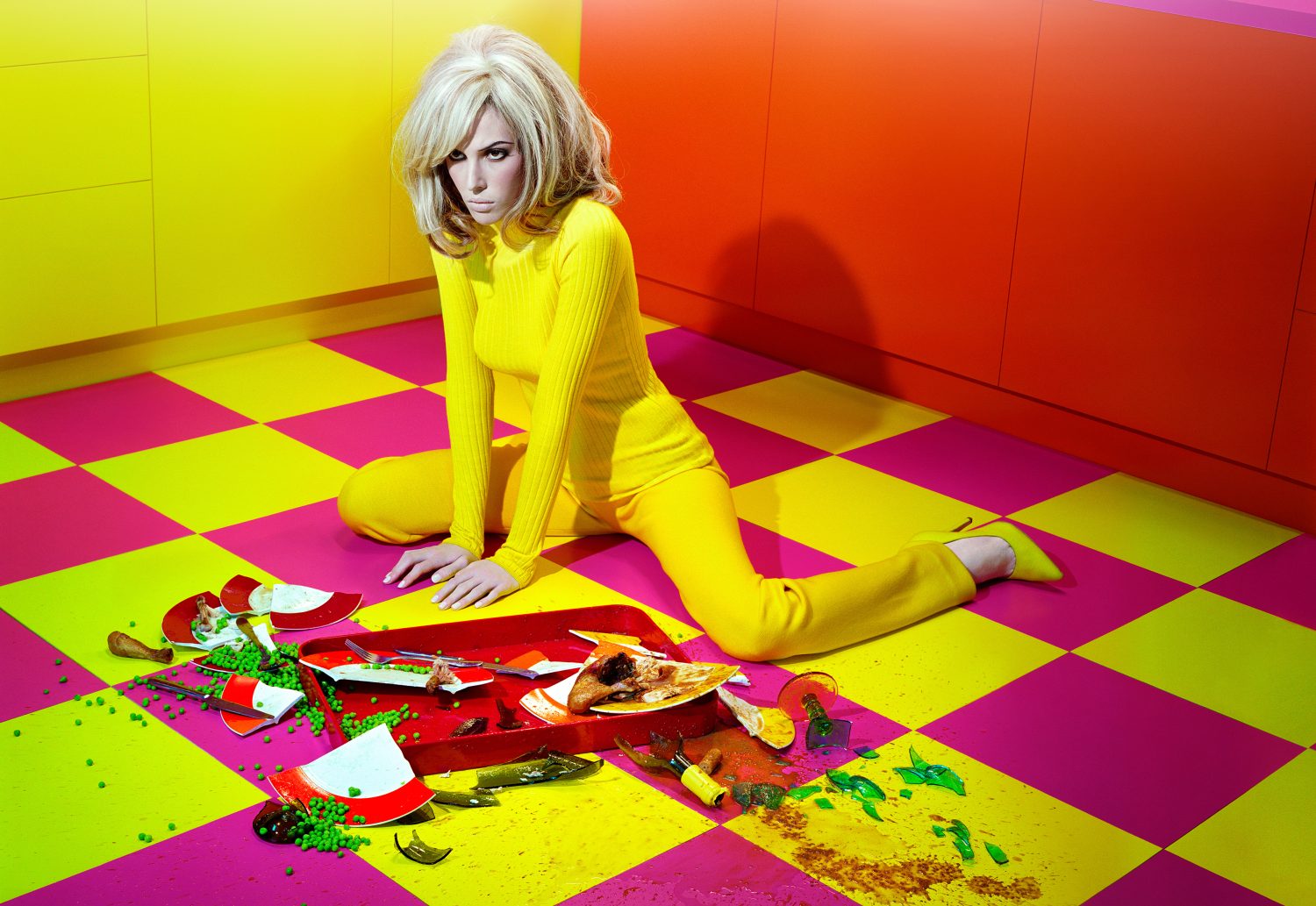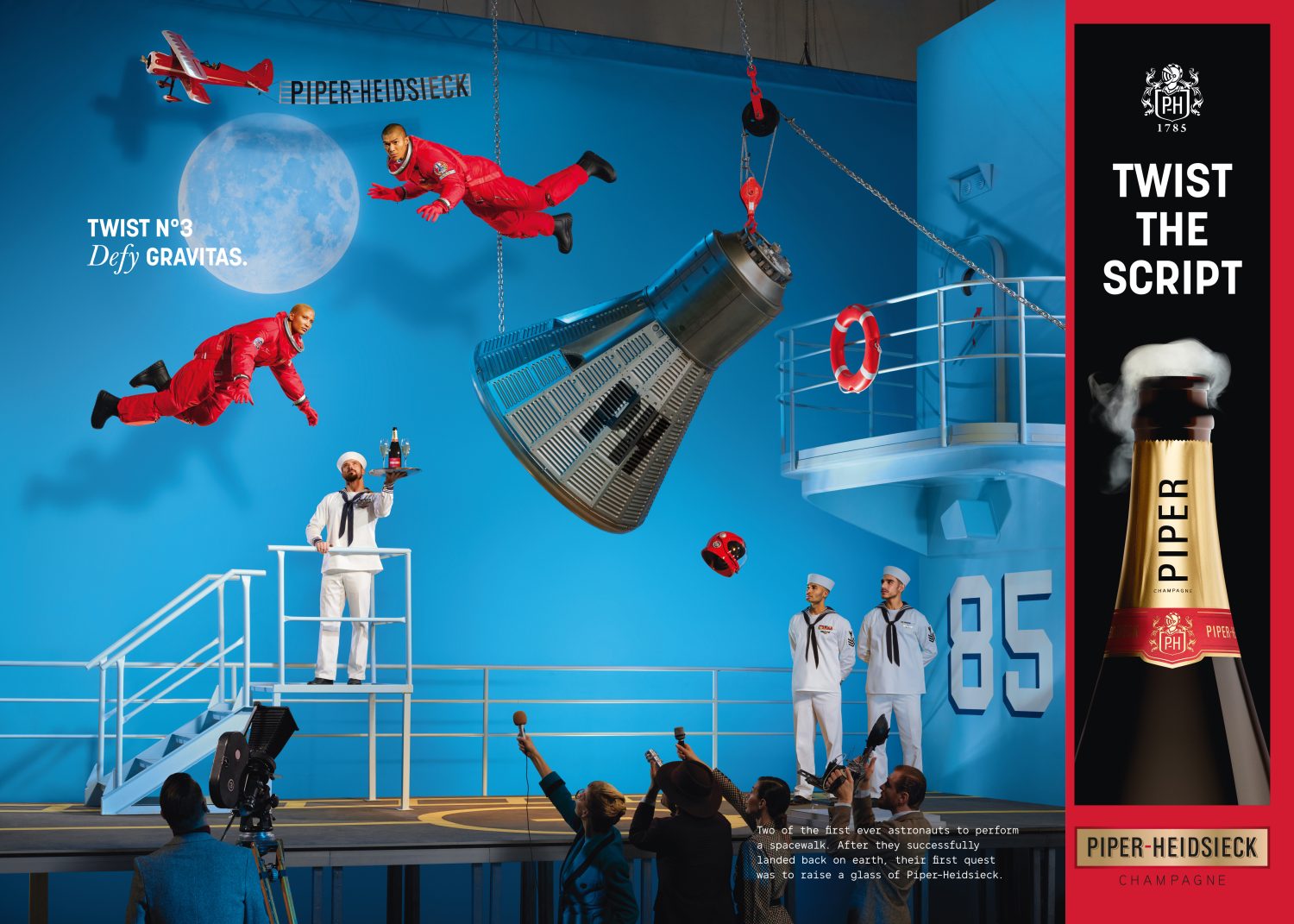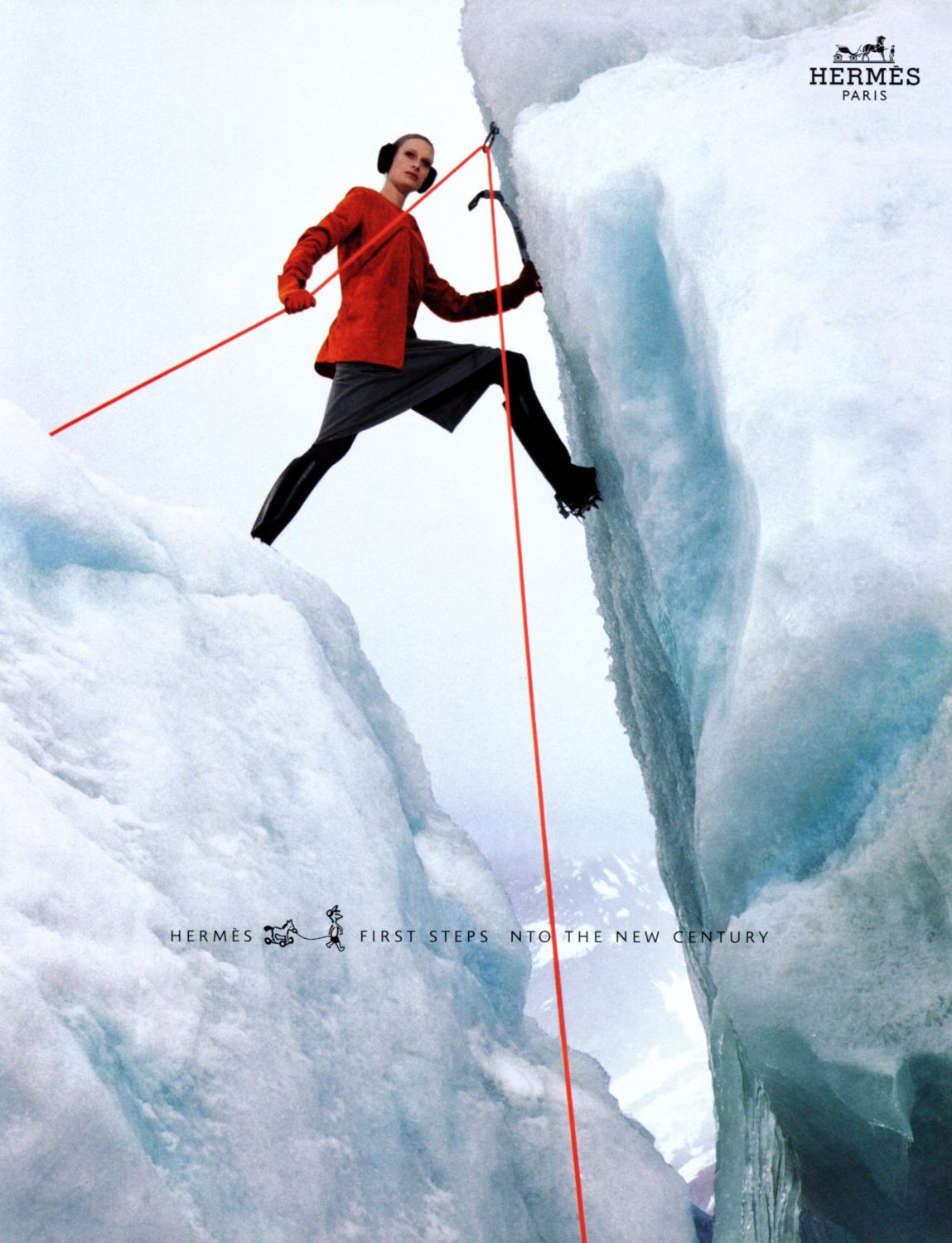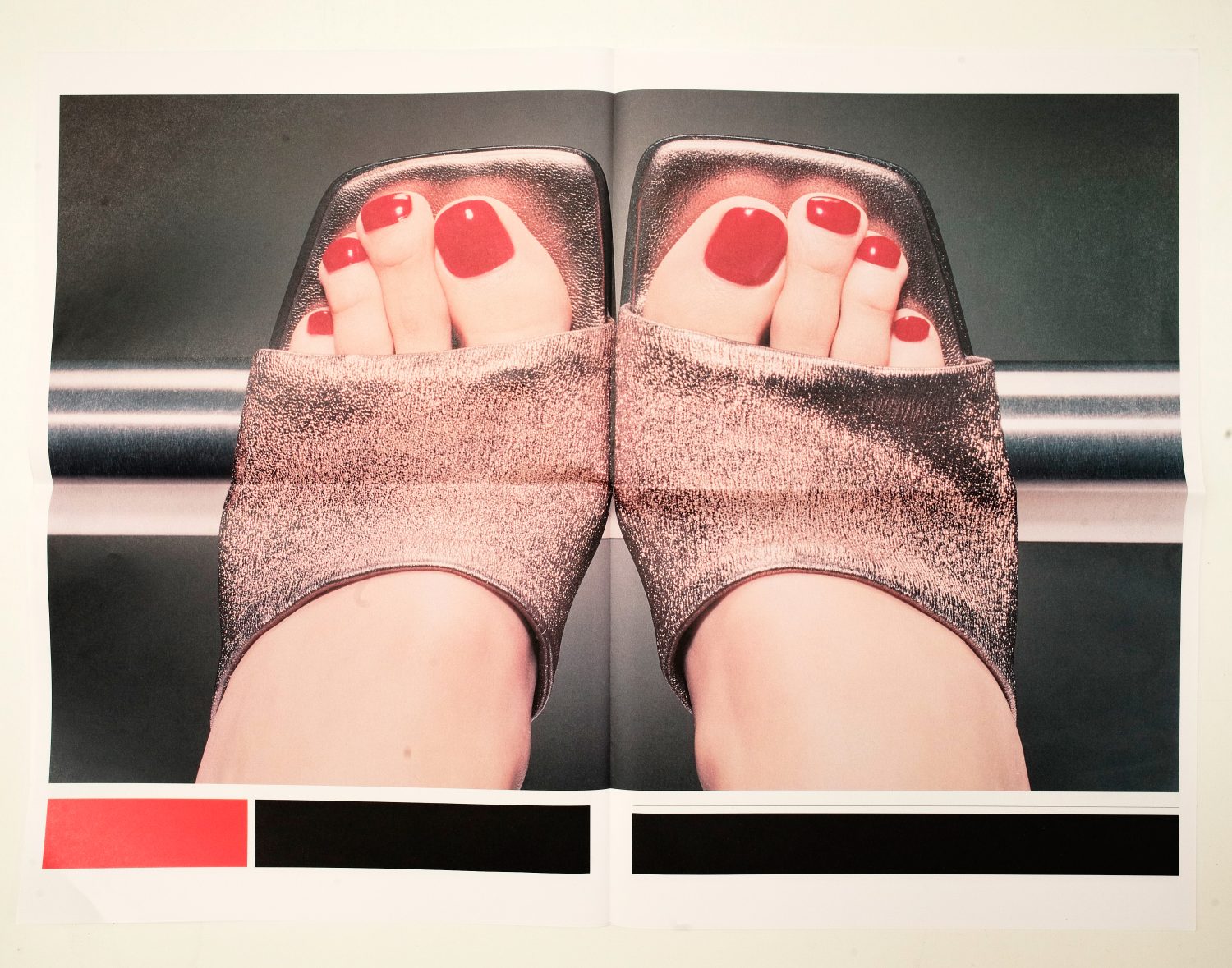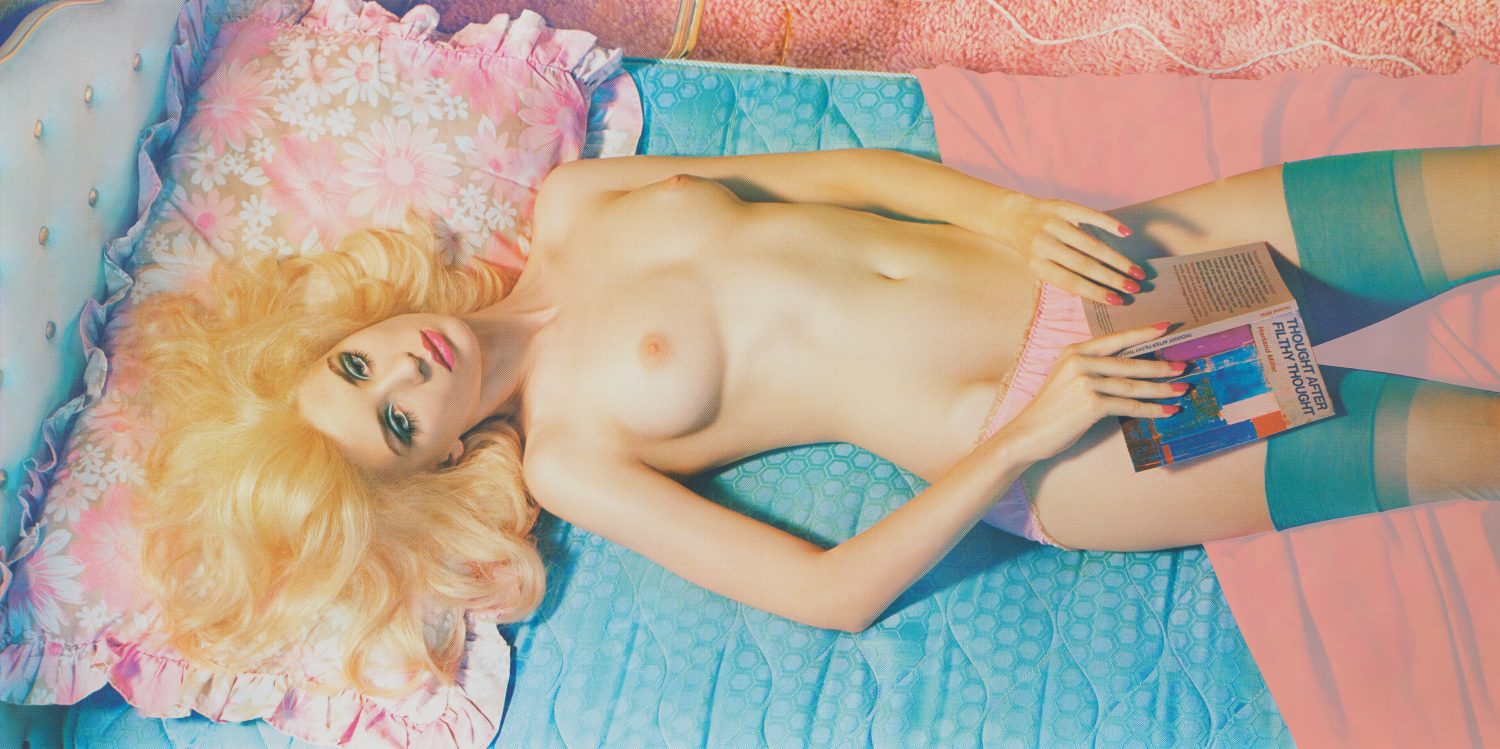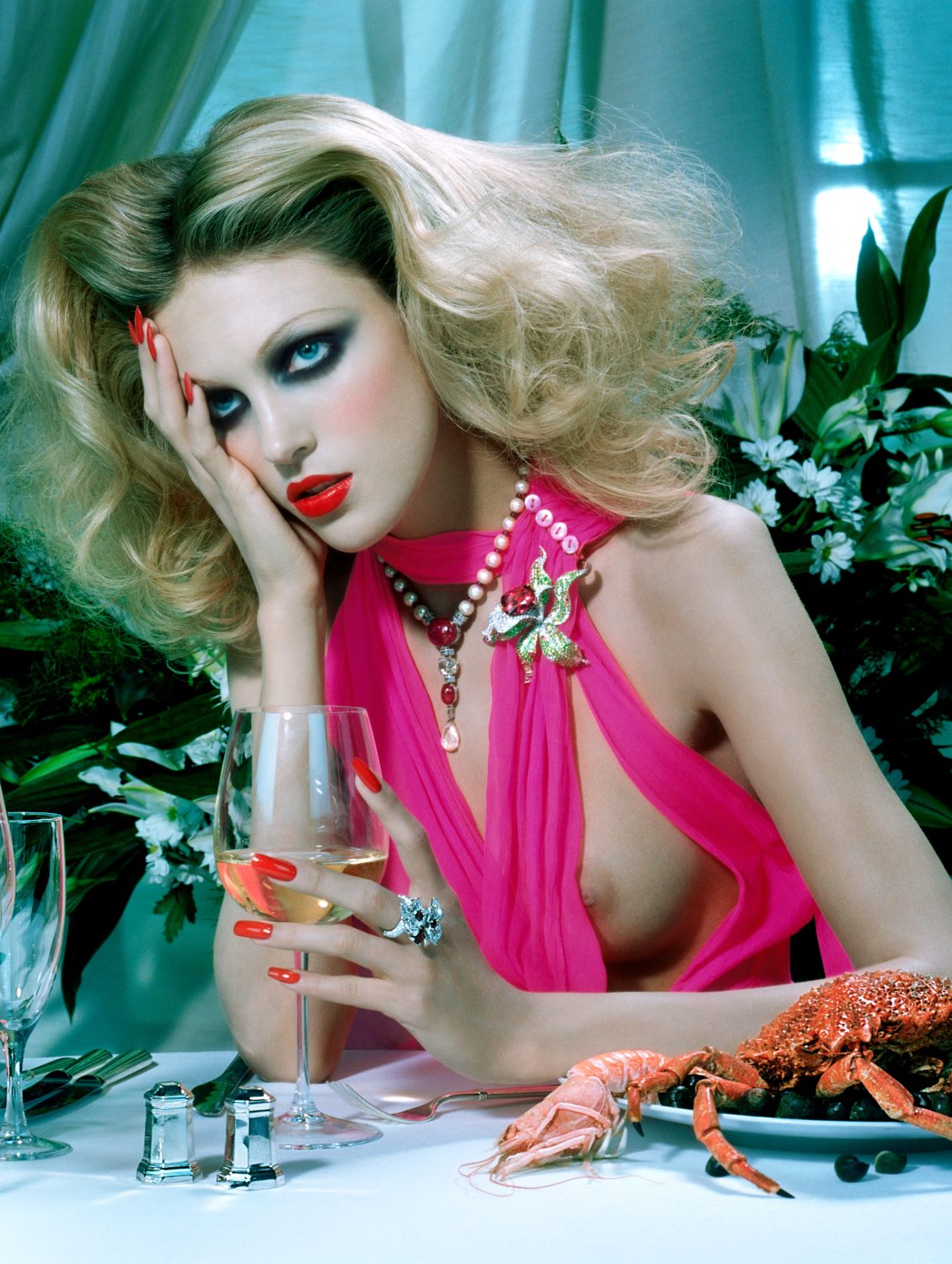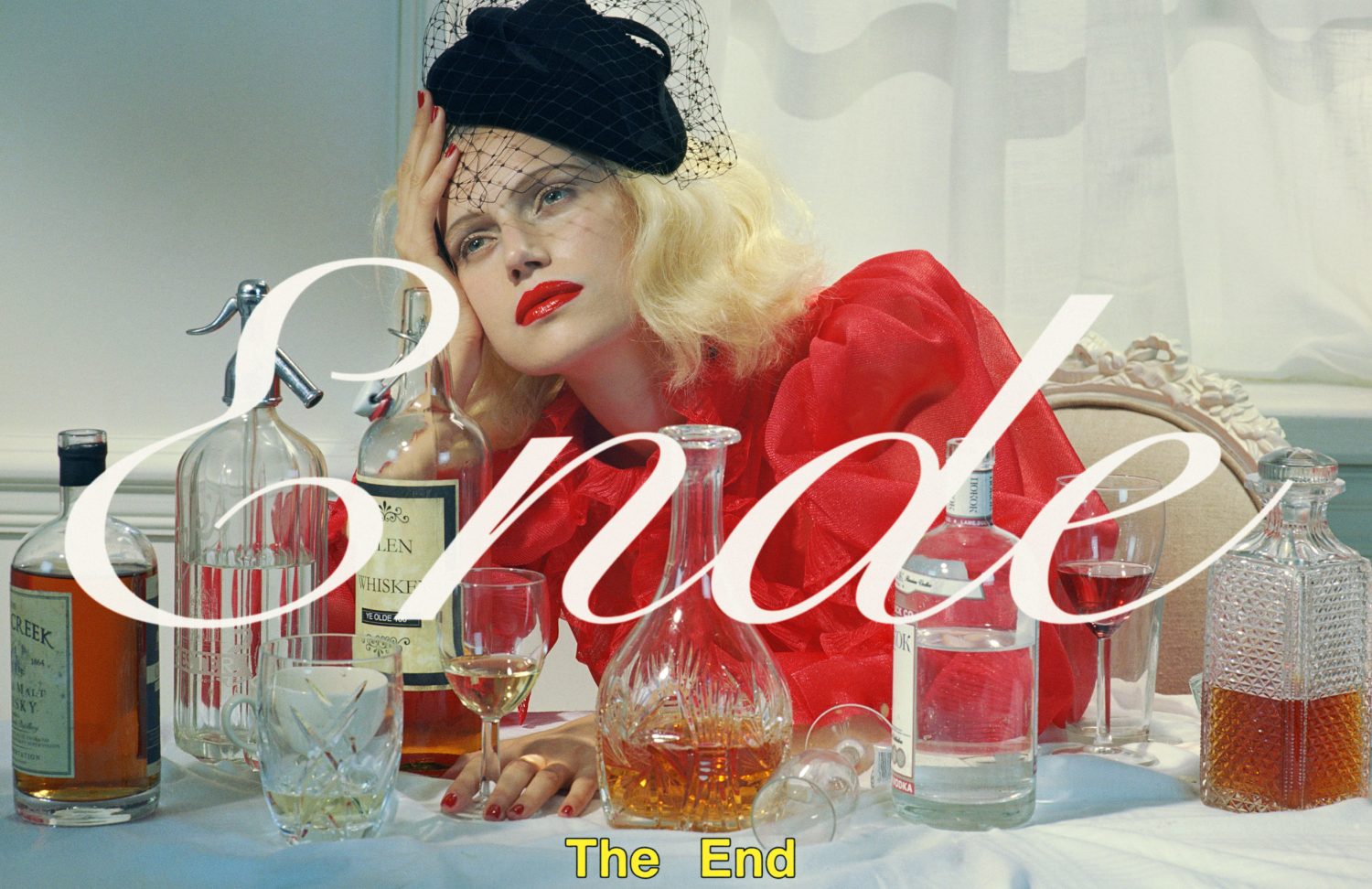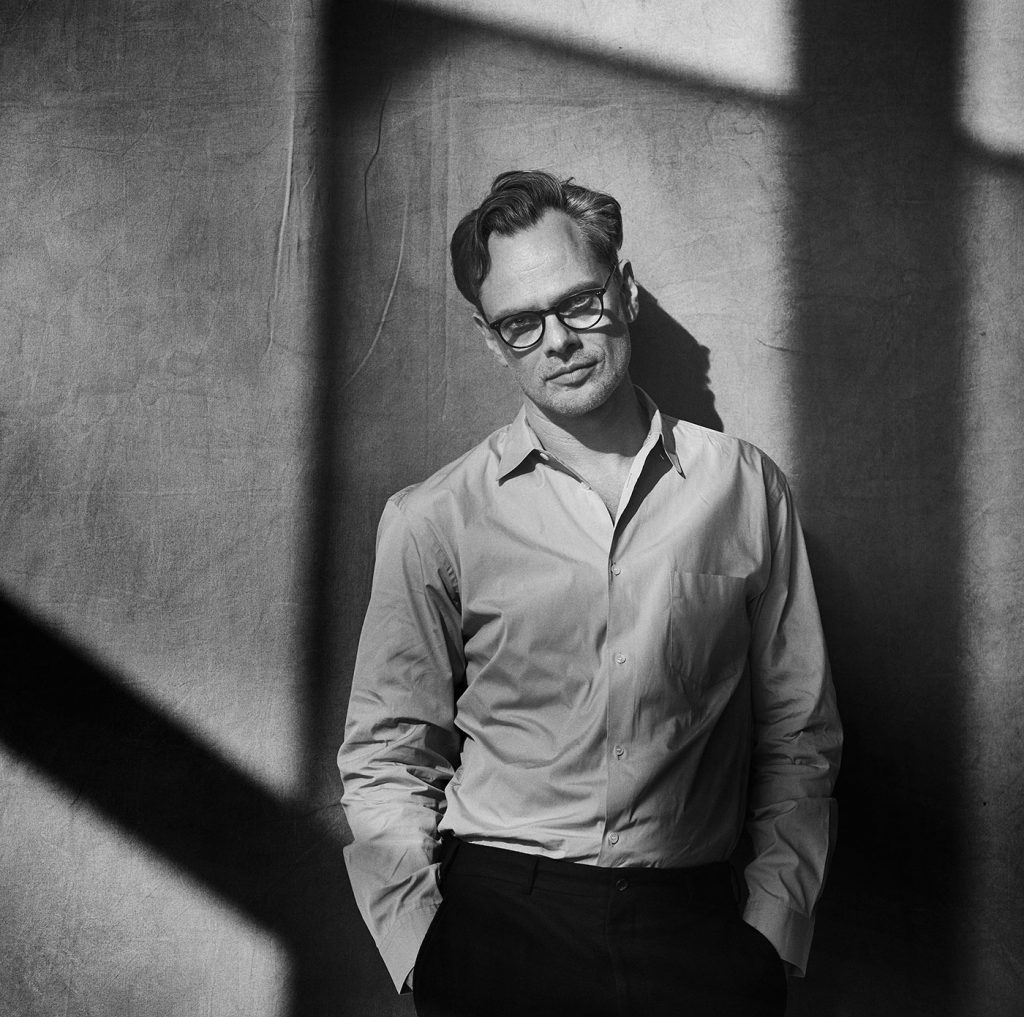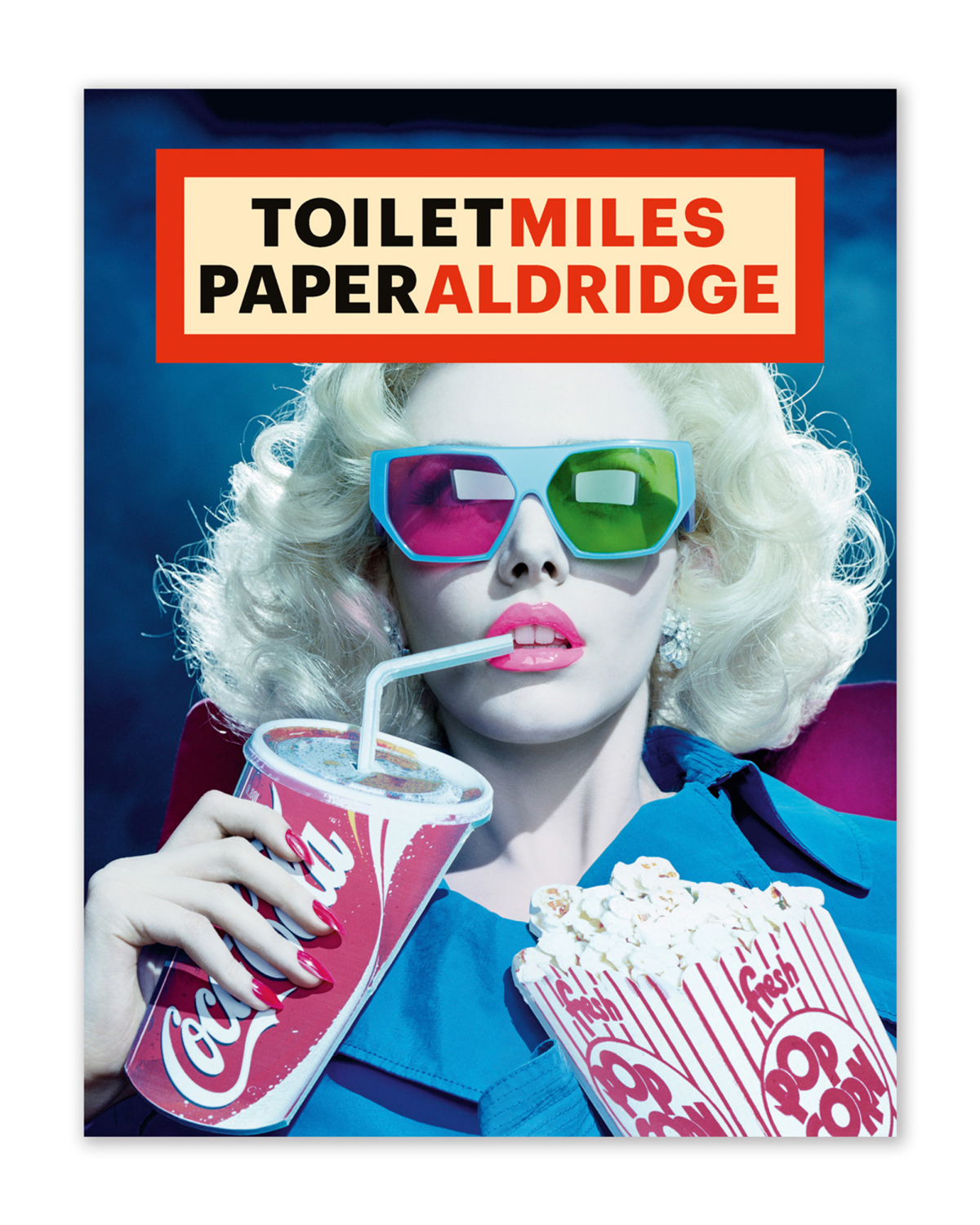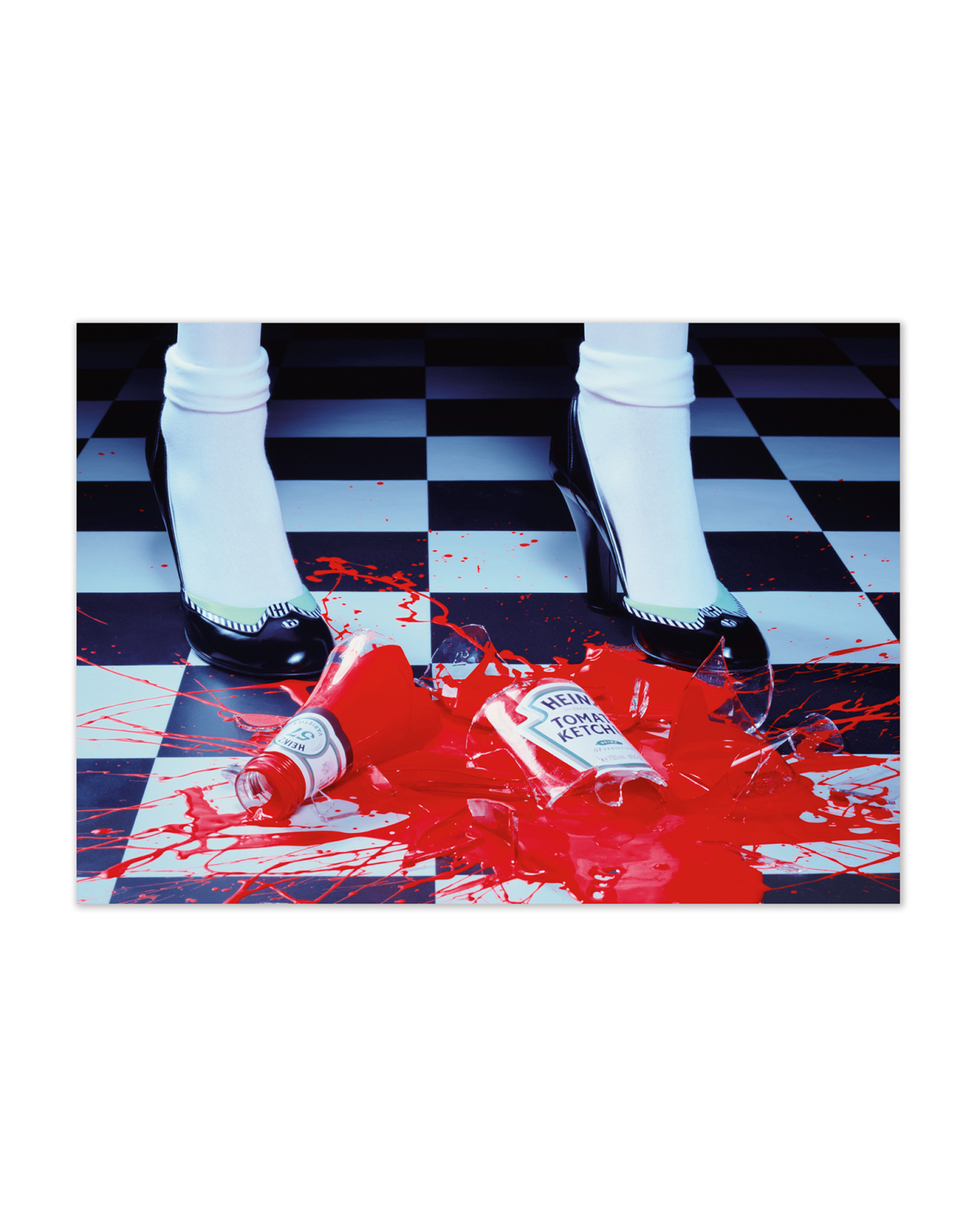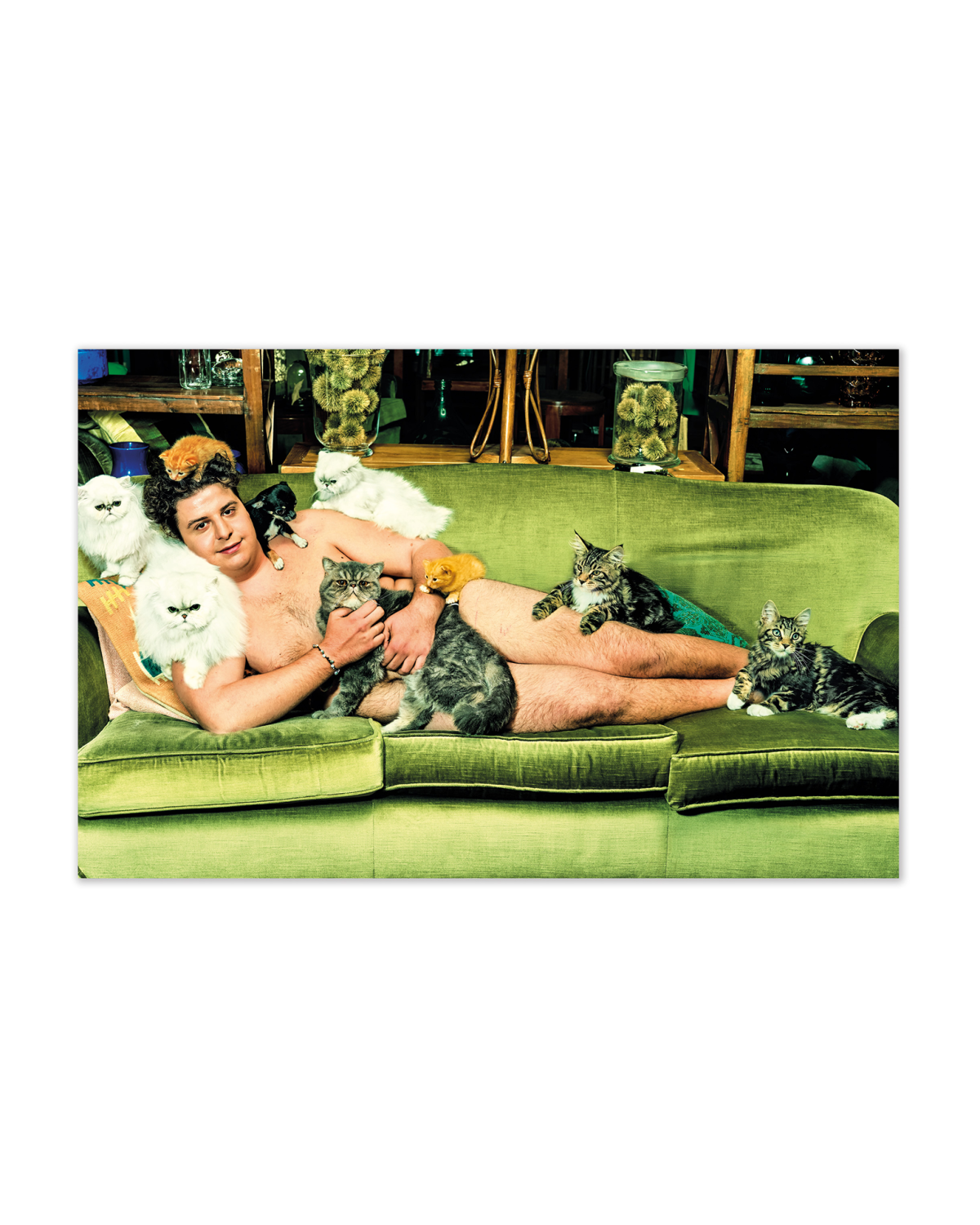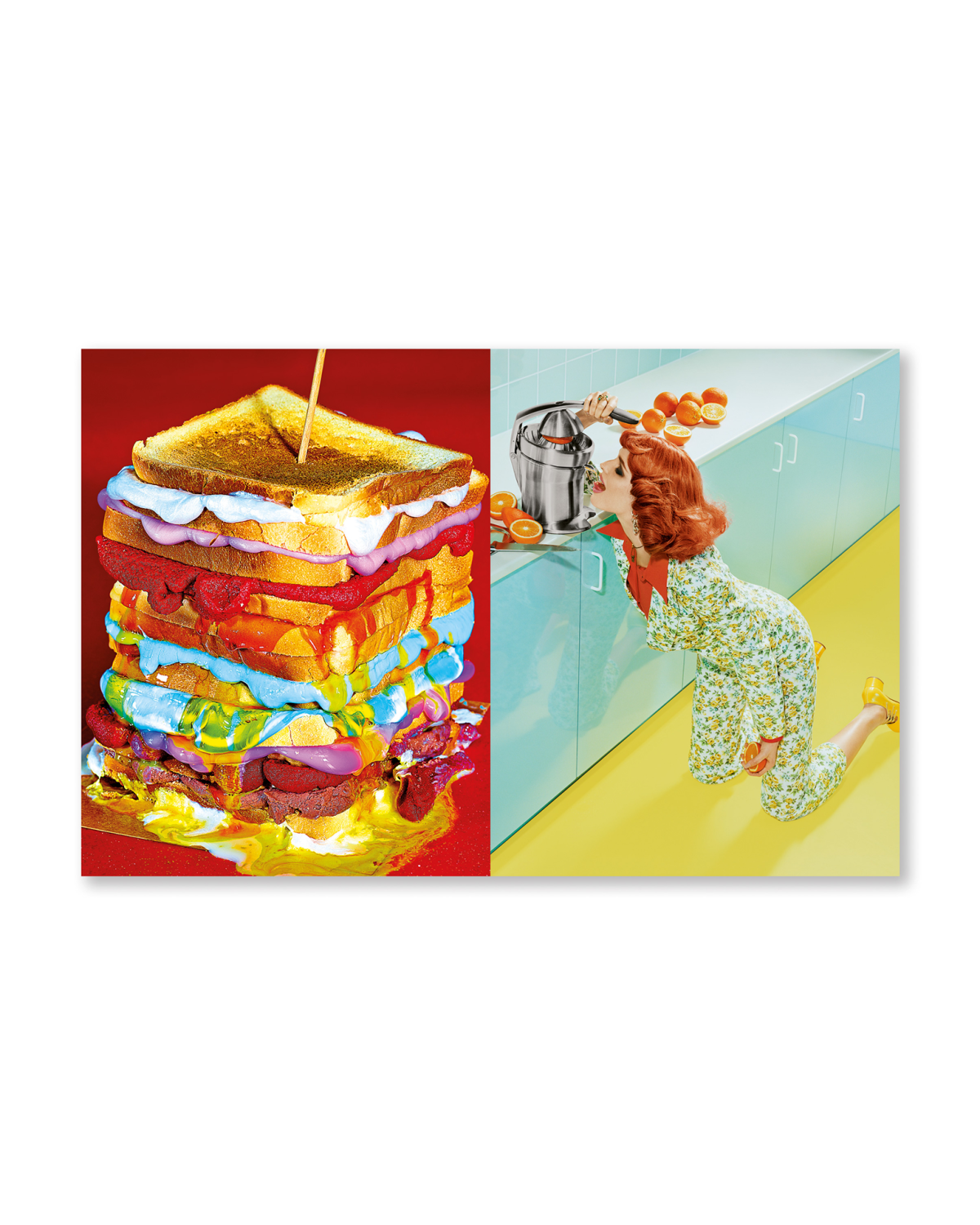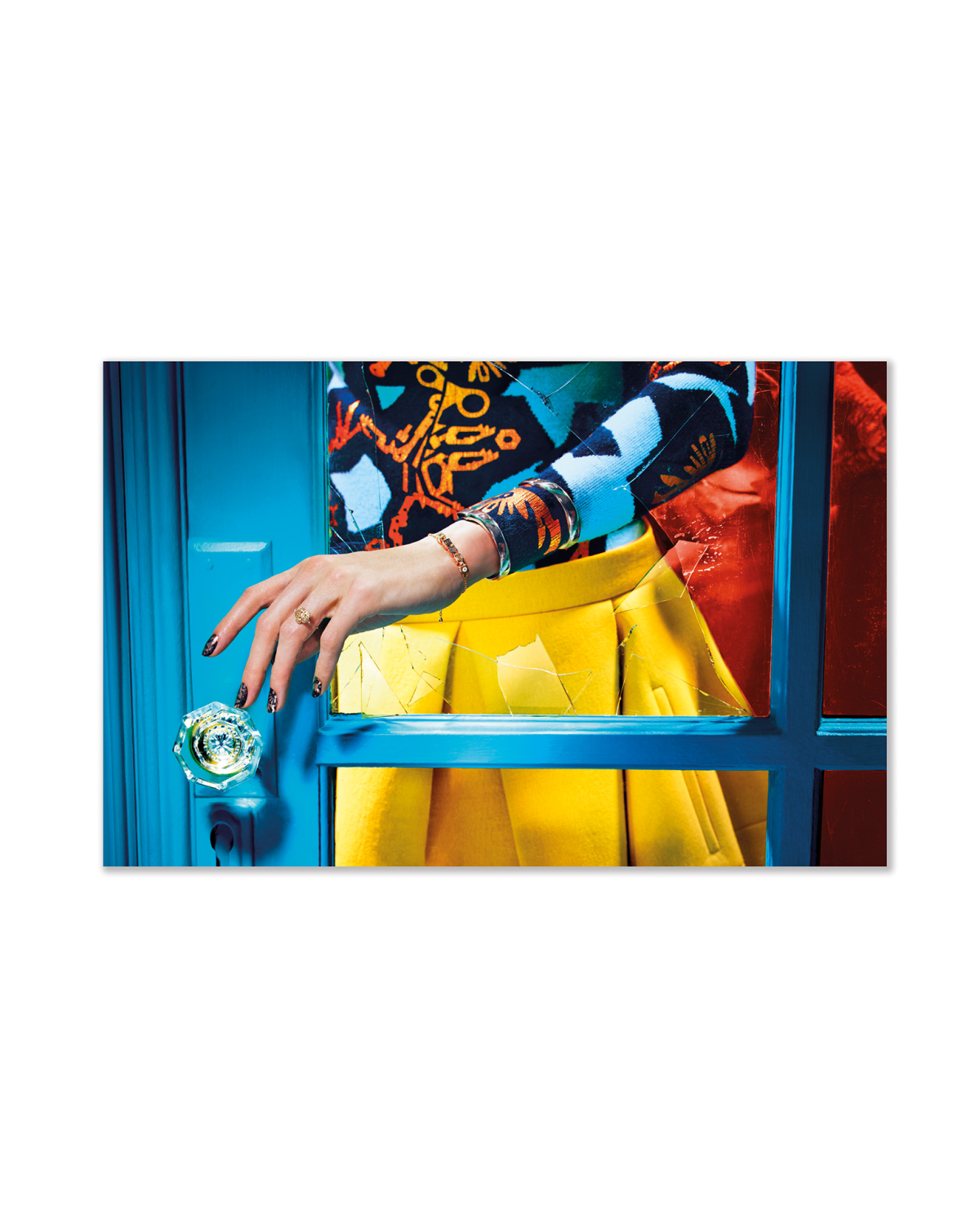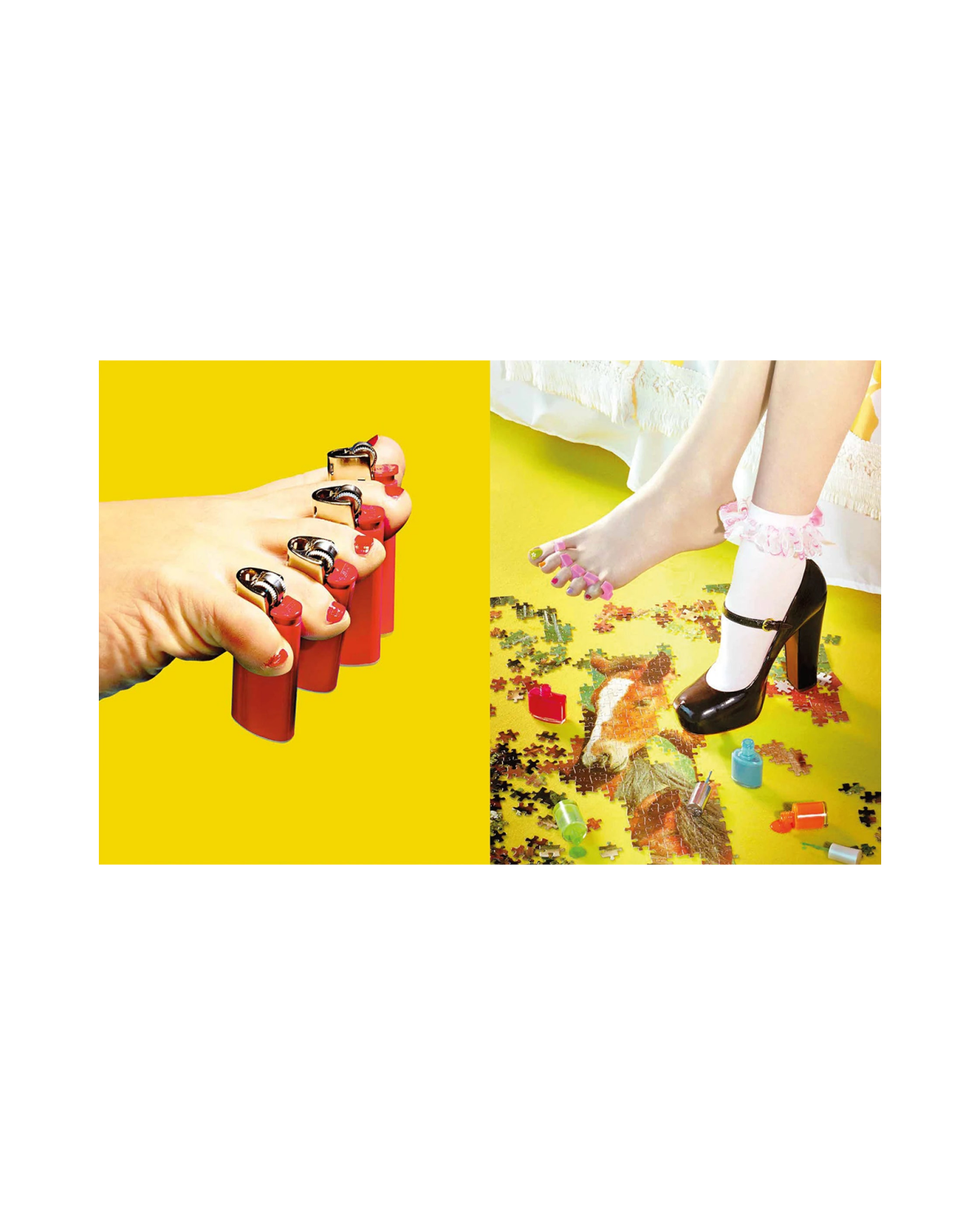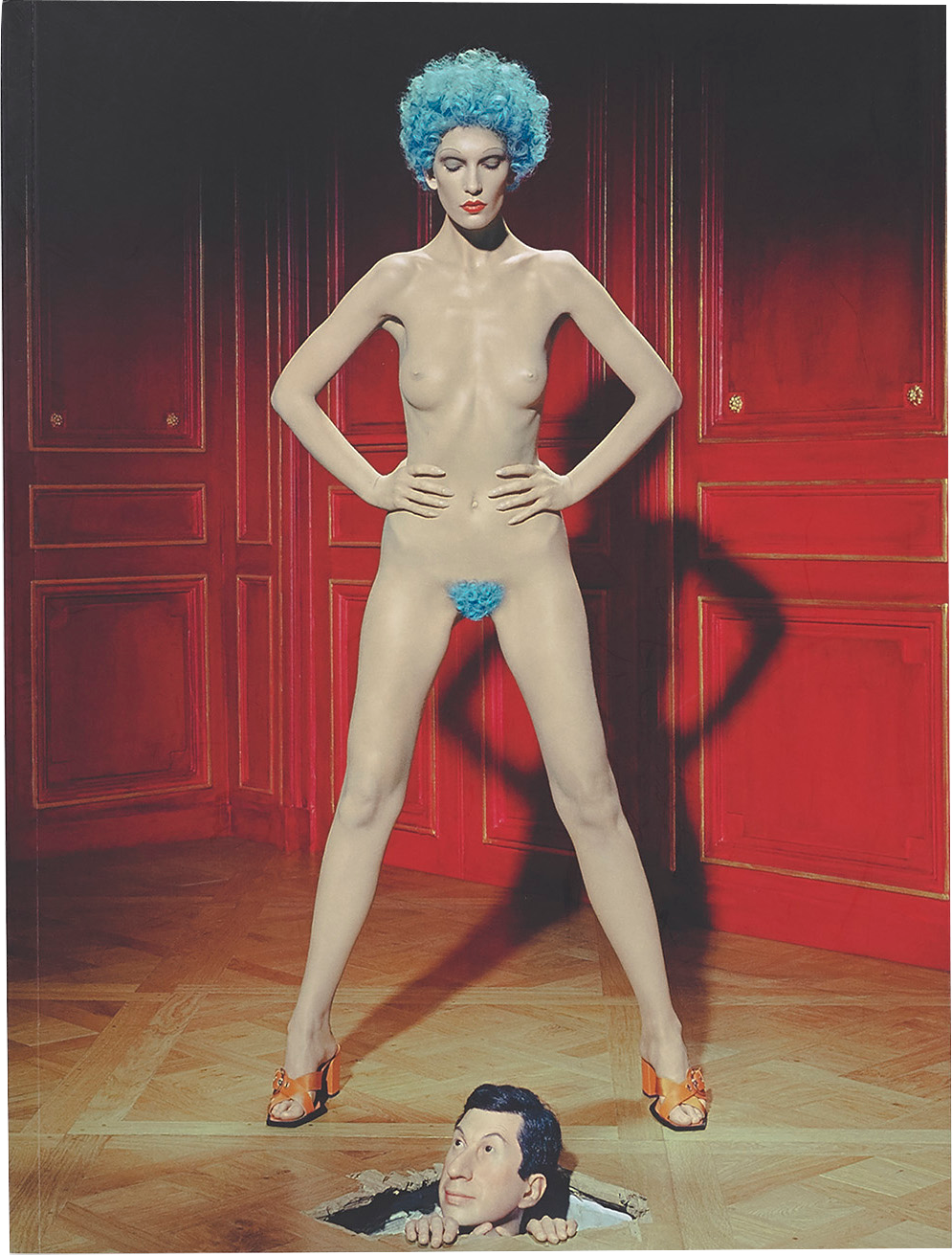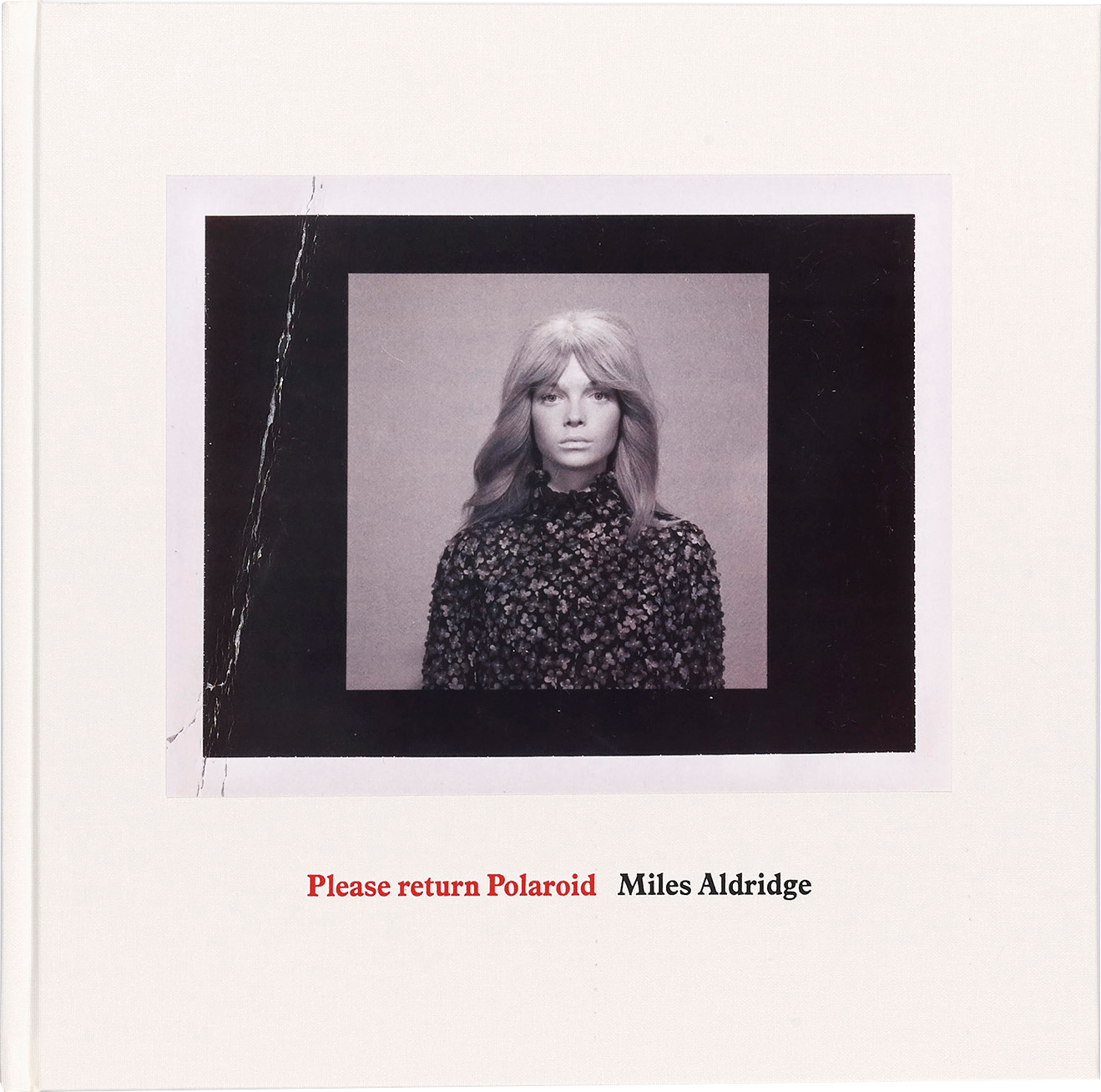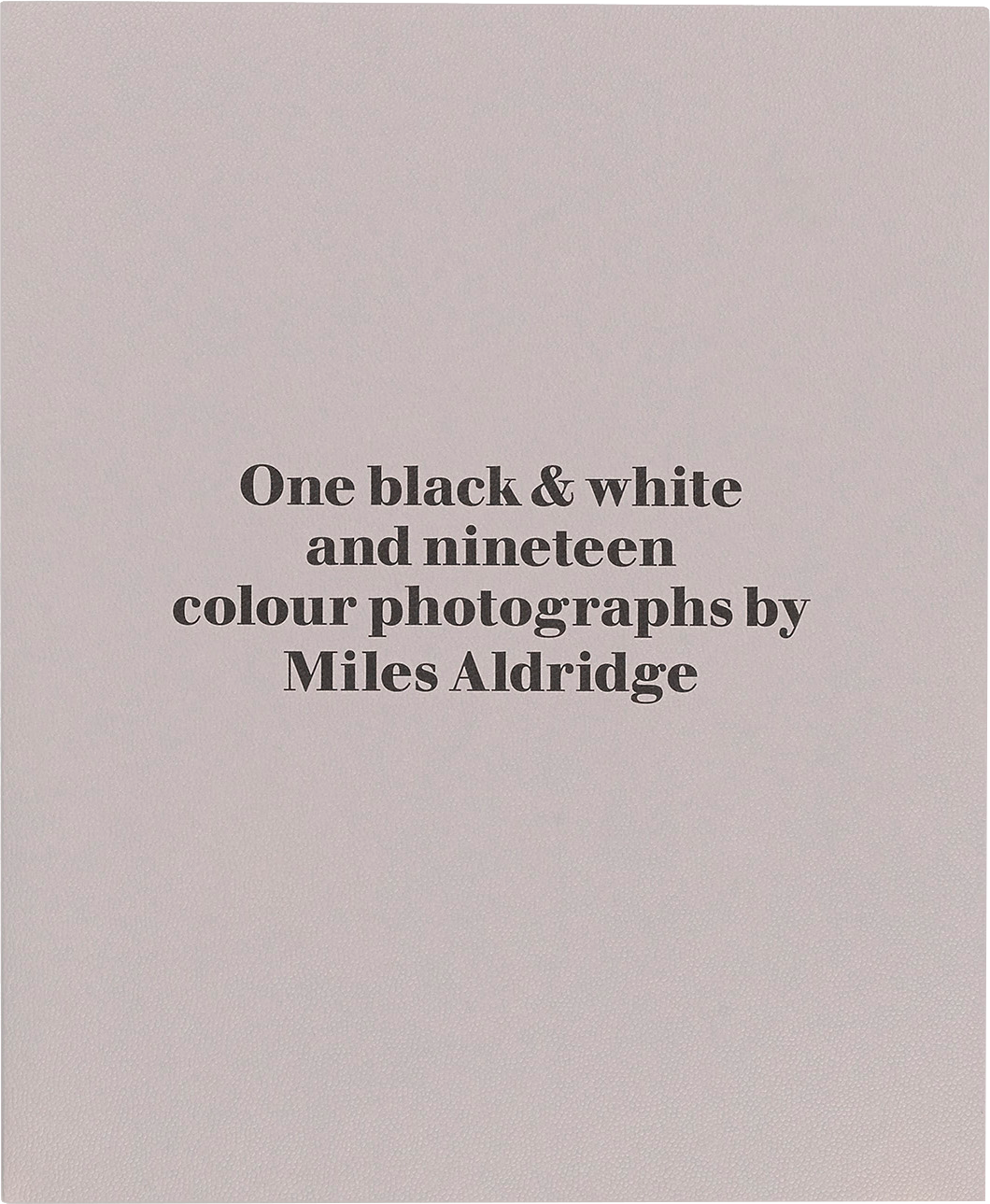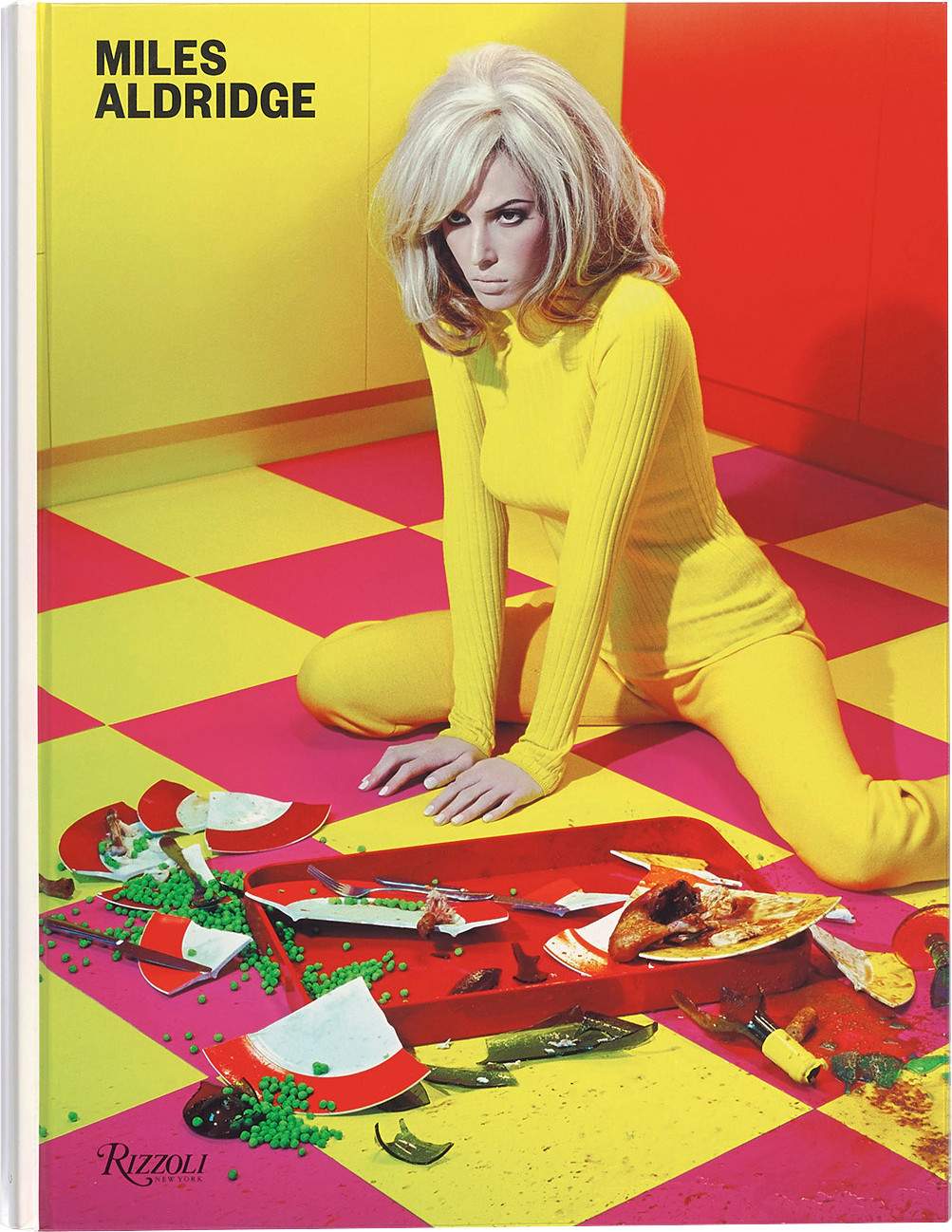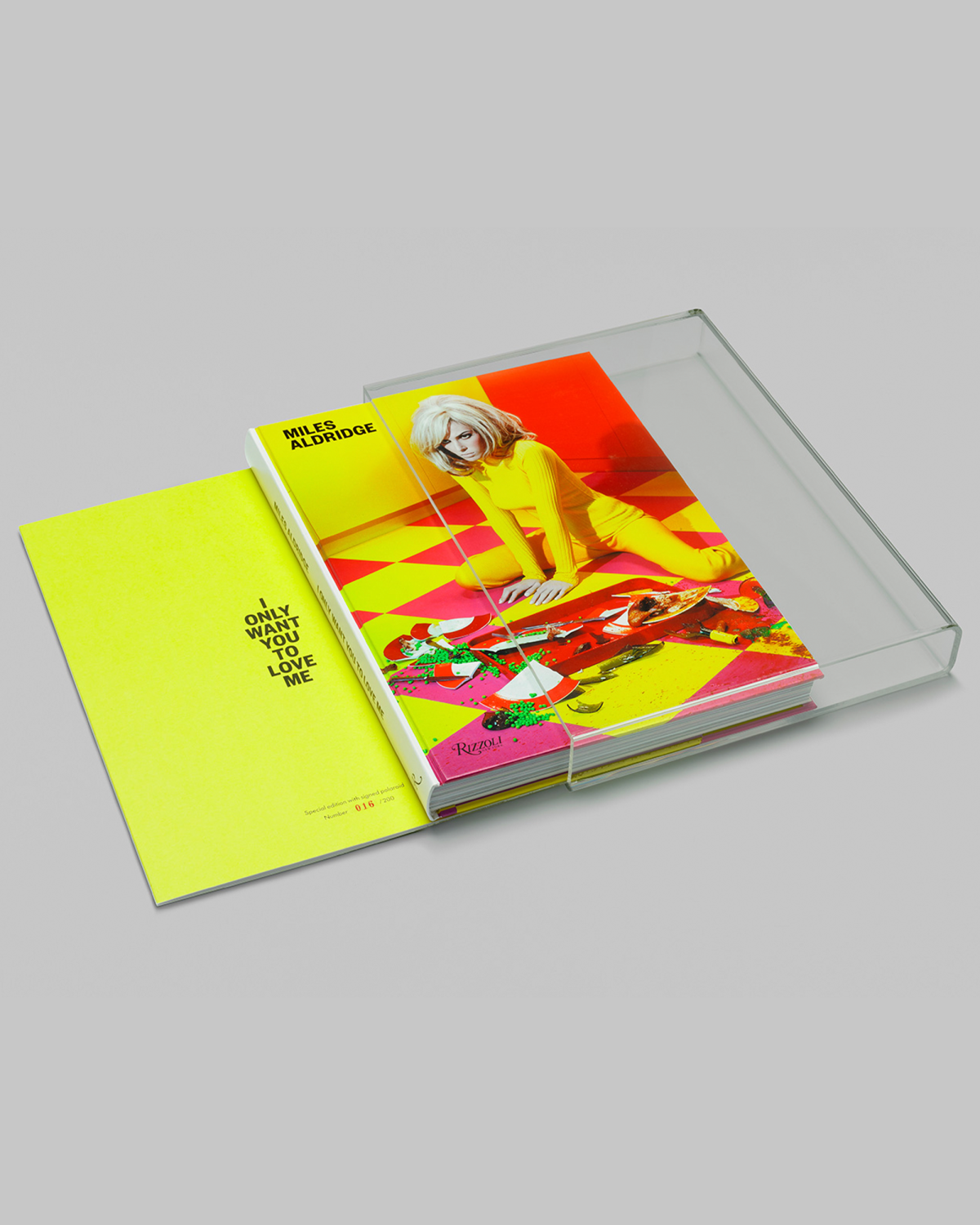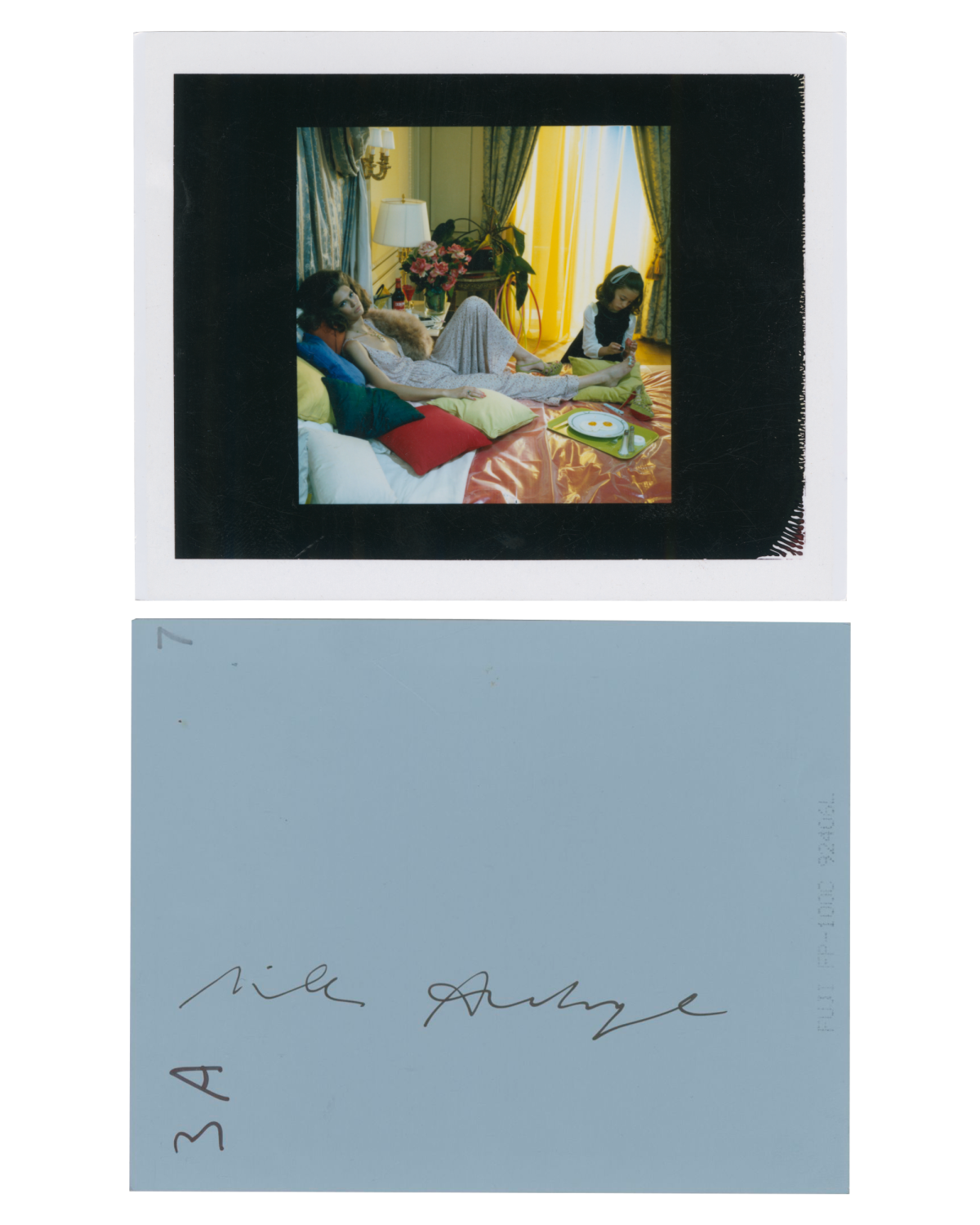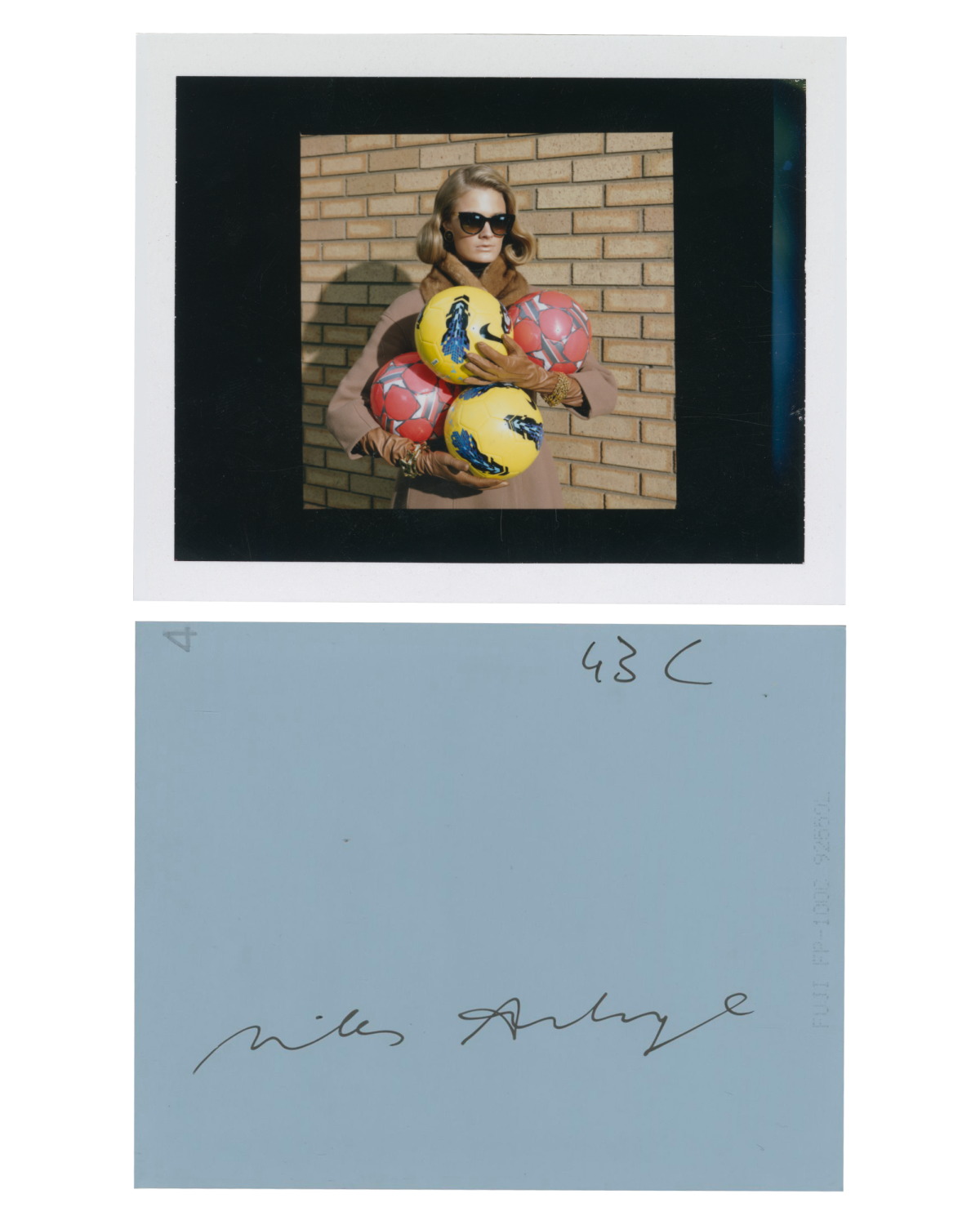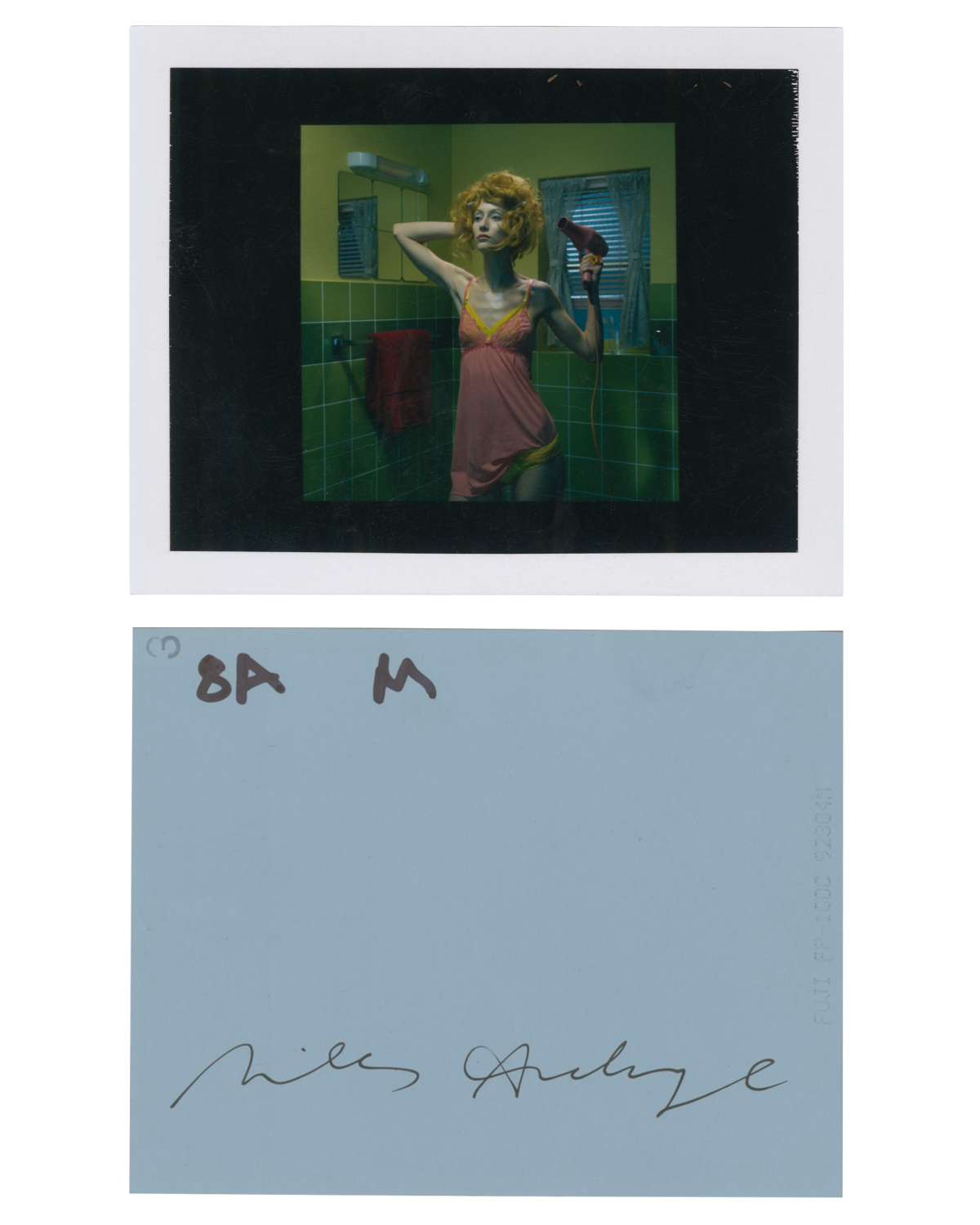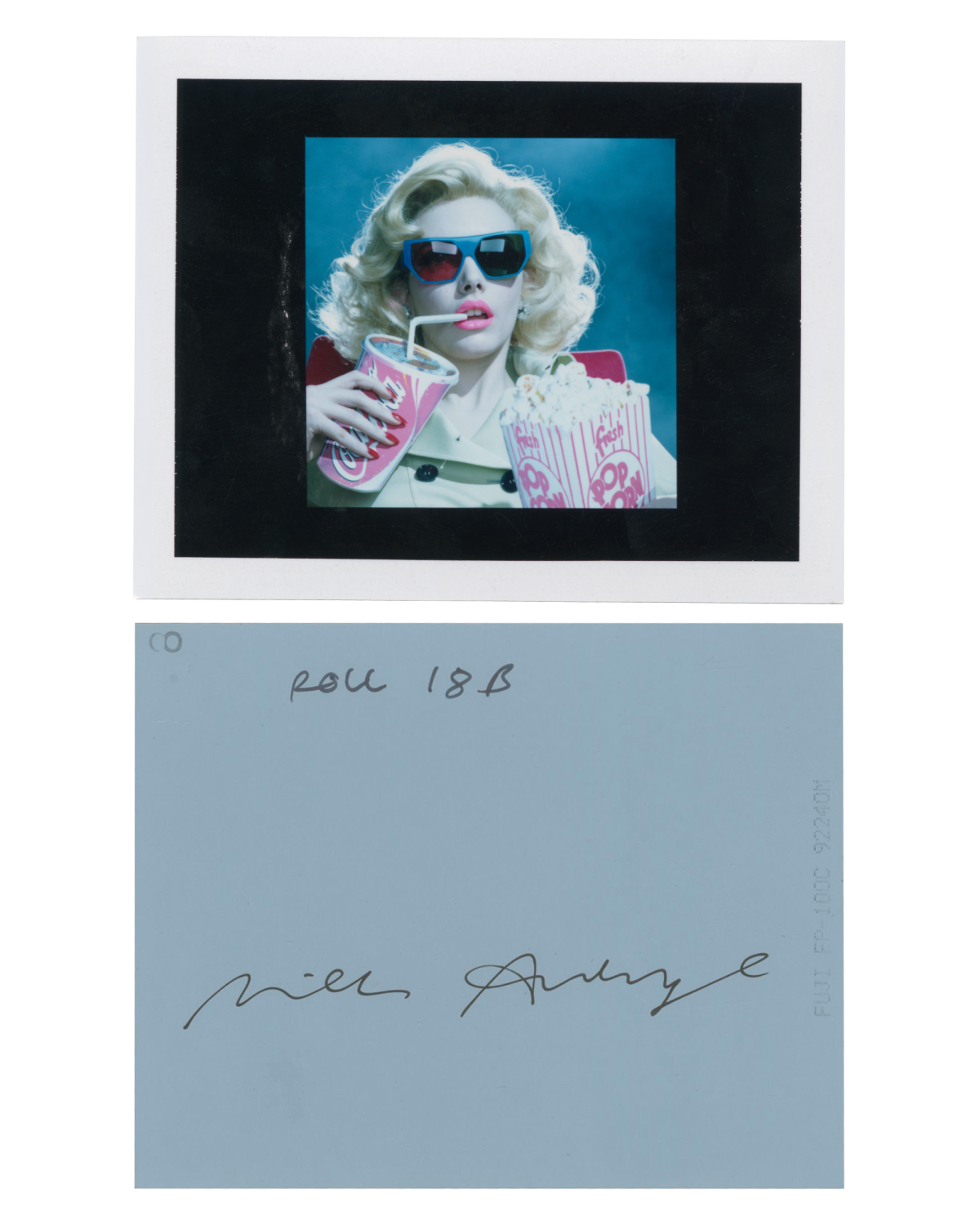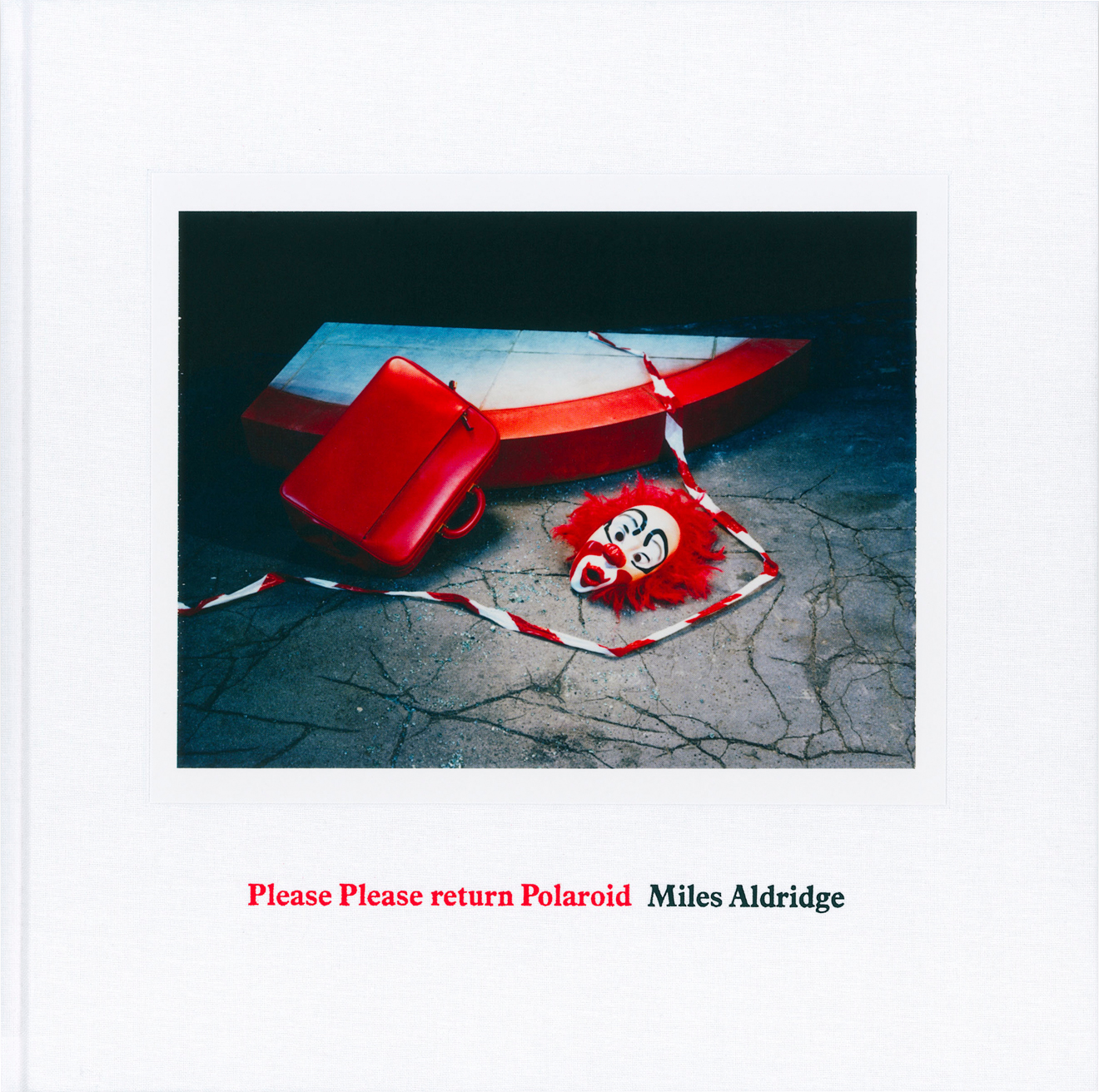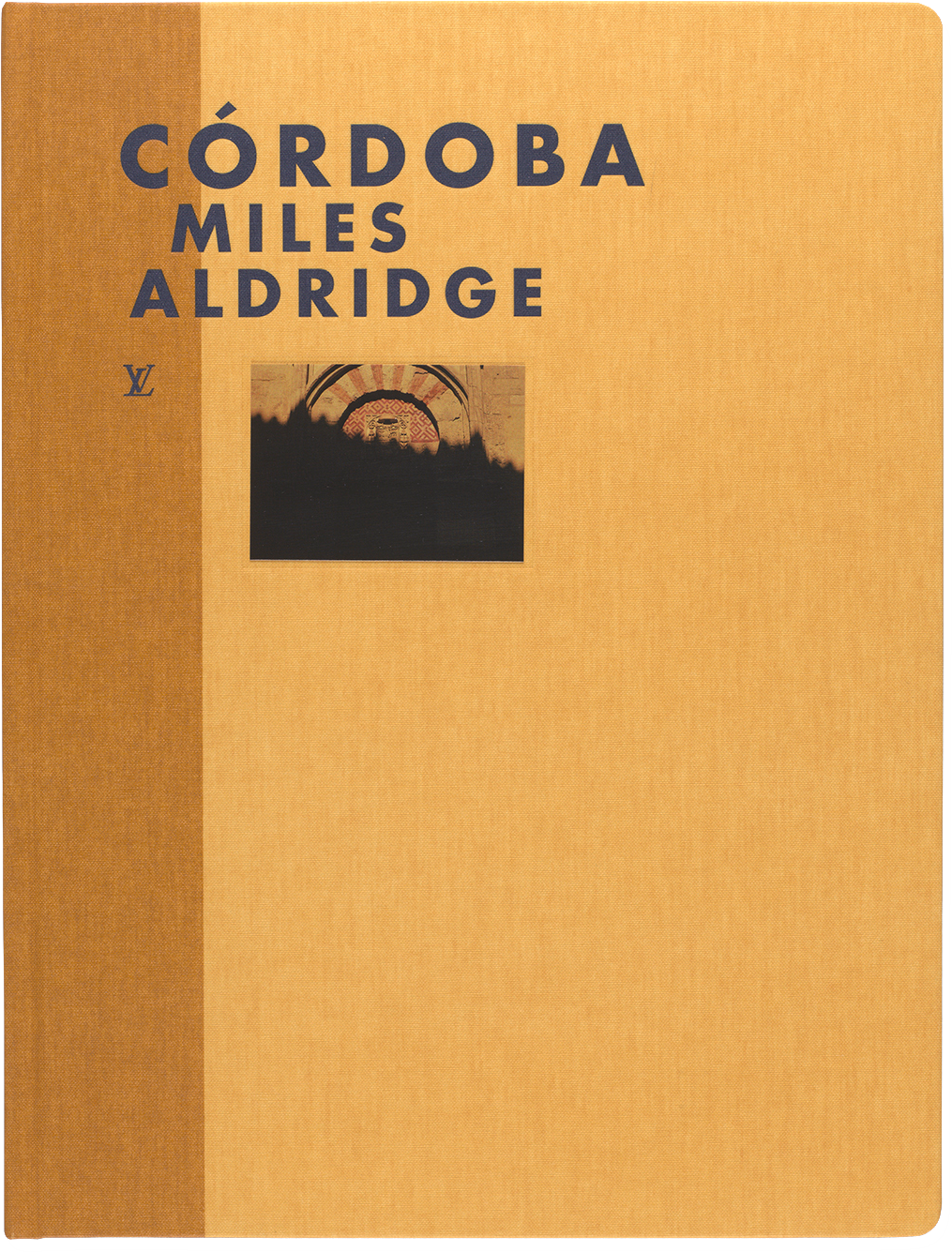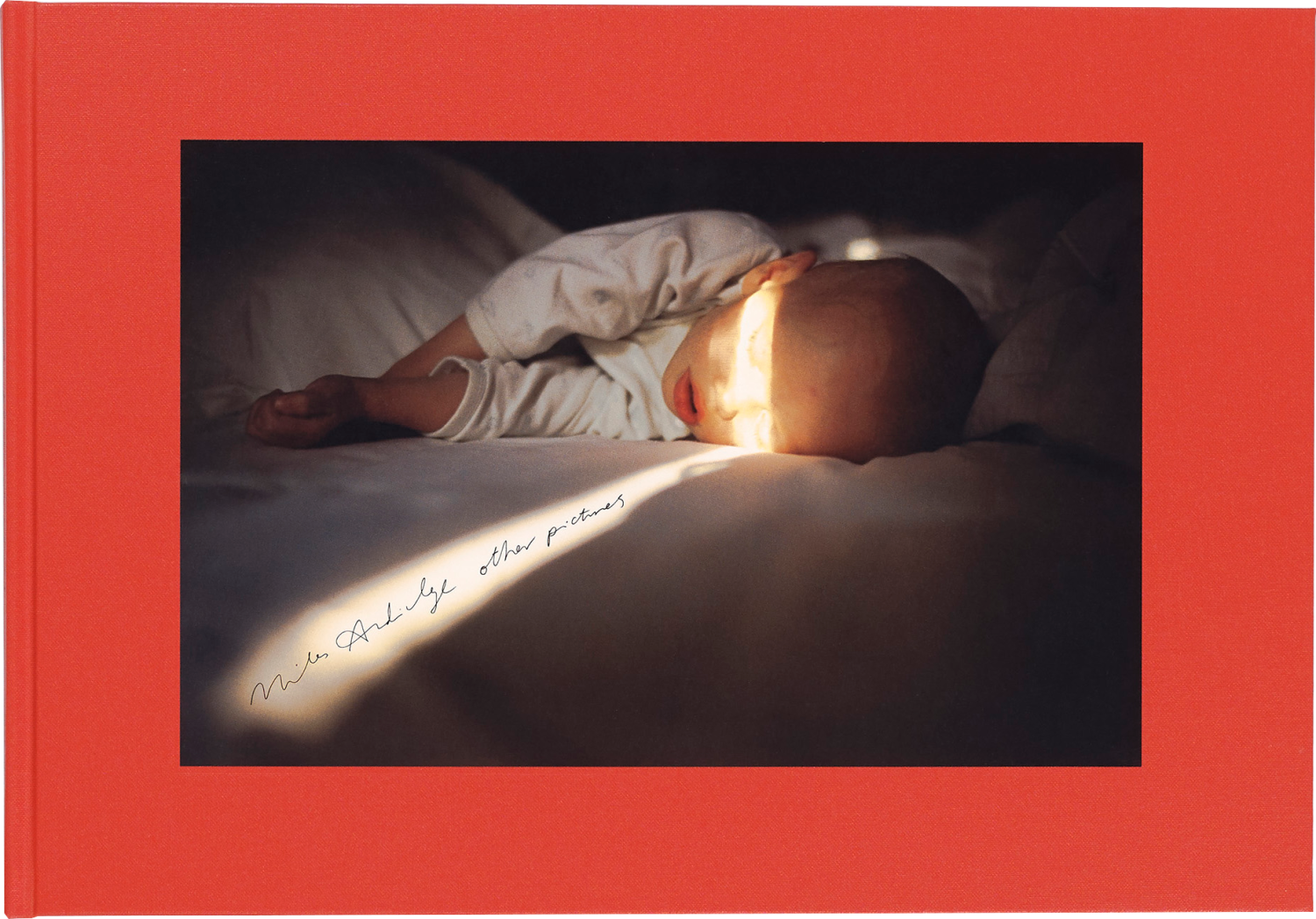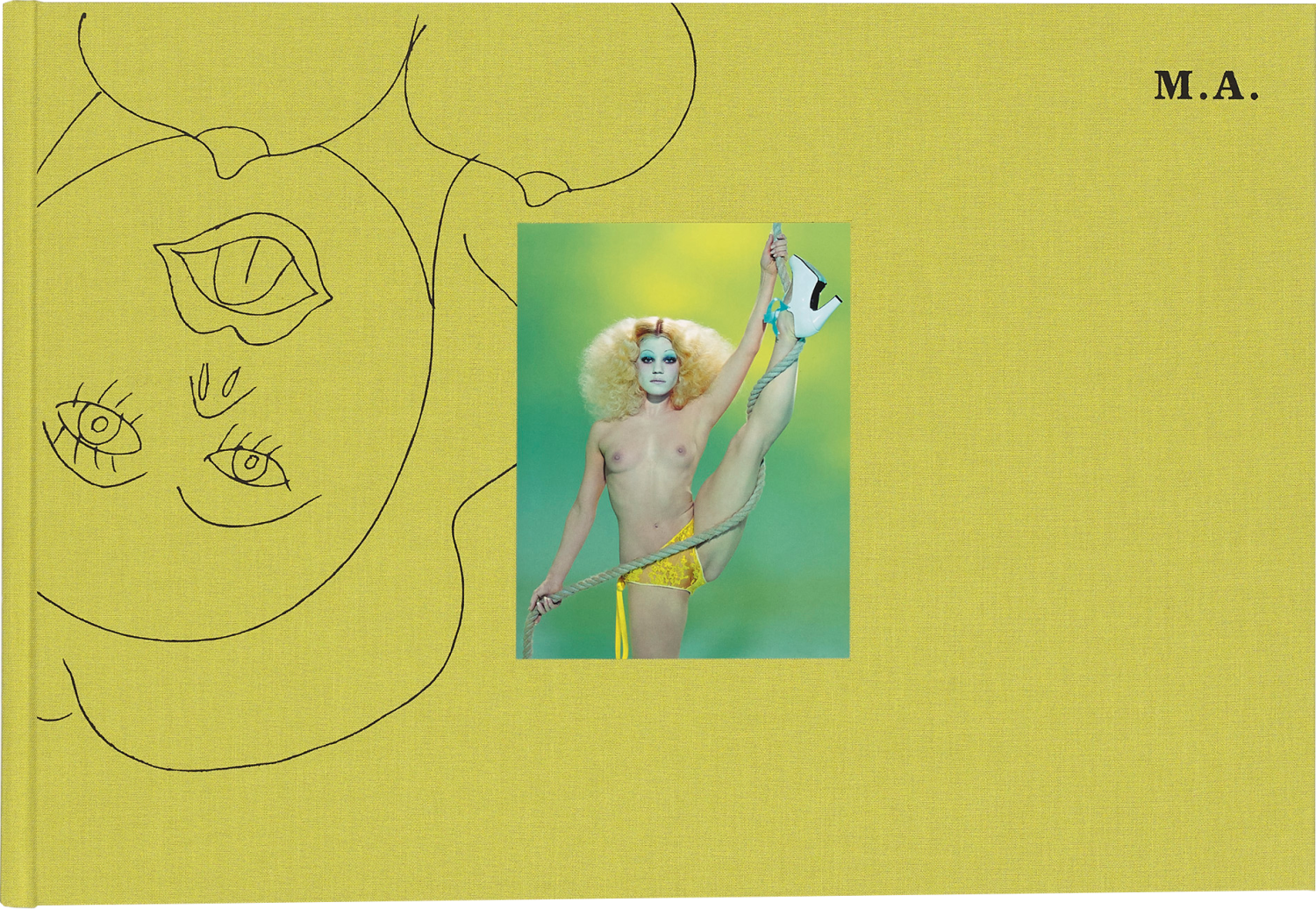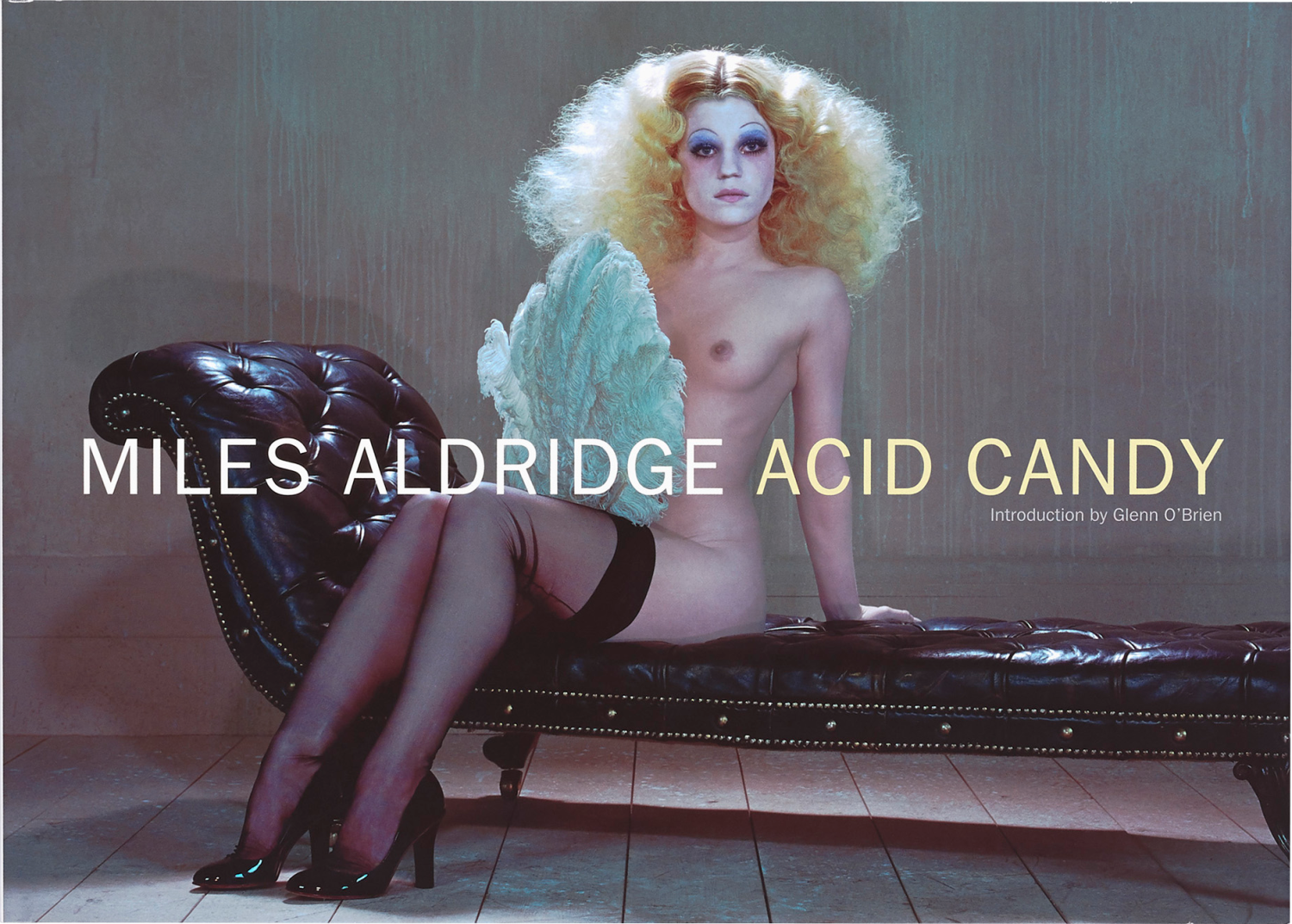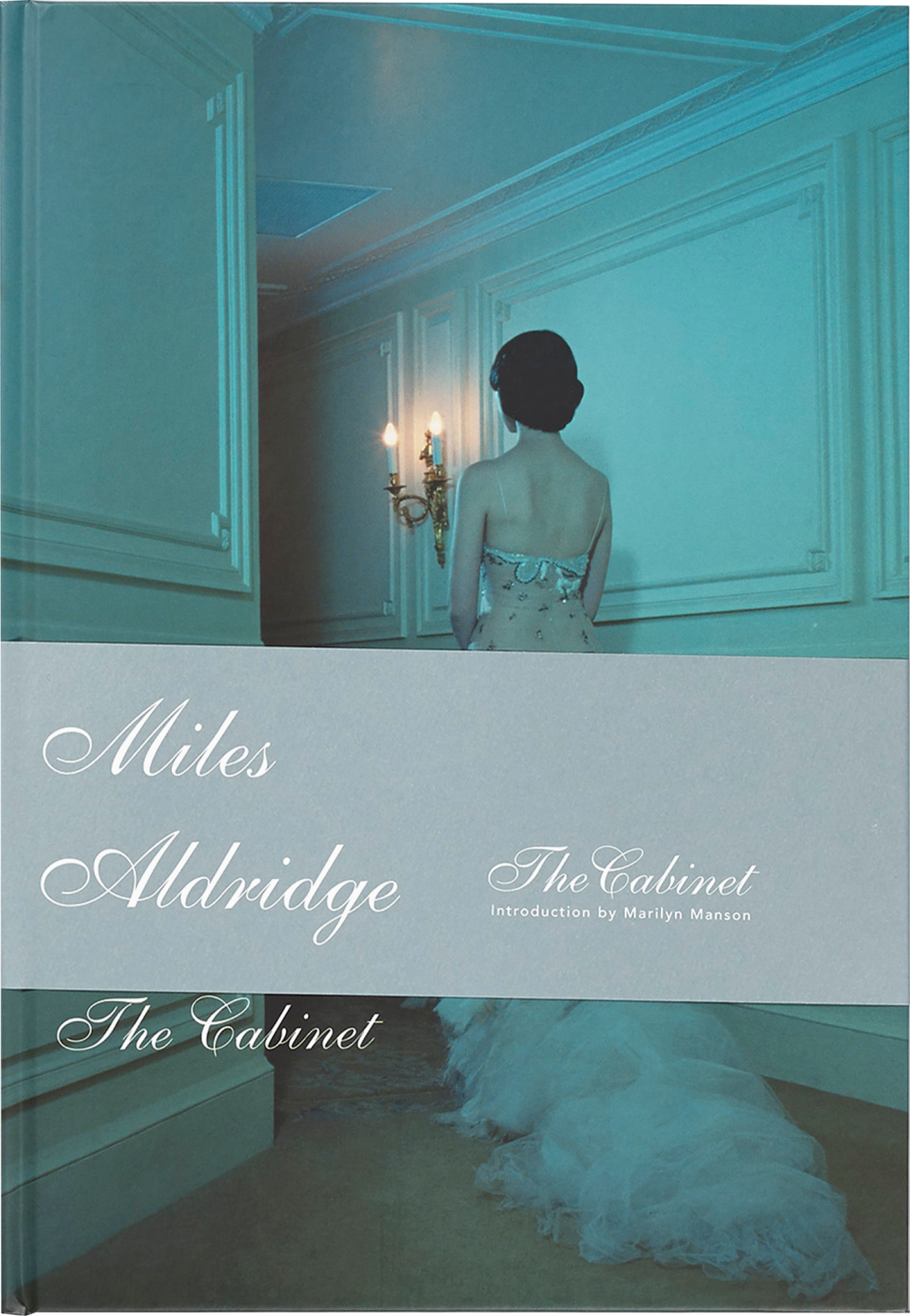Miles Aldridge
Biography
Miles sees a colour-coordinated, graphically pure, hard-edged reality. – David Lynch
Miles Aldridge (b. 1964, London) is a British artist whose vividly saturated, psychologically charged photographs occupy a distinctive space between cinema, painting, and fashion. Drawing on references from film noir, Pop Art, and religious iconography, Aldridge constructs meticulously staged mise-en-scènes that explore themes of the false promise of luxury and the assorted fictions of modern life. These glamorous, frequently eroticised images probe society’s idealised notions of domestic bliss, where sinister undercurrents swirl beneath a flawless surface.
Aldridge studied illustration at Central Saint Martins before beginning his career as an artist, who to this day remains one of the few photographers still shooting on film — developing a highly recognisable visual language rooted in analogue processes, saturated colour, and pre-visualised composition. His creative output encompasses large-scale C-type prints, Polaroids, screenprints, photogravures, and drawings.
Each new photographic narrative is developed by rendering his initial thoughts in ink or pencil sketches. These drawings and storyboards are an essential early stage in his creative process. He believes that ‘fiction and theatricality can be more truthful than documenting reality’ and translates his sketches into meticulously arranged compositions to create images reminiscent of film stills: frames snatched from a broader story. Aldridge notes that many of his favourite moments in cinema are, as he describes, ‘closeups of a woman’s face thinking’, and he shares Hitchcock’s ability to create powerful moments of suspense, turning viewers into voyeurs.
Aldridge has worked extensively with leading international publications such as Vogue Italia, The New York Times, Numéro, The New Yorker, The Face, Vanity Fair, and, in 2024, photographed Elton John for TIME magazine’s “Icon of the Year” cover. Other notable portraits include Viola Davis, Michelle Yeoh, Maisie Williams, Sophie Turner, Donatella Versace, Michael Fassbender, and David Lynch. He has collaborated with artists such as Maurizio Cattelan, Gilbert & George, and Harland Miller. In 2025, he partnered again with Cattelan on ToiletMiles PaperAldridge, a special edition of ToiletPaper Magazine dedicated to his cinematic vision.
Major institutional exhibitions include Virgin Mary. Supermarkets. Popcorn. at Fotografiska (New York, Stockholm, and Berlin), I Only Want You to Love Me at Somerset House (London), and Miles Aldridge Colour Pictures 2000 – 2022 at Hangaram Design Museum (Seoul). Aldridge’s work is held in the permanent collections of The V&A, The National Portrait Gallery, The British Museum, ICP New York, Palais Galliera Musée de la Mode de la Ville de Paris, and Fondation Carmignac, among others.
Selected works
See AllExhibitions
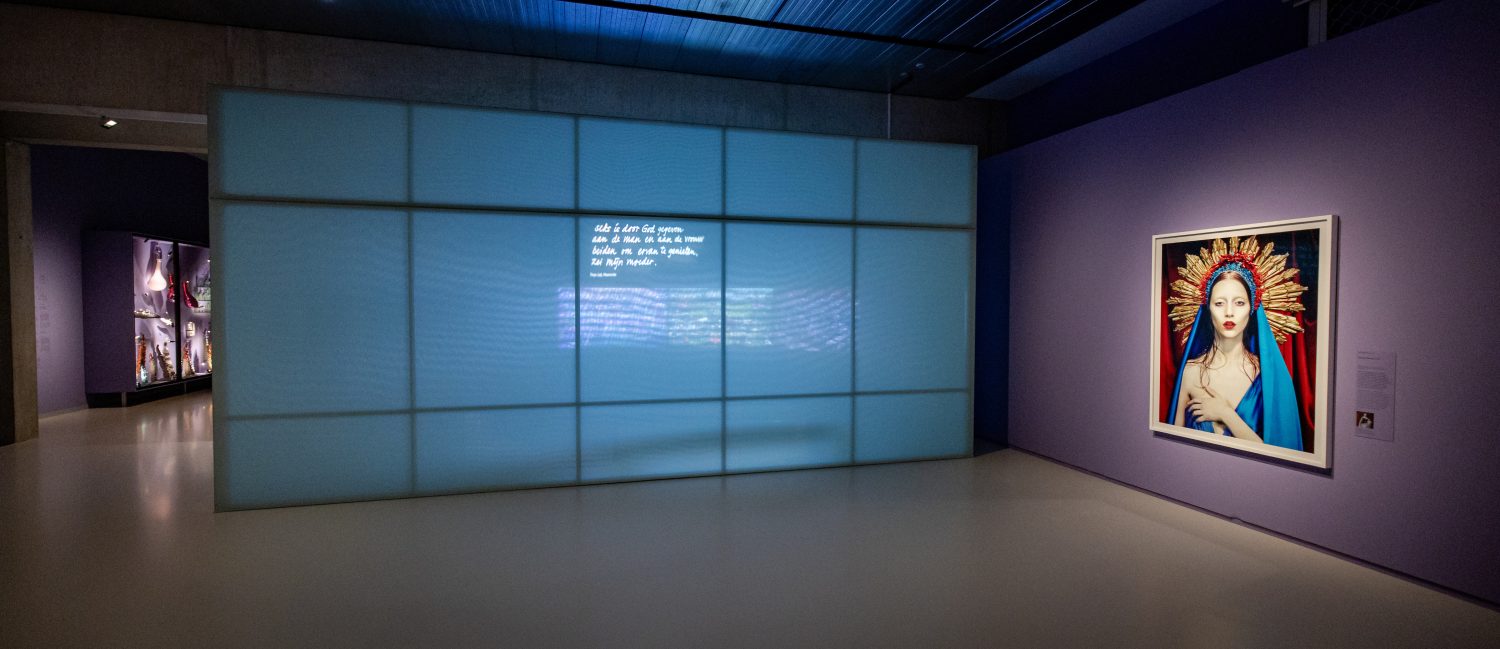
The exhibition explores the evolving perspectives on eroticism through the ages, from the late Middle Ages to the sexual revolution of the 1960s, and into today’s era of increasing prudishness and sexualization.
Visitors will journey through the tension between concealment and revelation, desire and seduction, love and contemplation. Eroticism – Beyond beauty and shame extends beyond traditional themes of beauty, shame, arousal, and sex; it encapsulates love, lust, and the taboos that intertwine with these elements. By showcasing both classical and contemporary works, the exhibition invites viewers to explore the many layers of eroticism and its evolving, universal significance.
Featuring pieces from regional Limburg collections and internationally renowned works, the exhibition offers a platform for personal interpretation. Each artwork invites reflection on the dynamic and multifaceted nature of eroticism, revealing its role in shaping individual and collective narratives across time and cultures.
TOILETMILES PAPERALDRIDGE
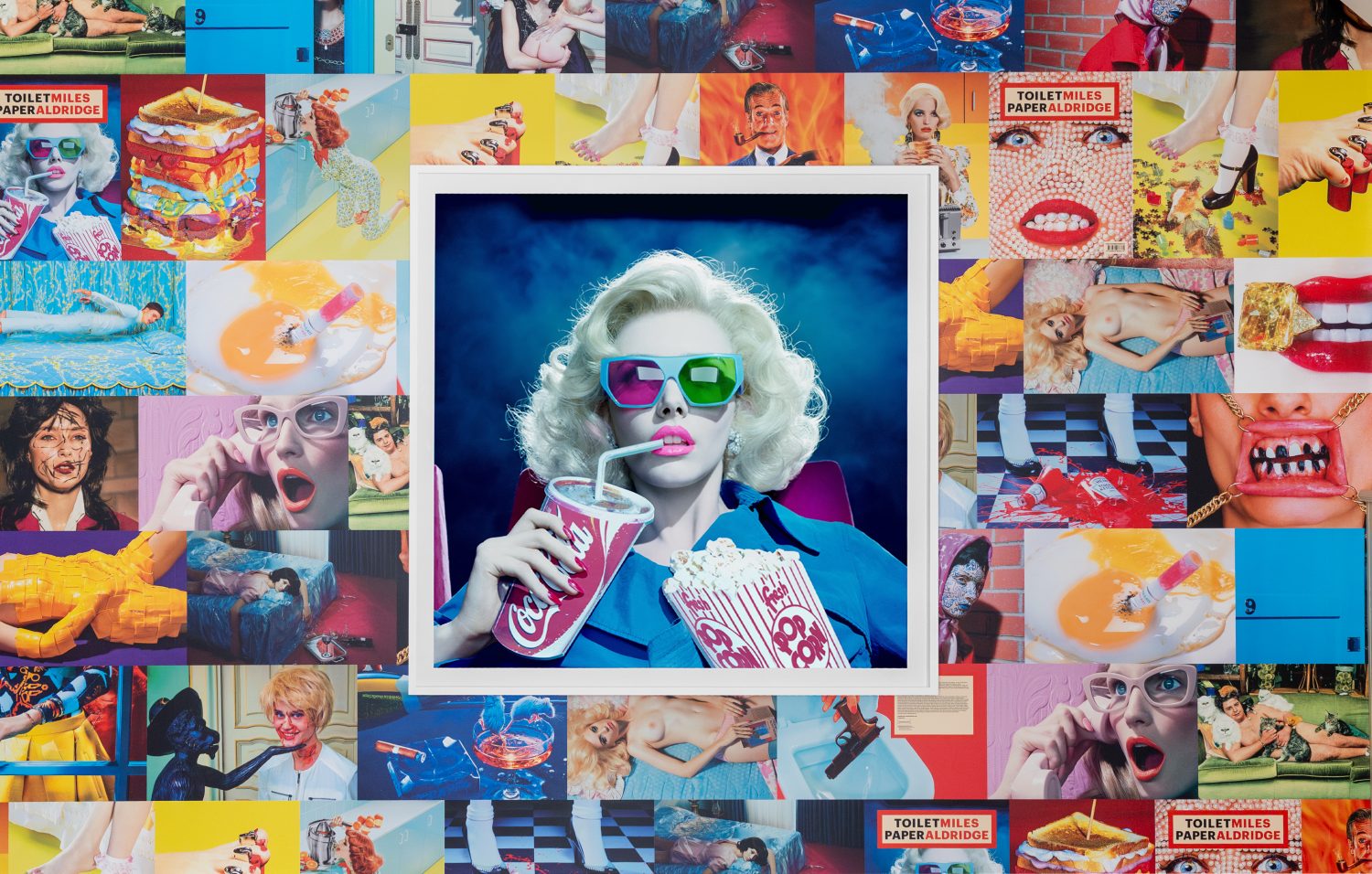
Virgin Mary. Supermarkets. Popcorn. Photographs 1999-2020
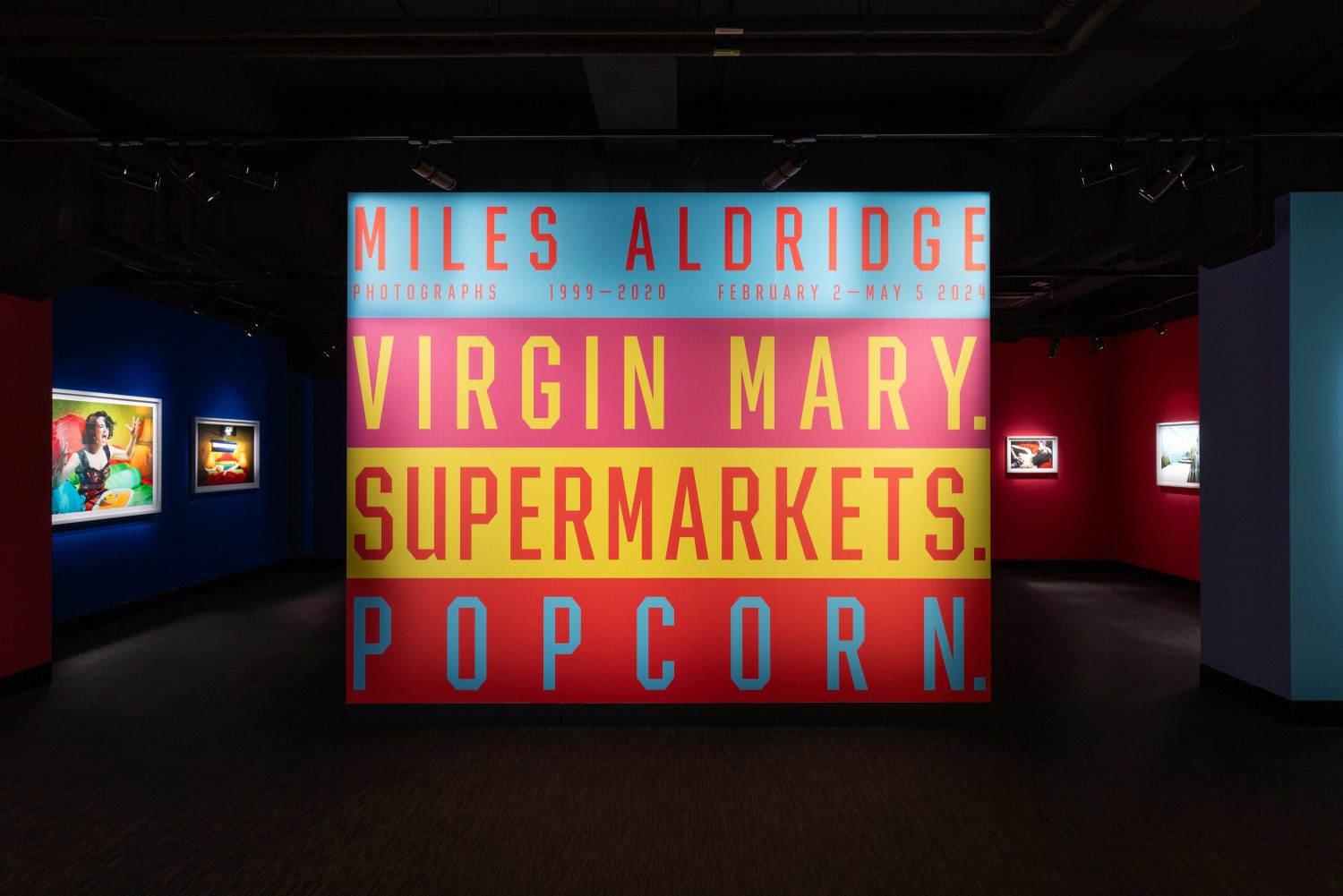
TOILETMILES PAPERALDRIDGE
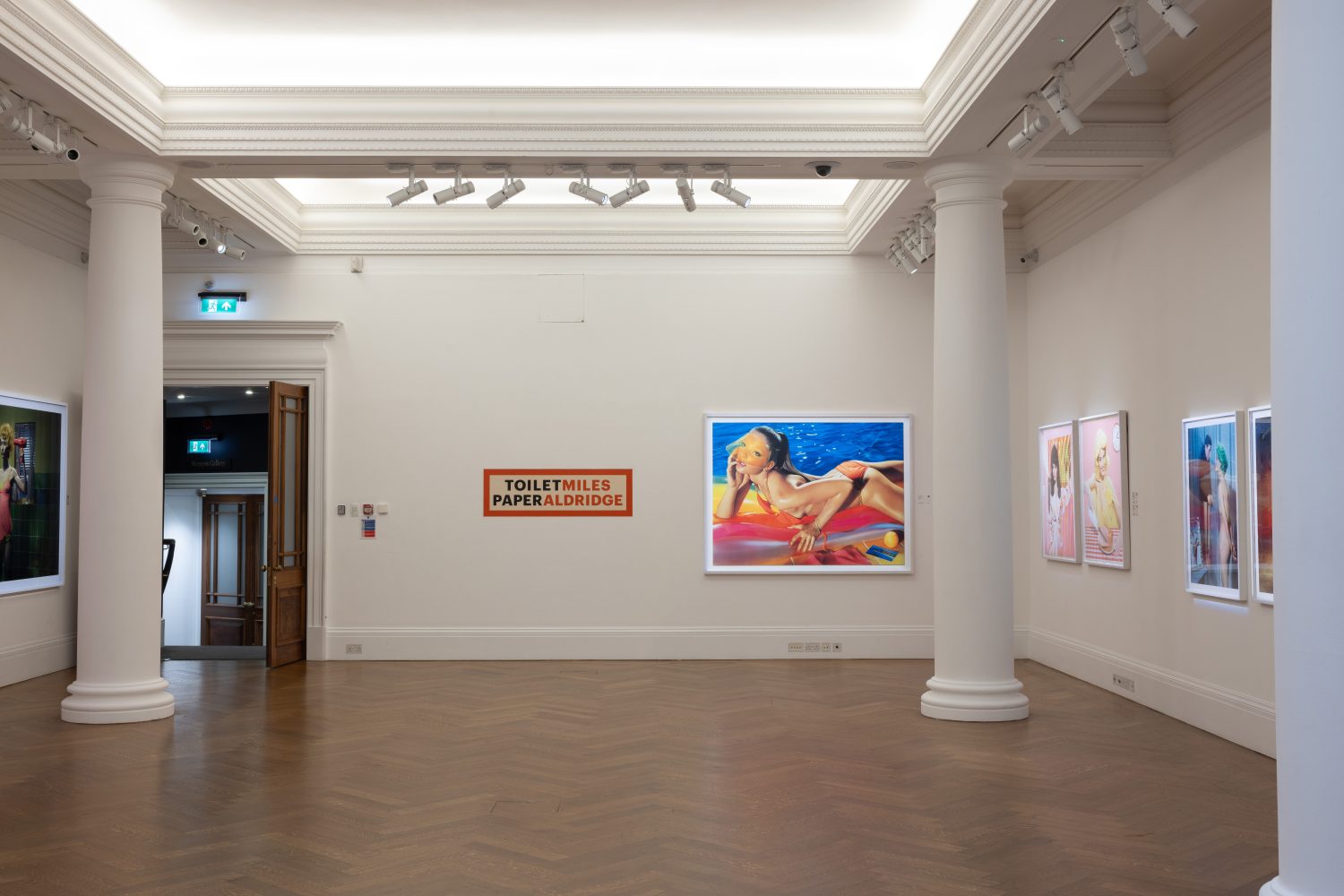
Miles Aldridge Colour Pictures 2000 – 2022
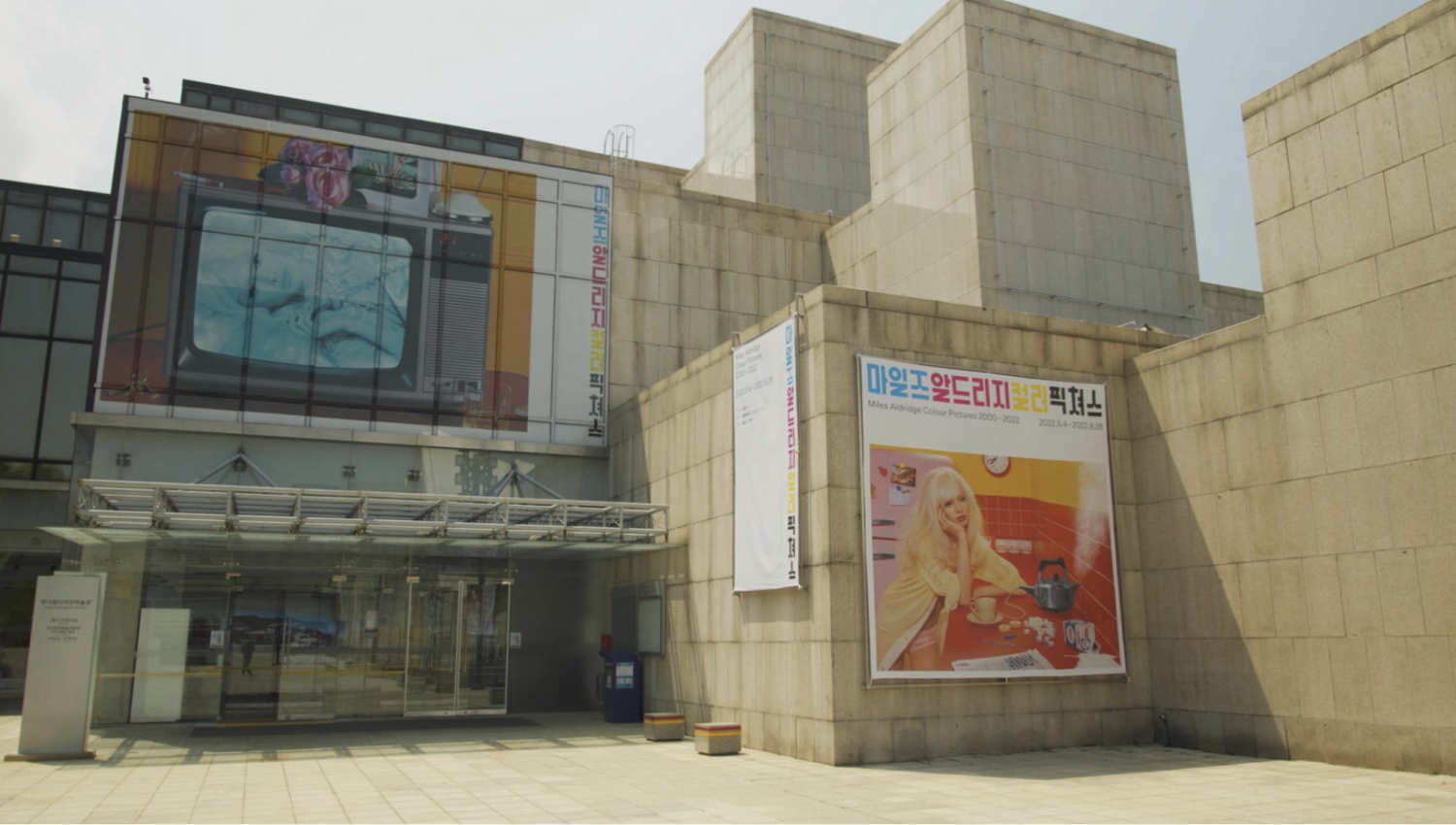
High-Gloss
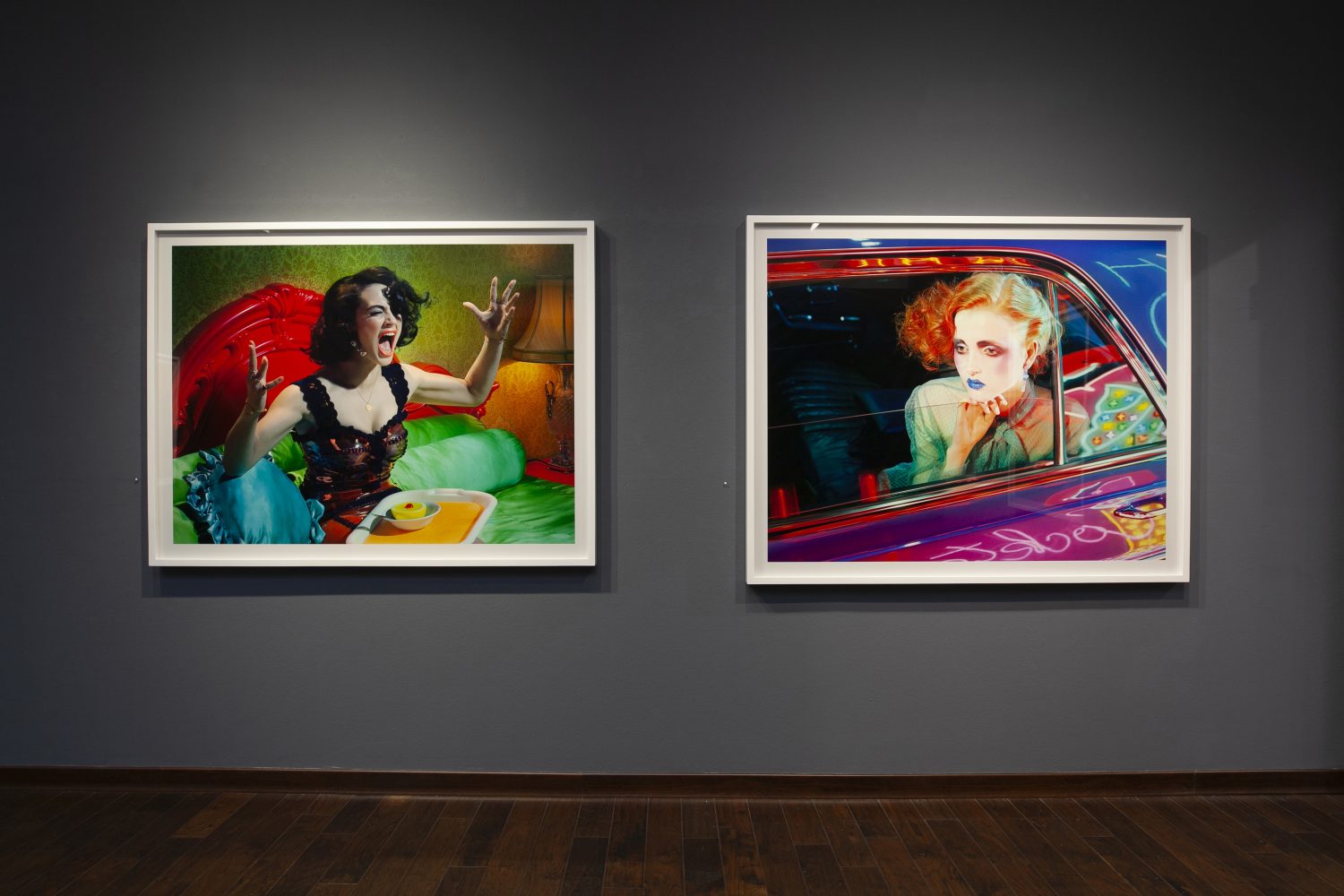
Process: Vintage Polaroids and Contact Sheets 1999 – 2018
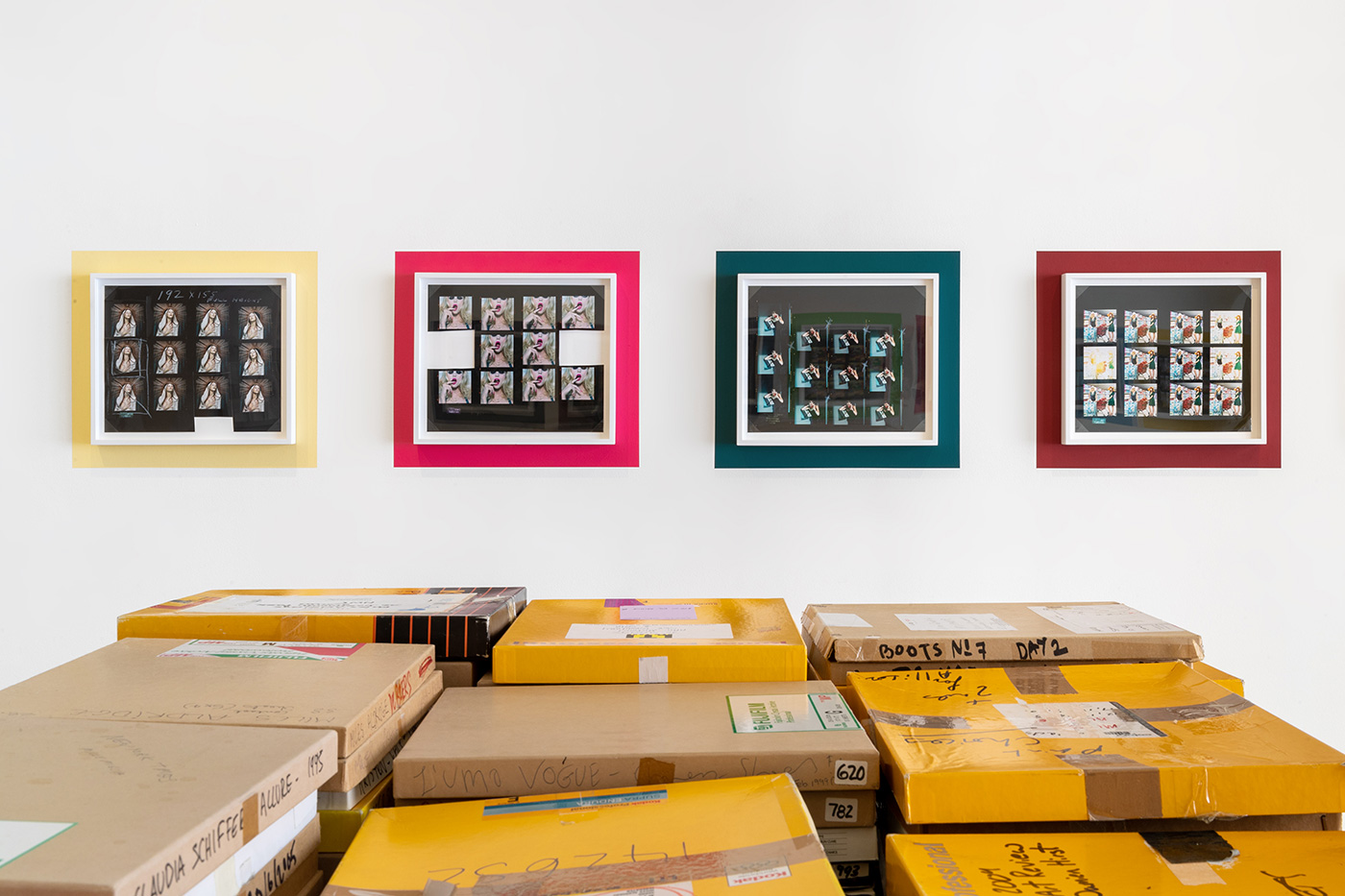
Virgin Mary. Supermarkets. Popcorn. Photographs 1999–2020
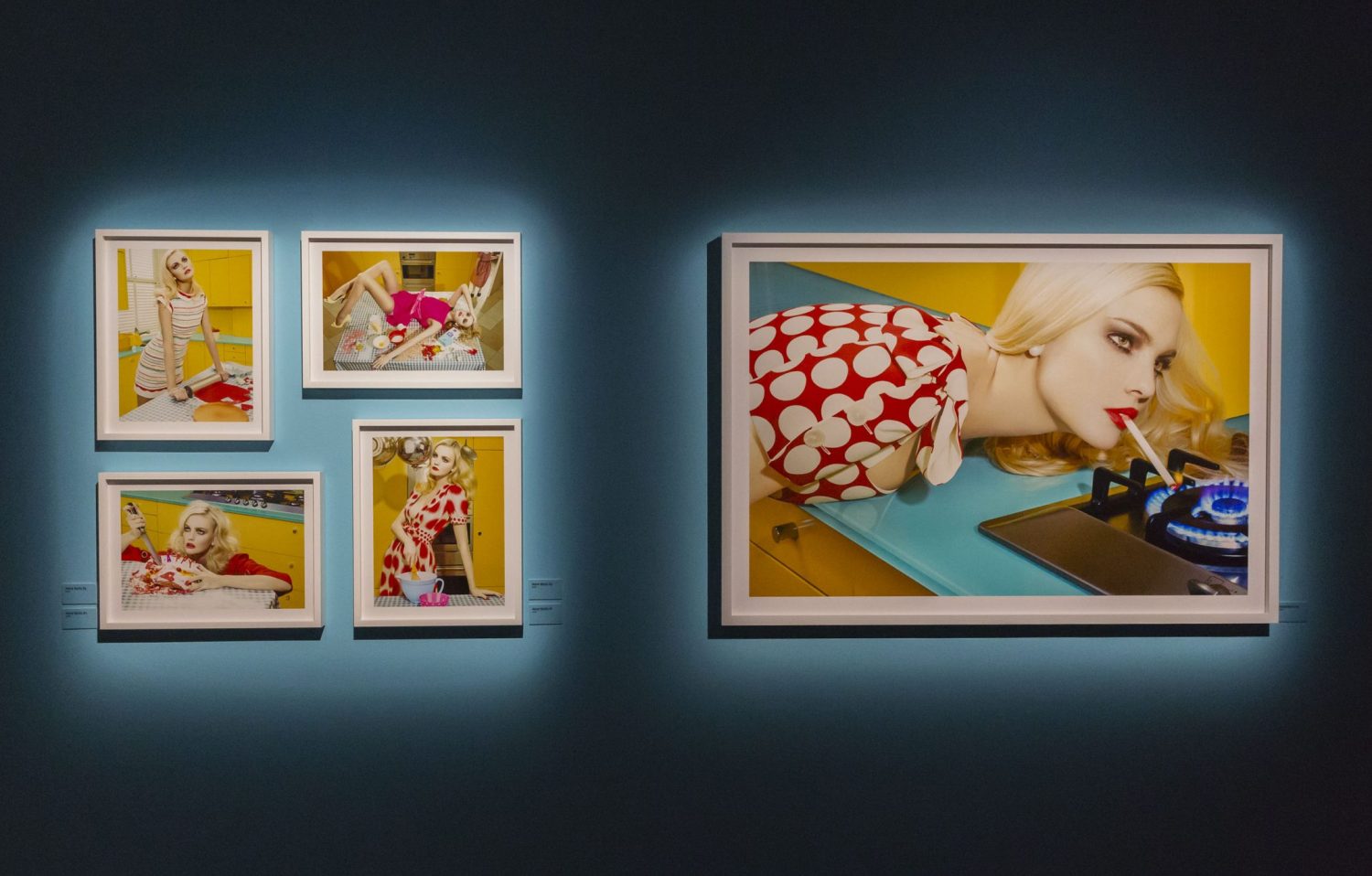
Virgin Mary. Supermarkets. Popcorn. Photographs 1999–2020
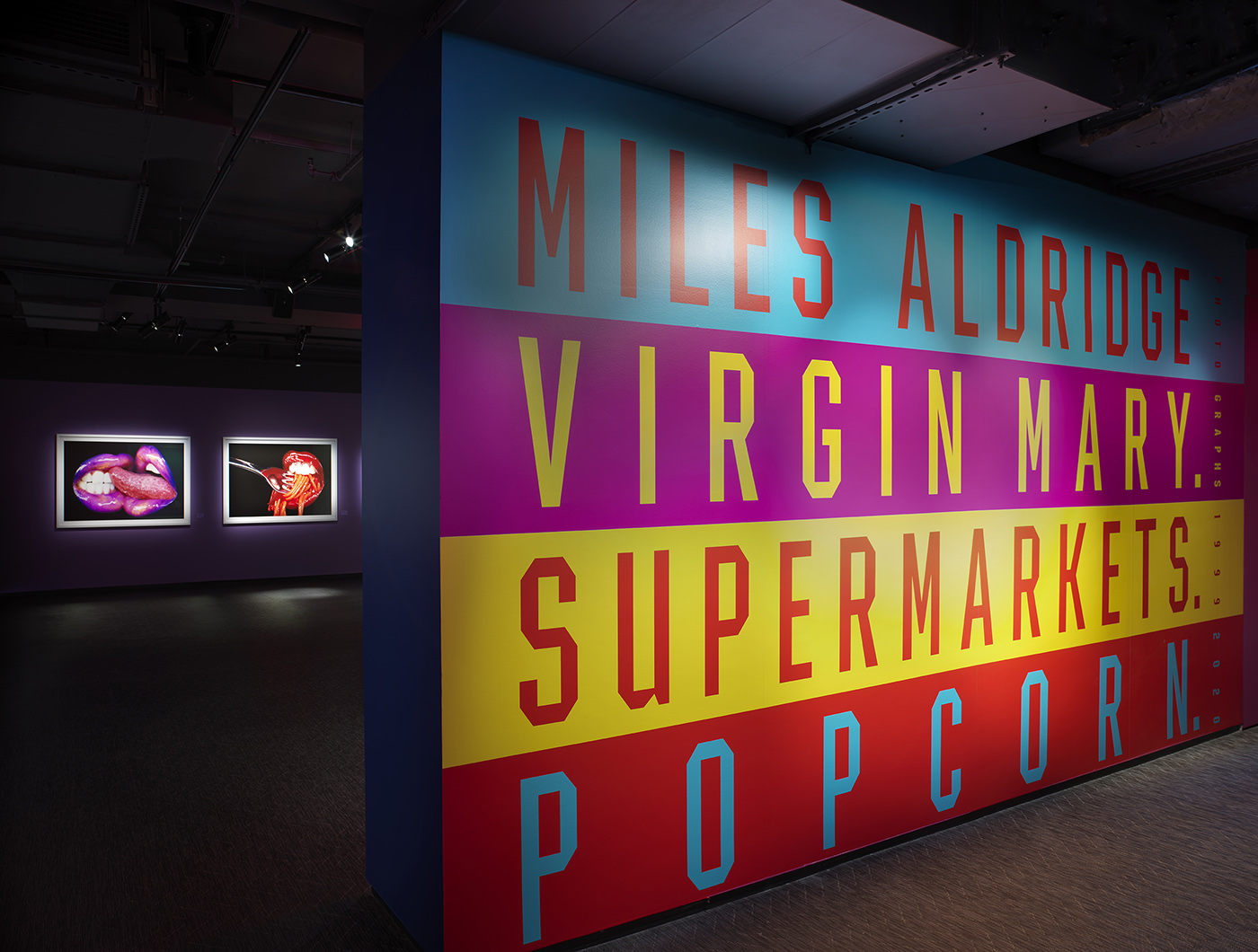
The Taste of Colour
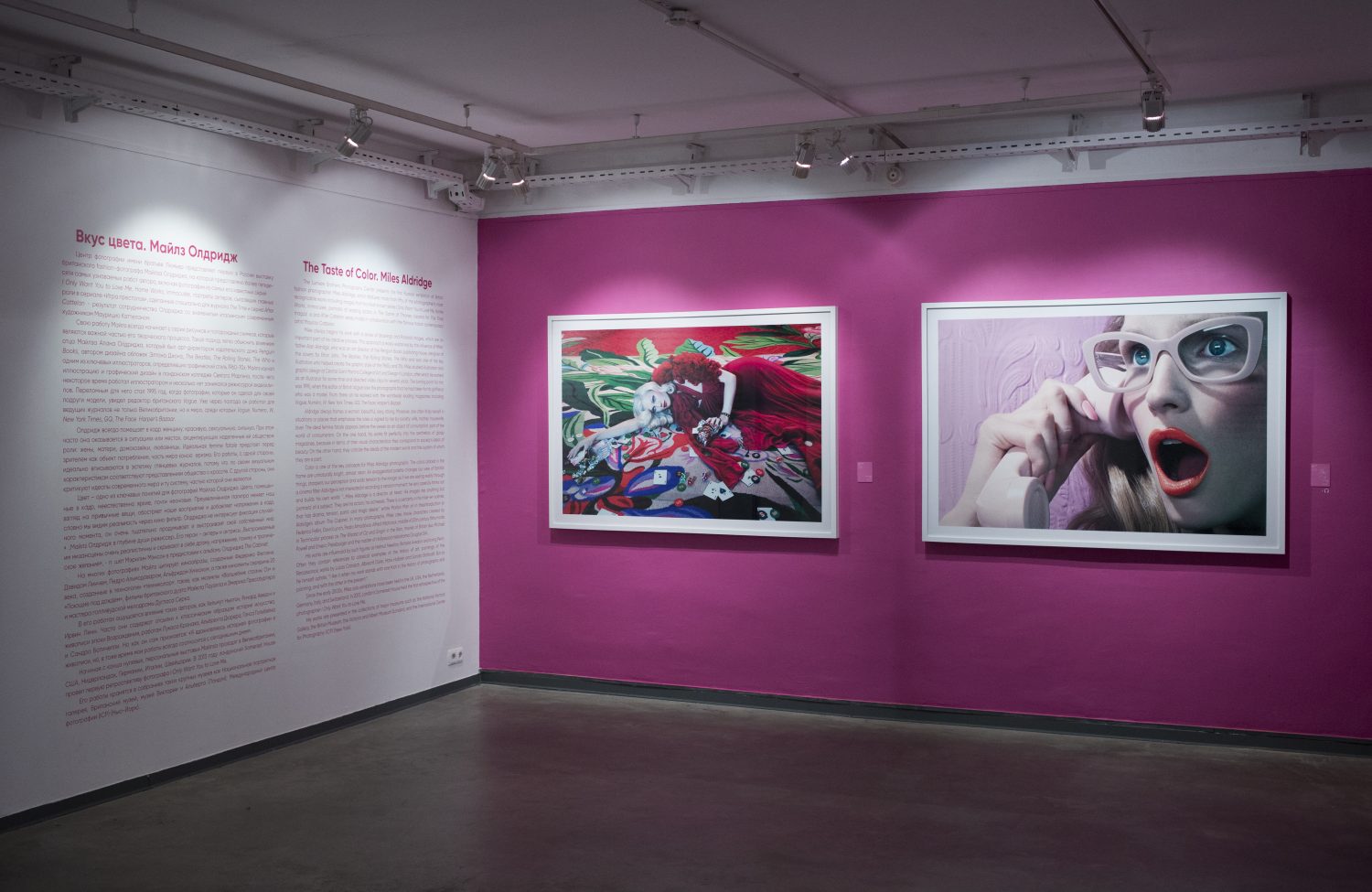
Ex Libris
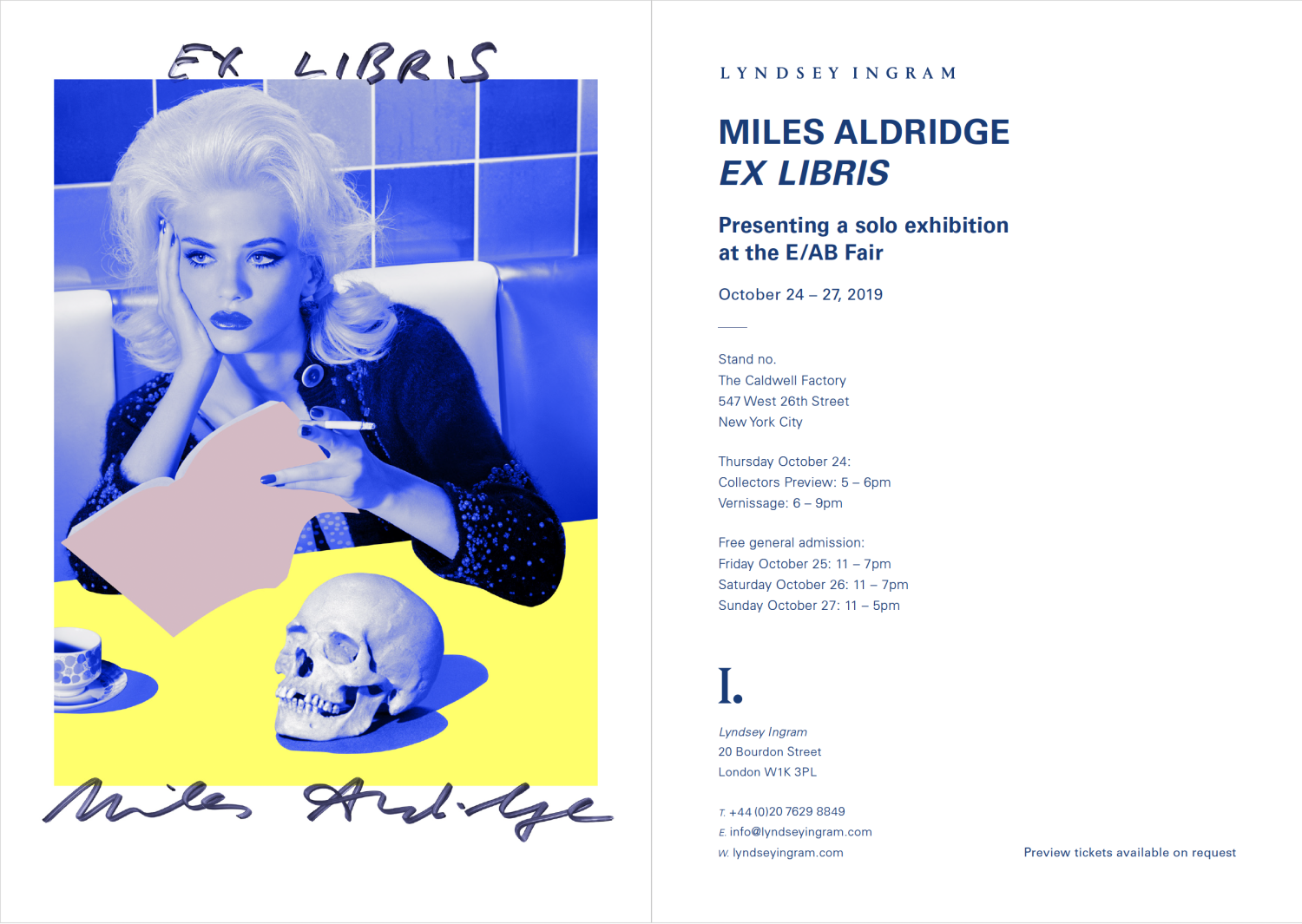
Screenprints, Polaroids and Drawings
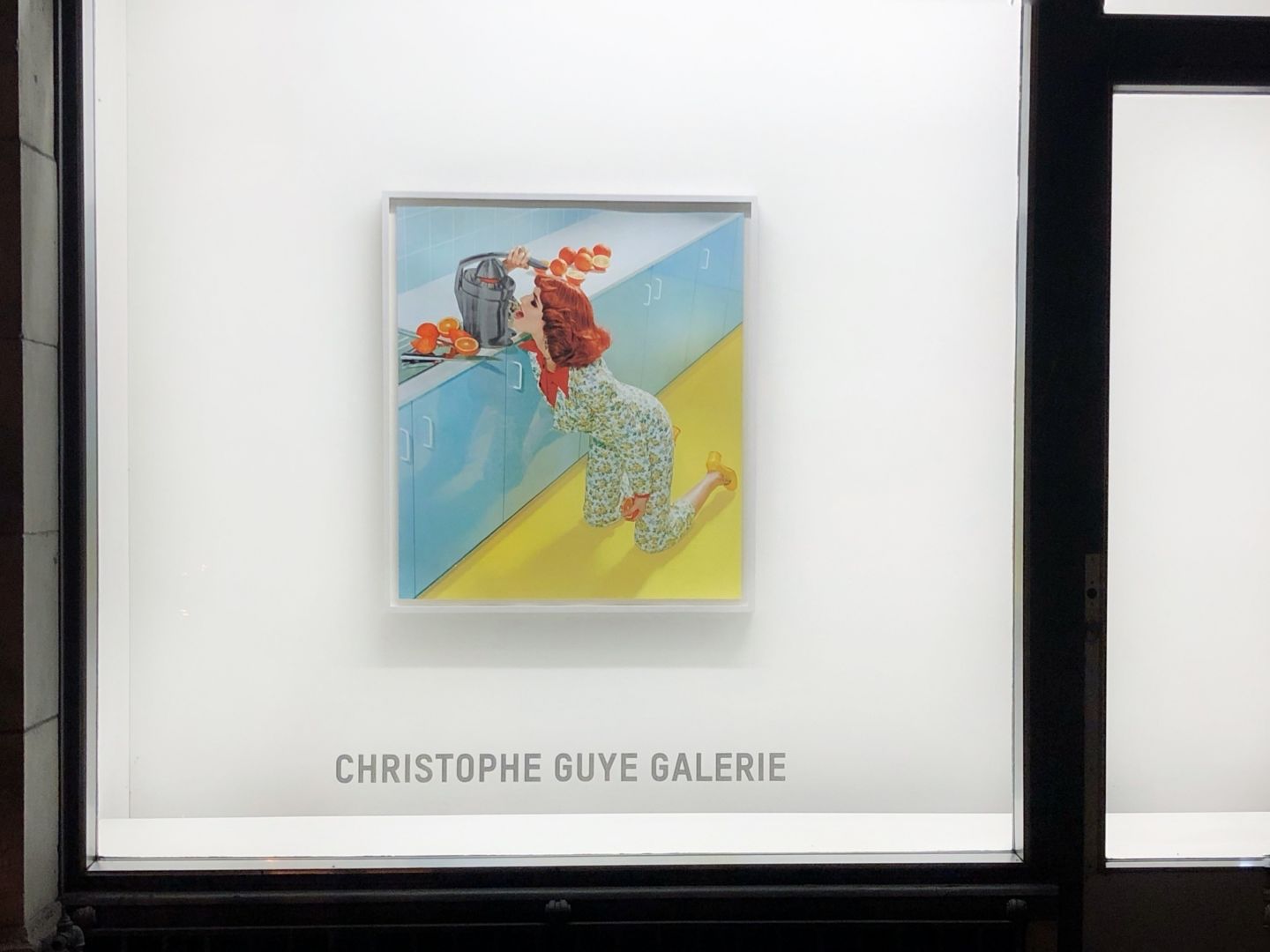
This Side of Paradise
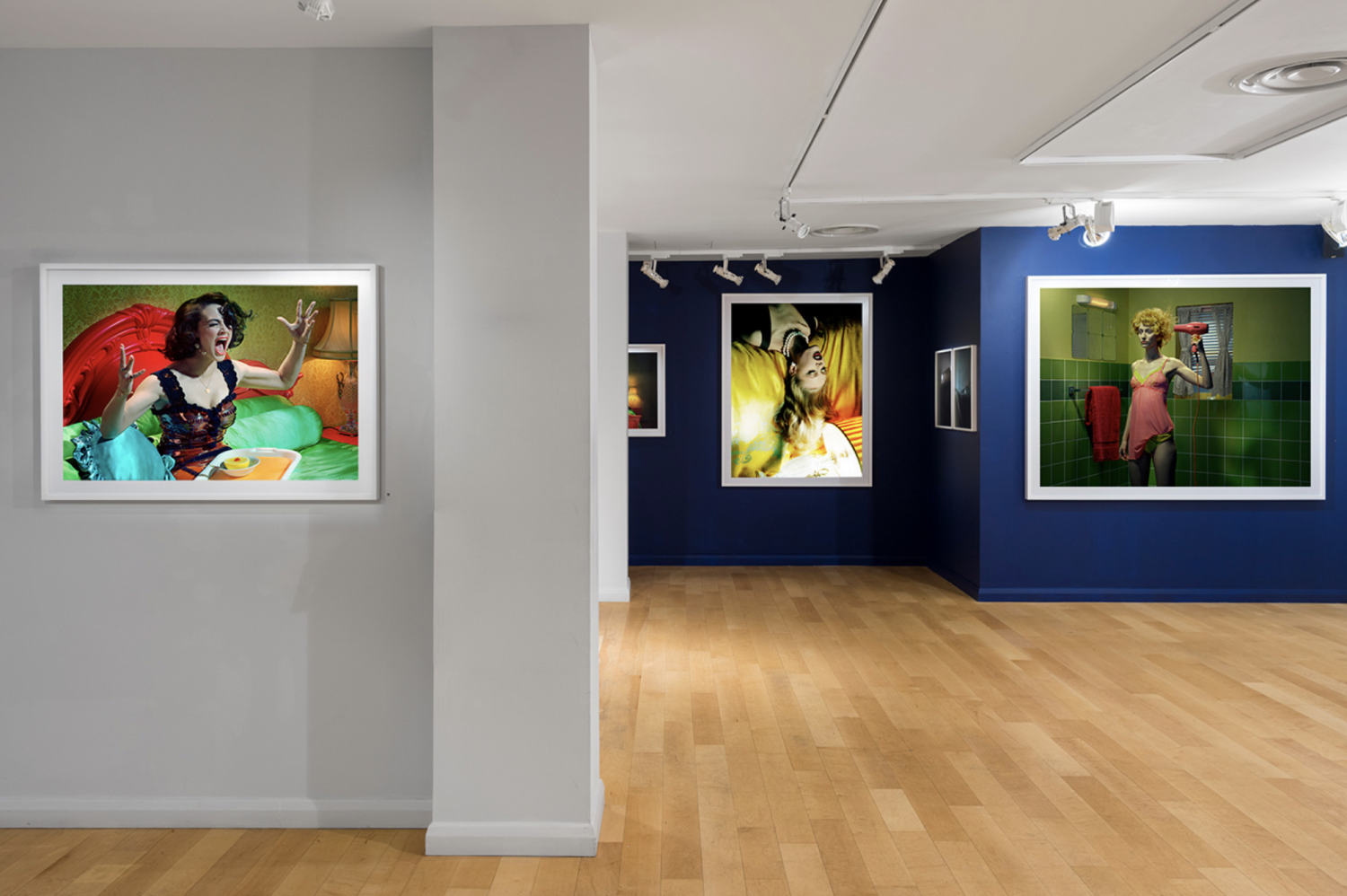
Art History
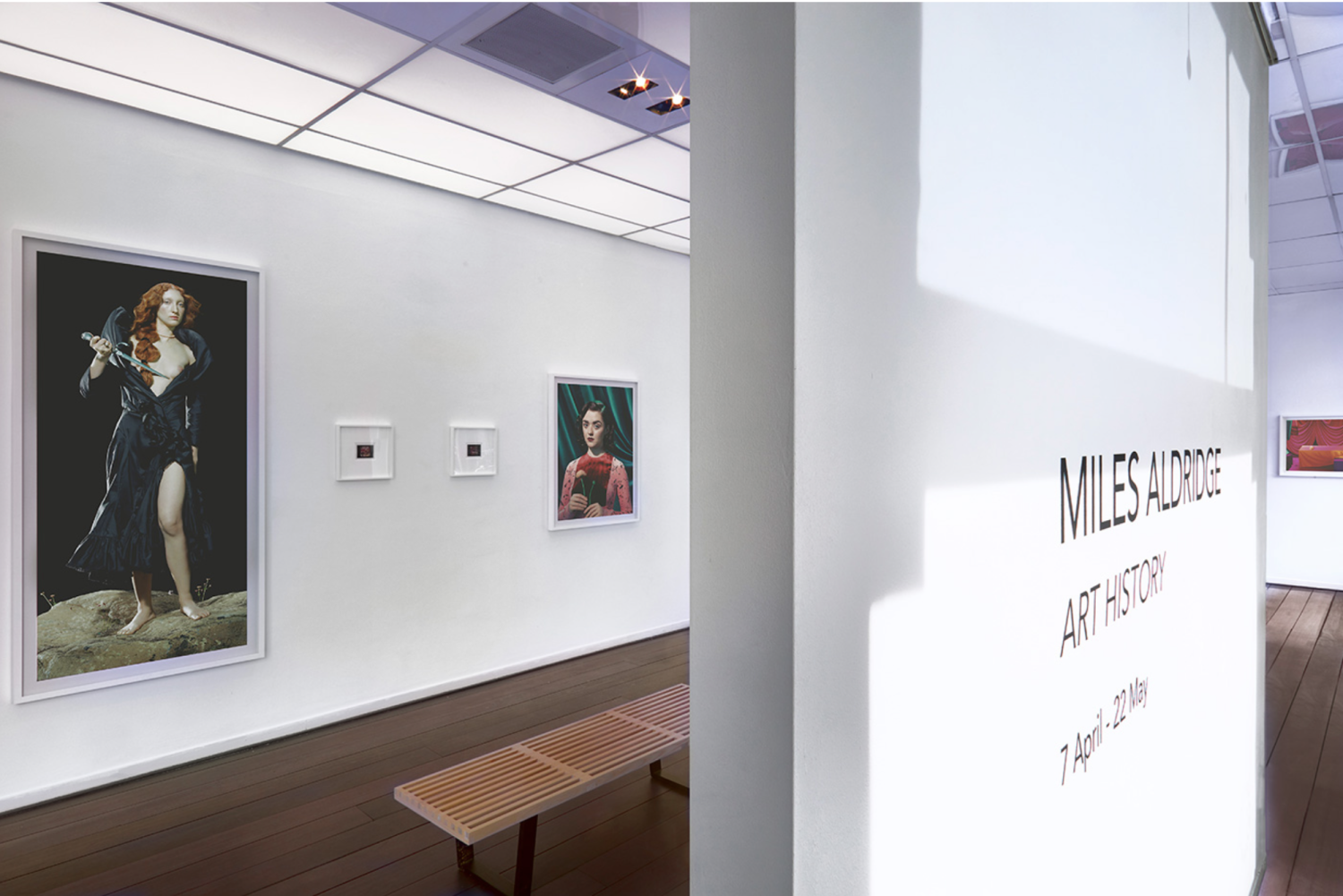
(after)
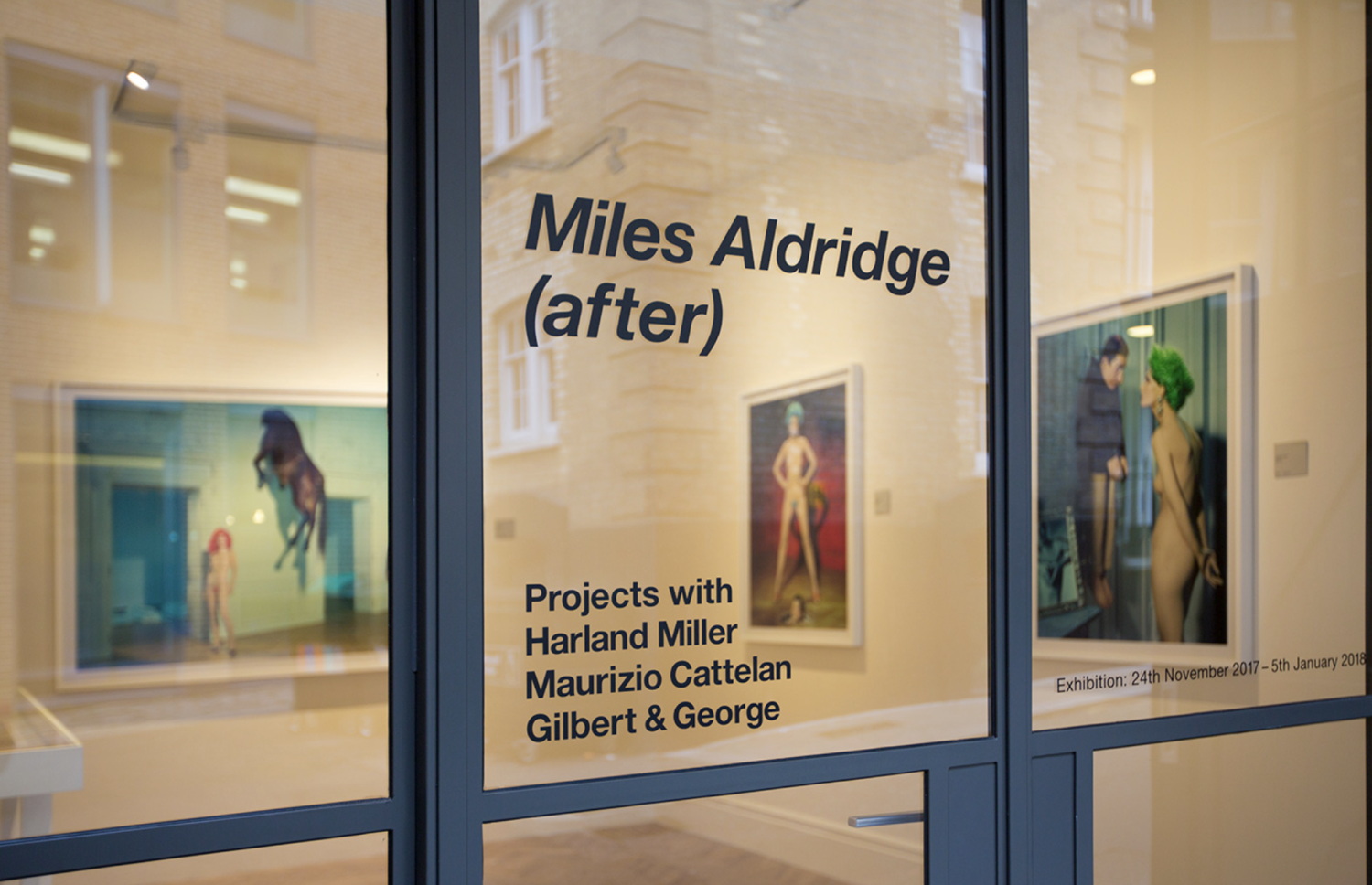
Please return Polaroid
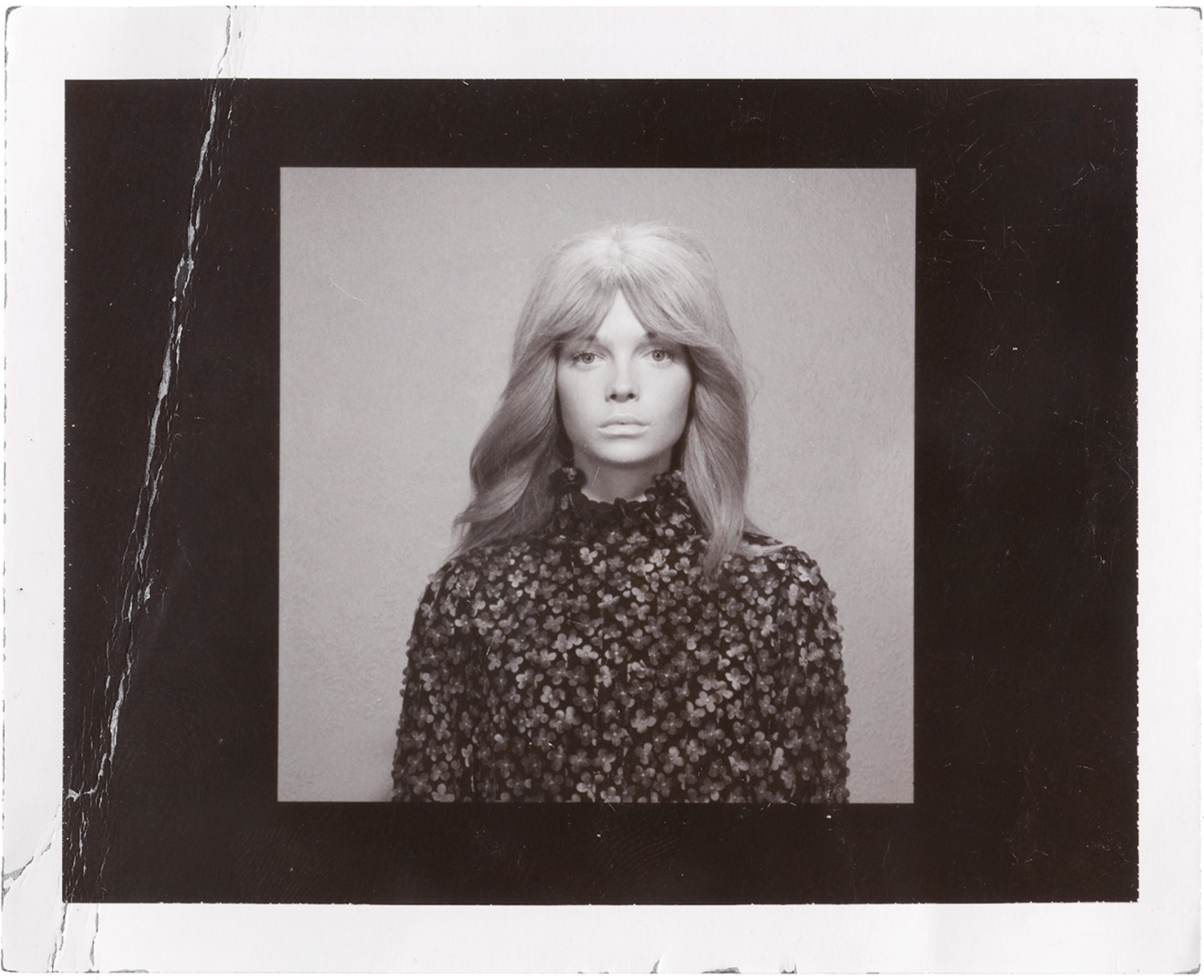
Please Return Polaroid
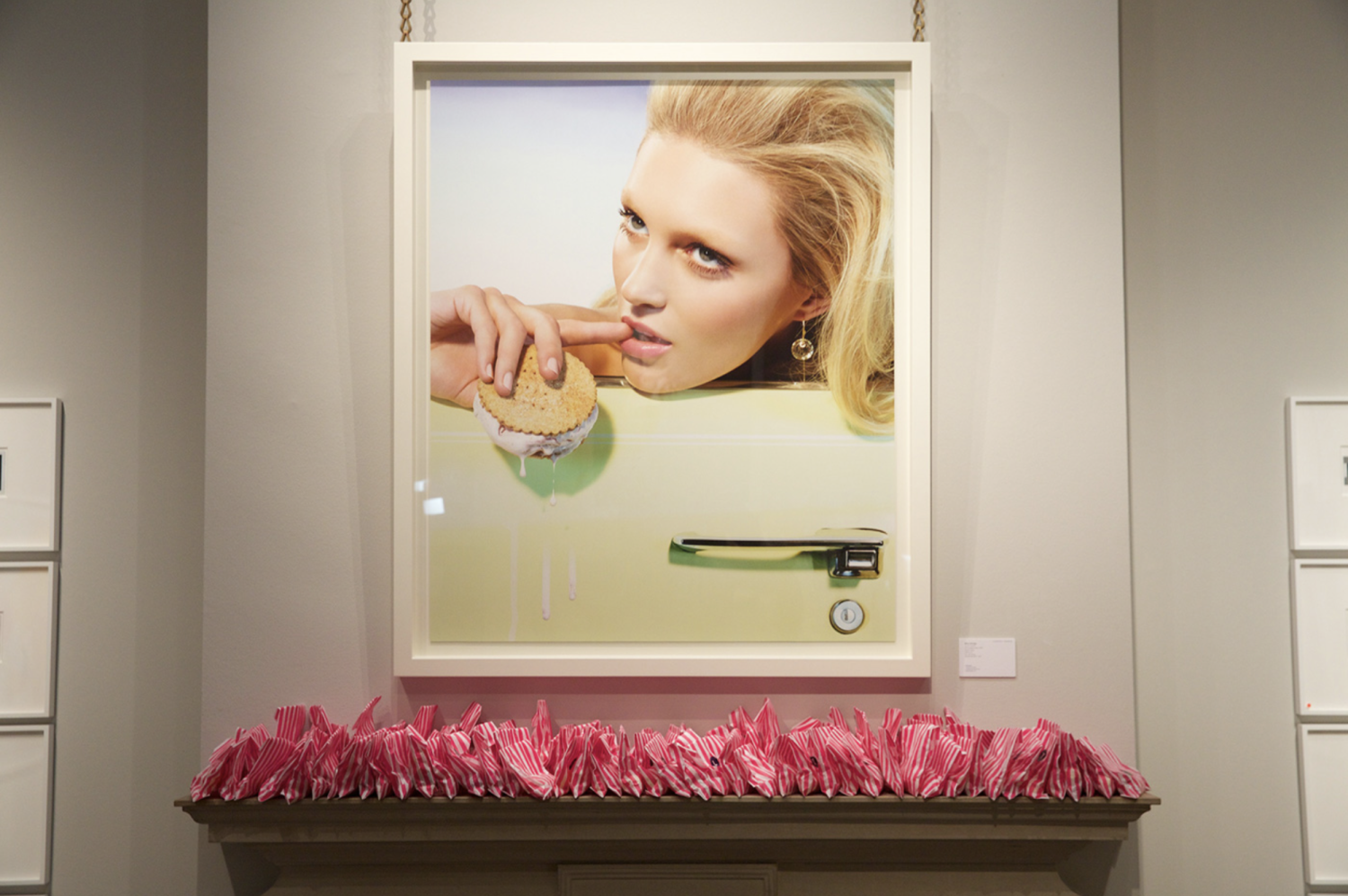
The Pure Wonder
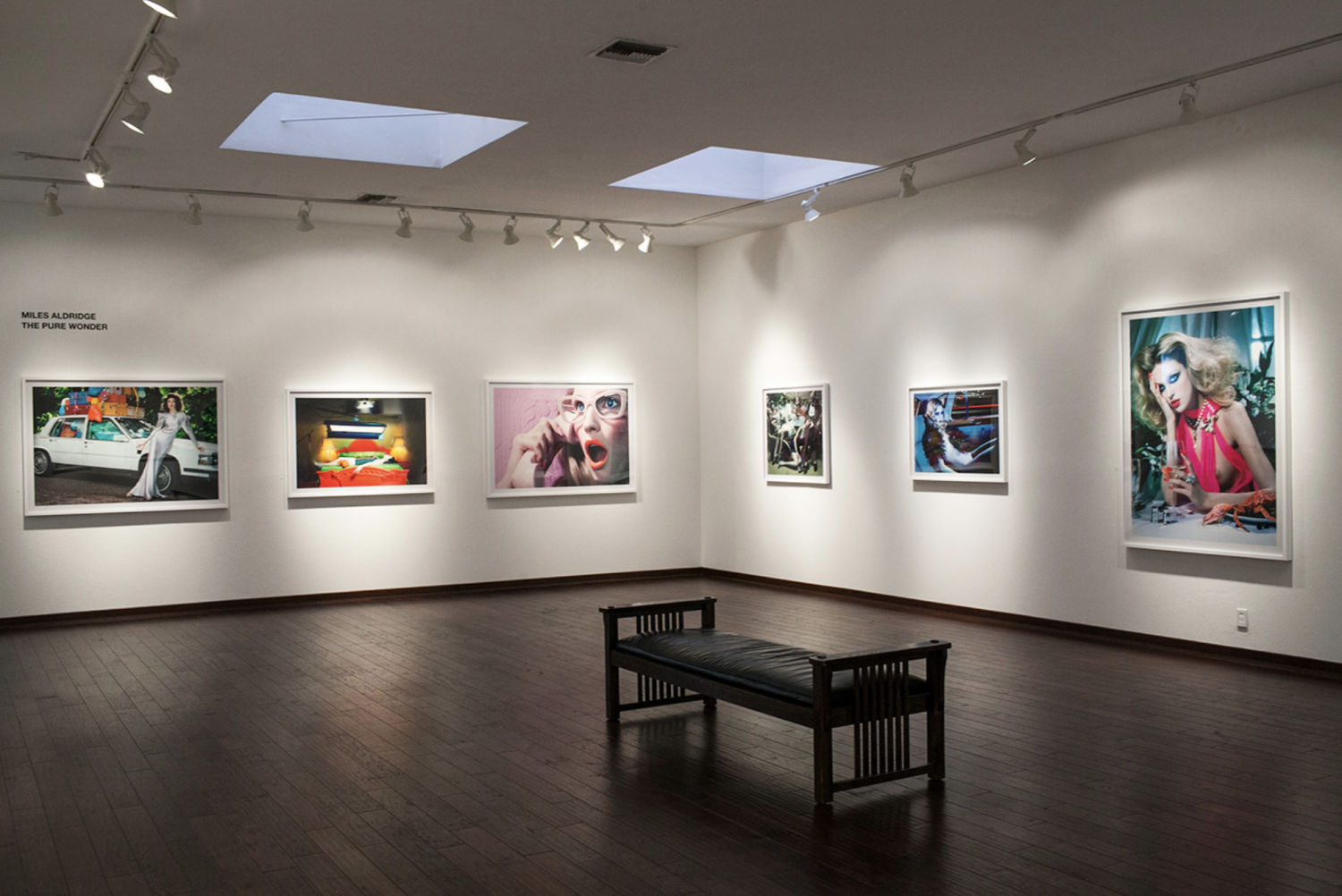
A Dazzling Beauty
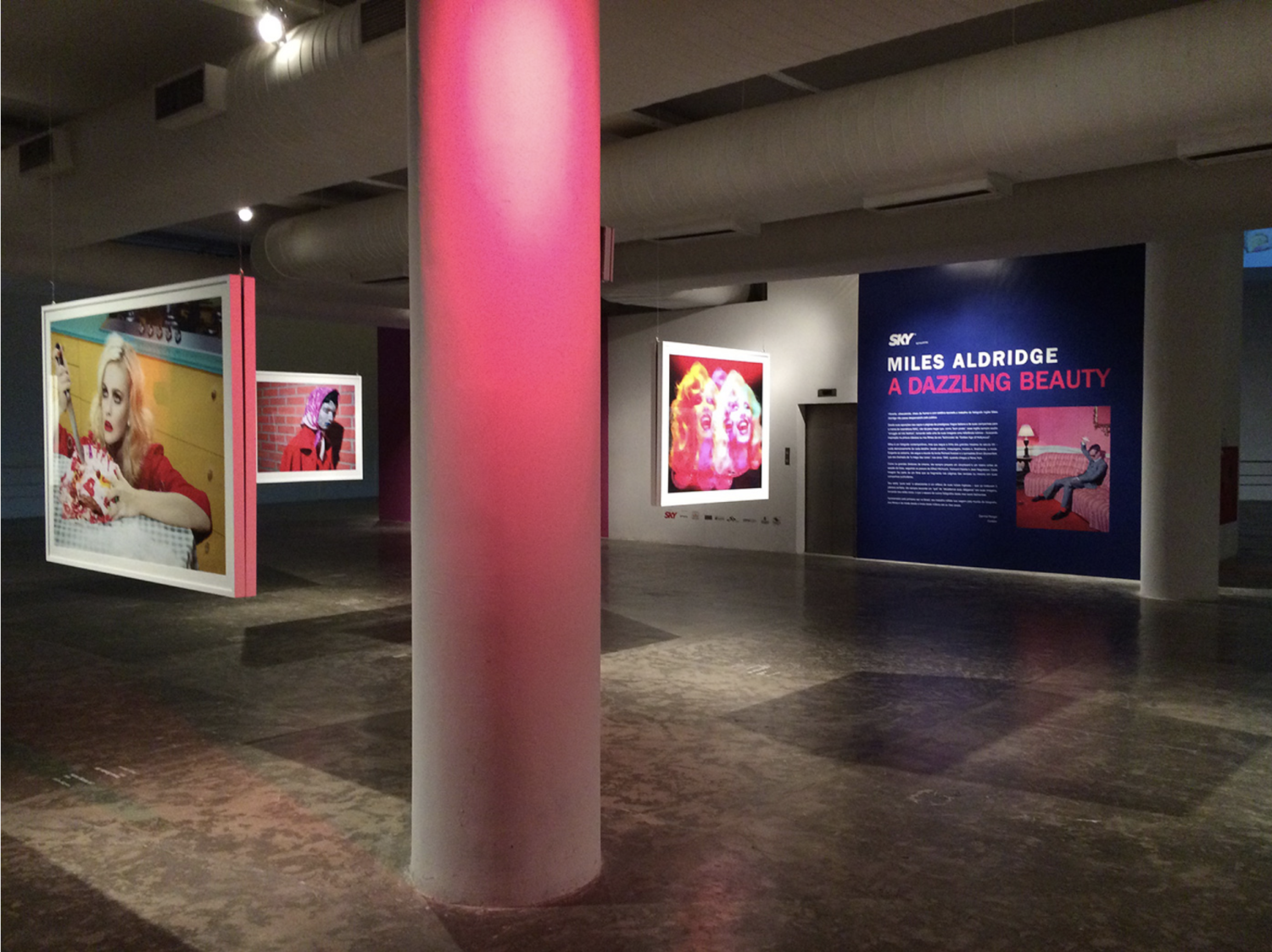
The Age of Pleasure
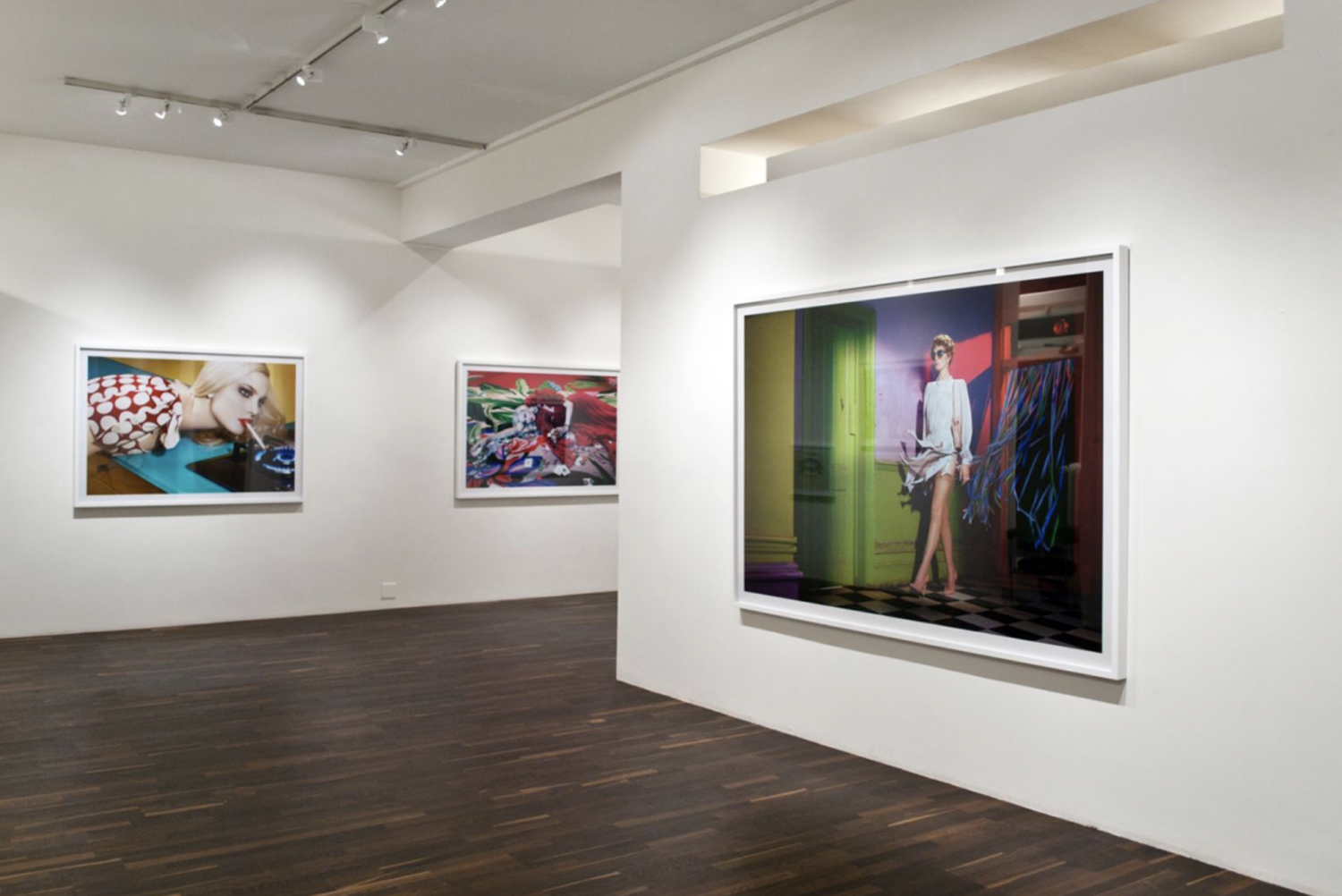
One Black & White and Twenty Four Colour Photographs
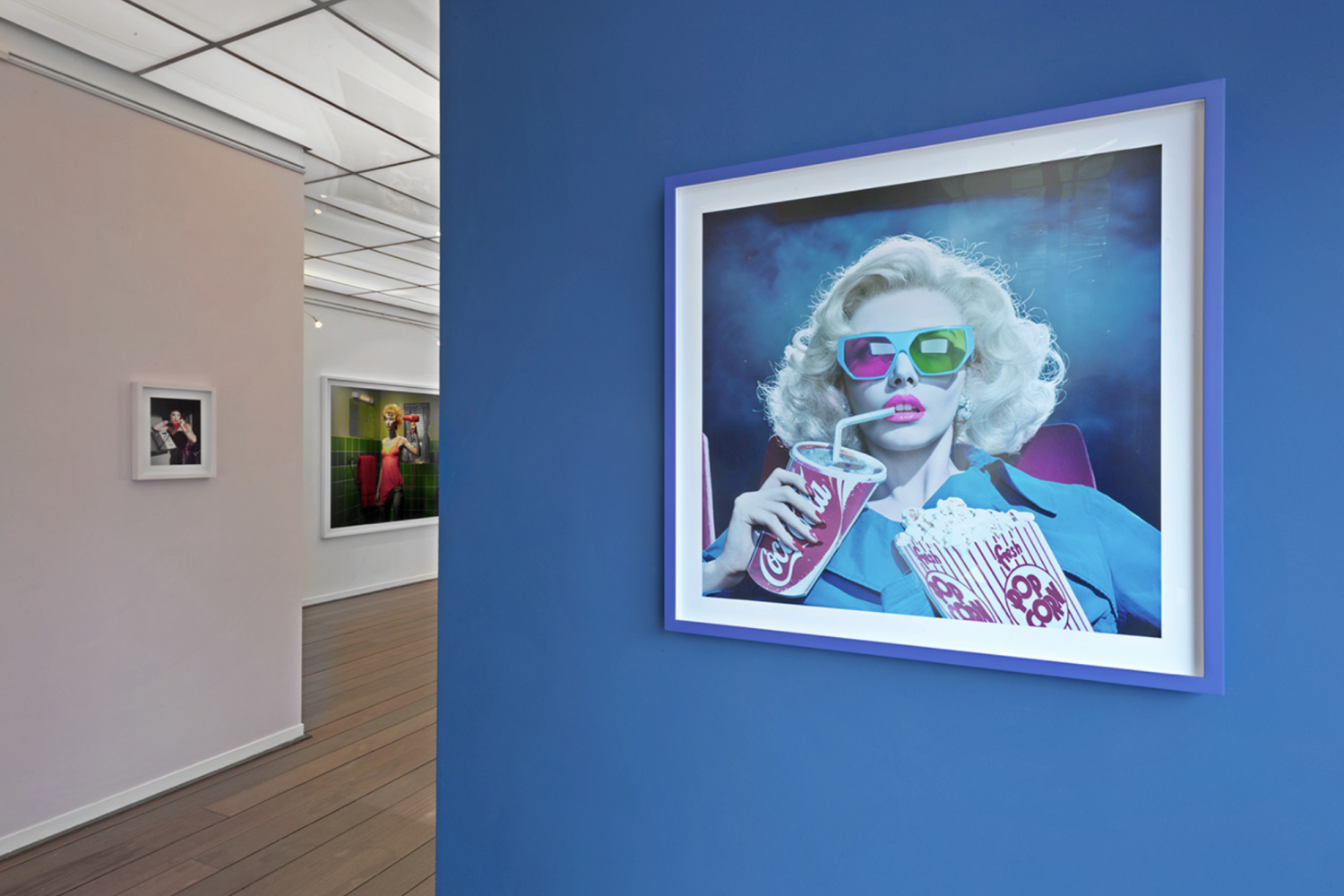
Carousel
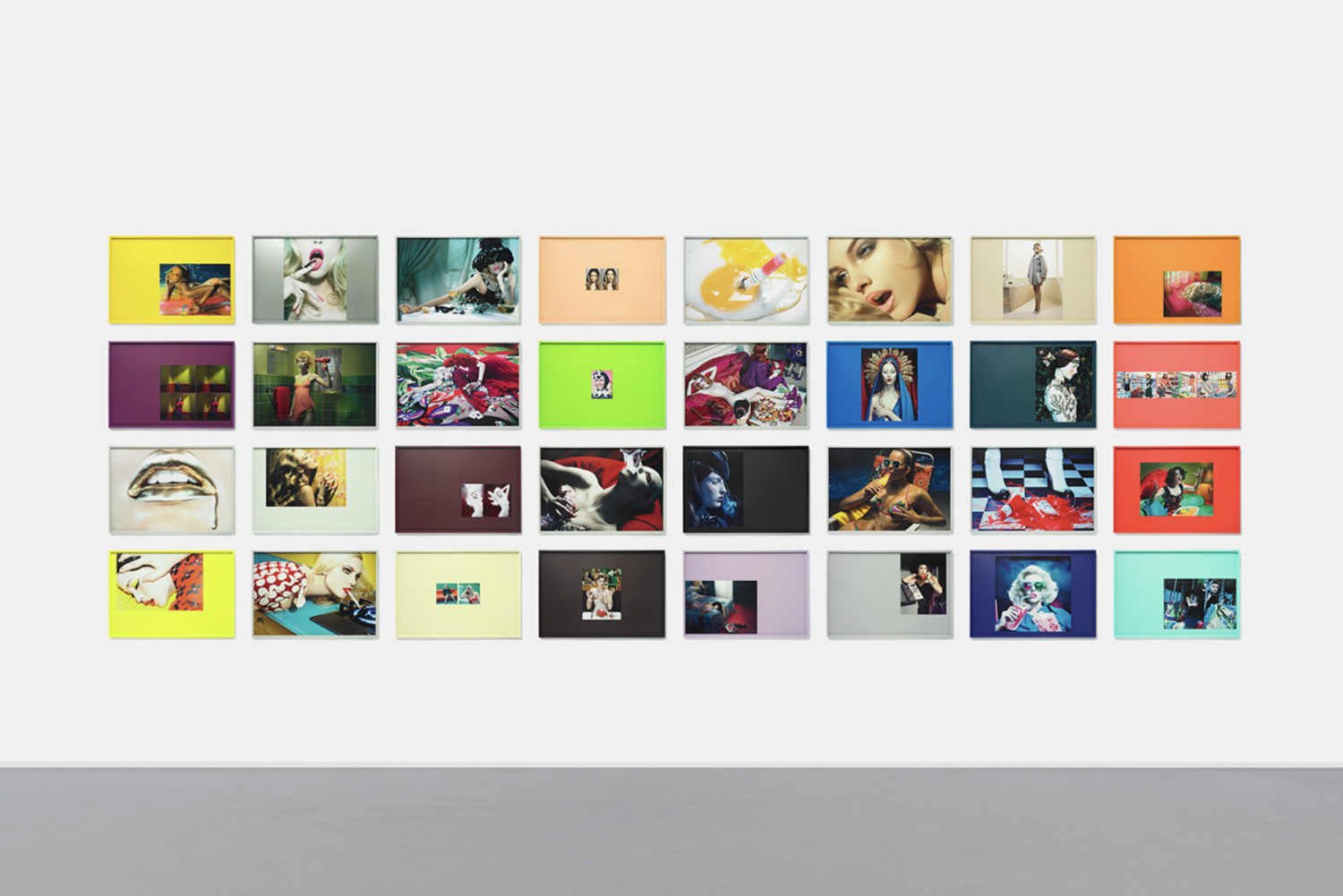
Short Breaths
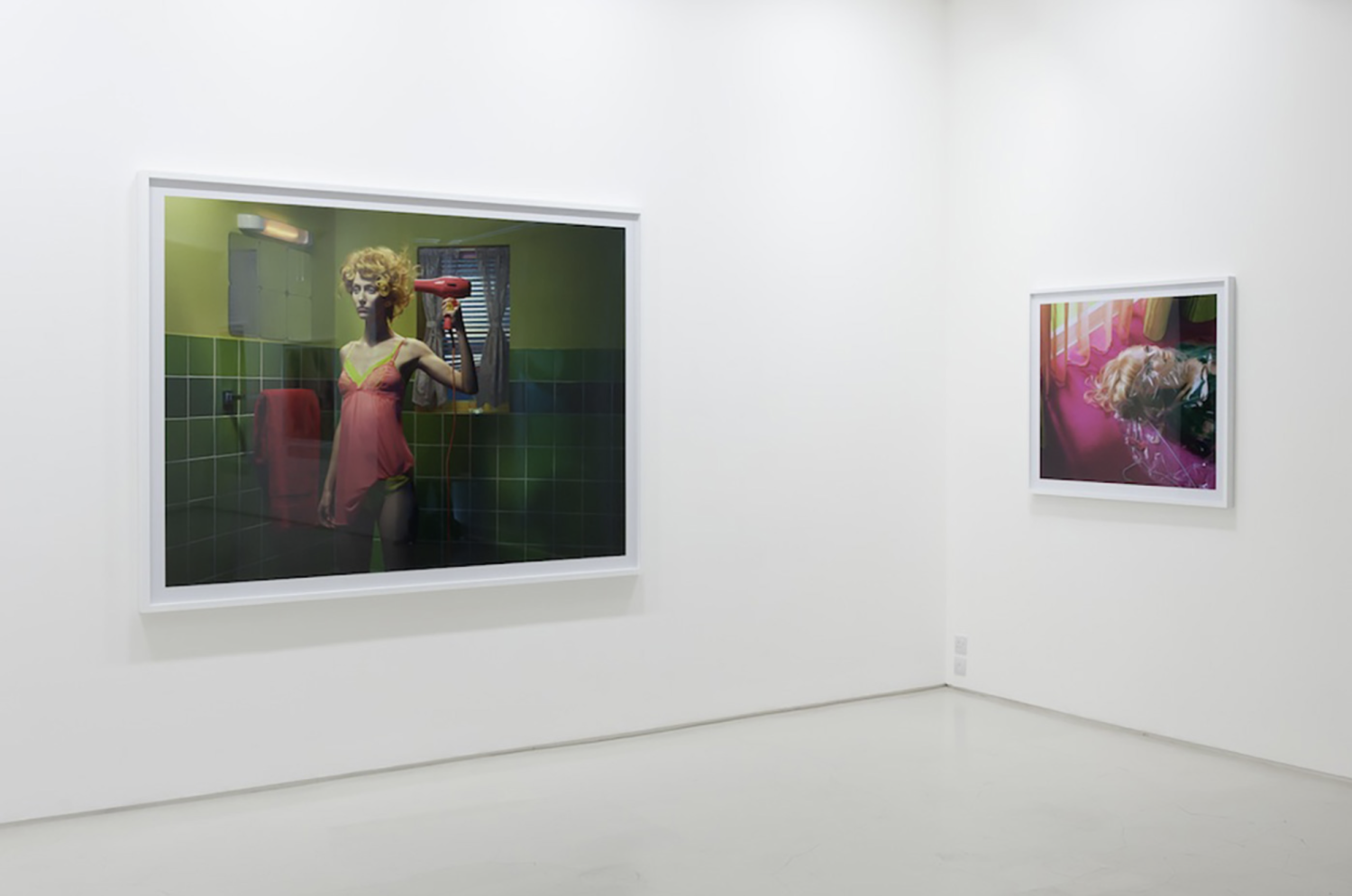
I Only Want You To Love Me
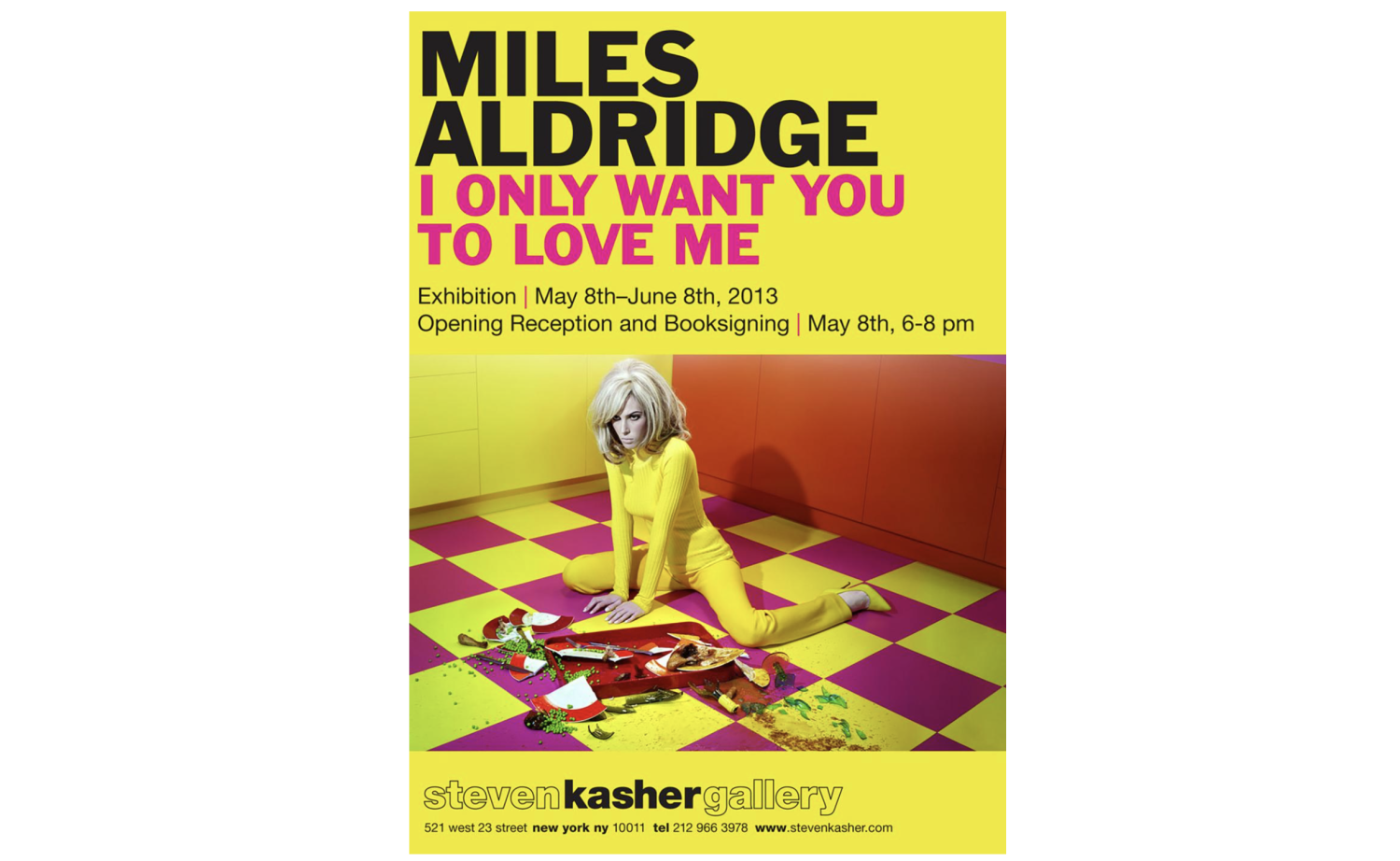
I Only Want You To Love Me
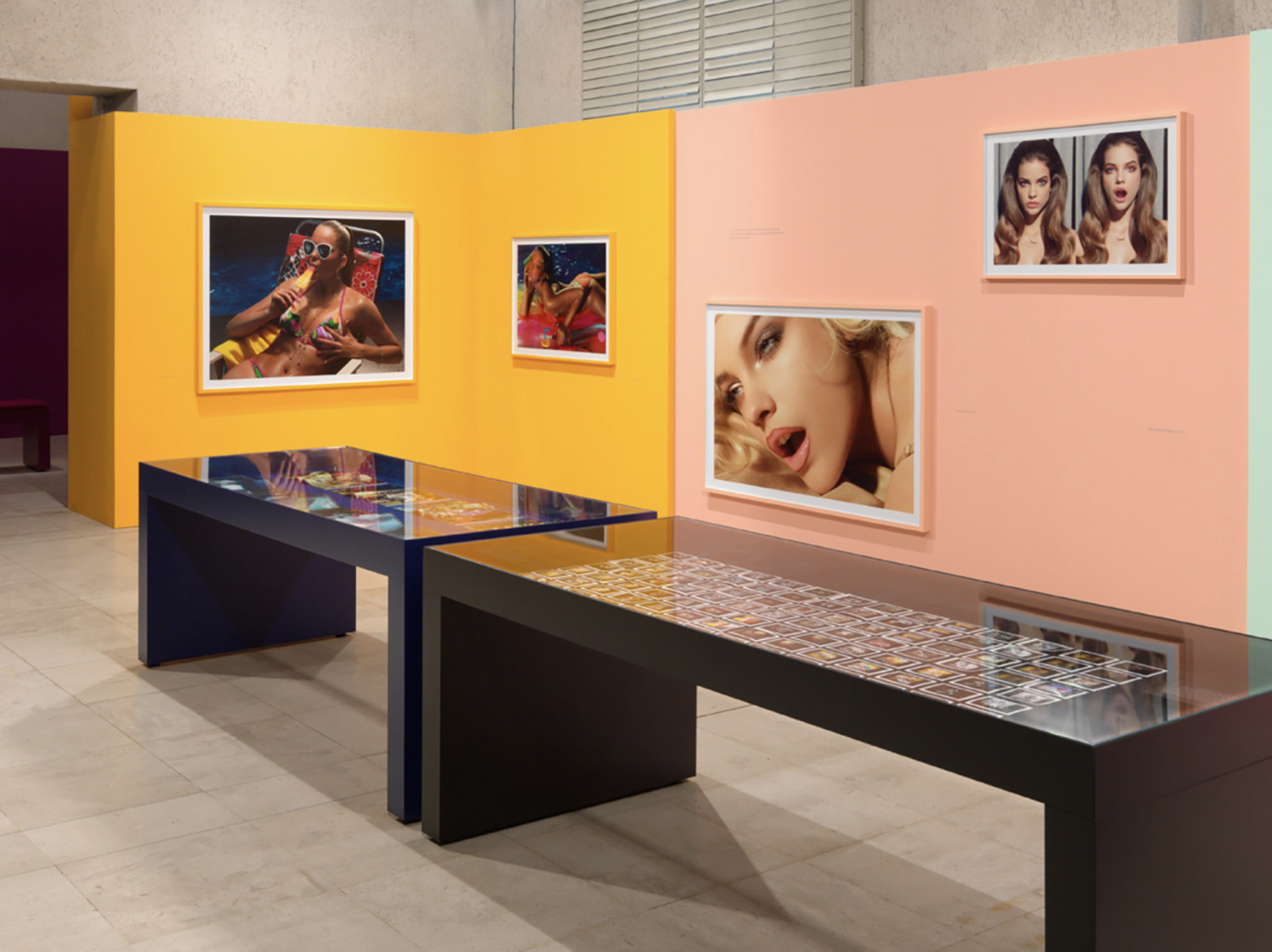
13 Women
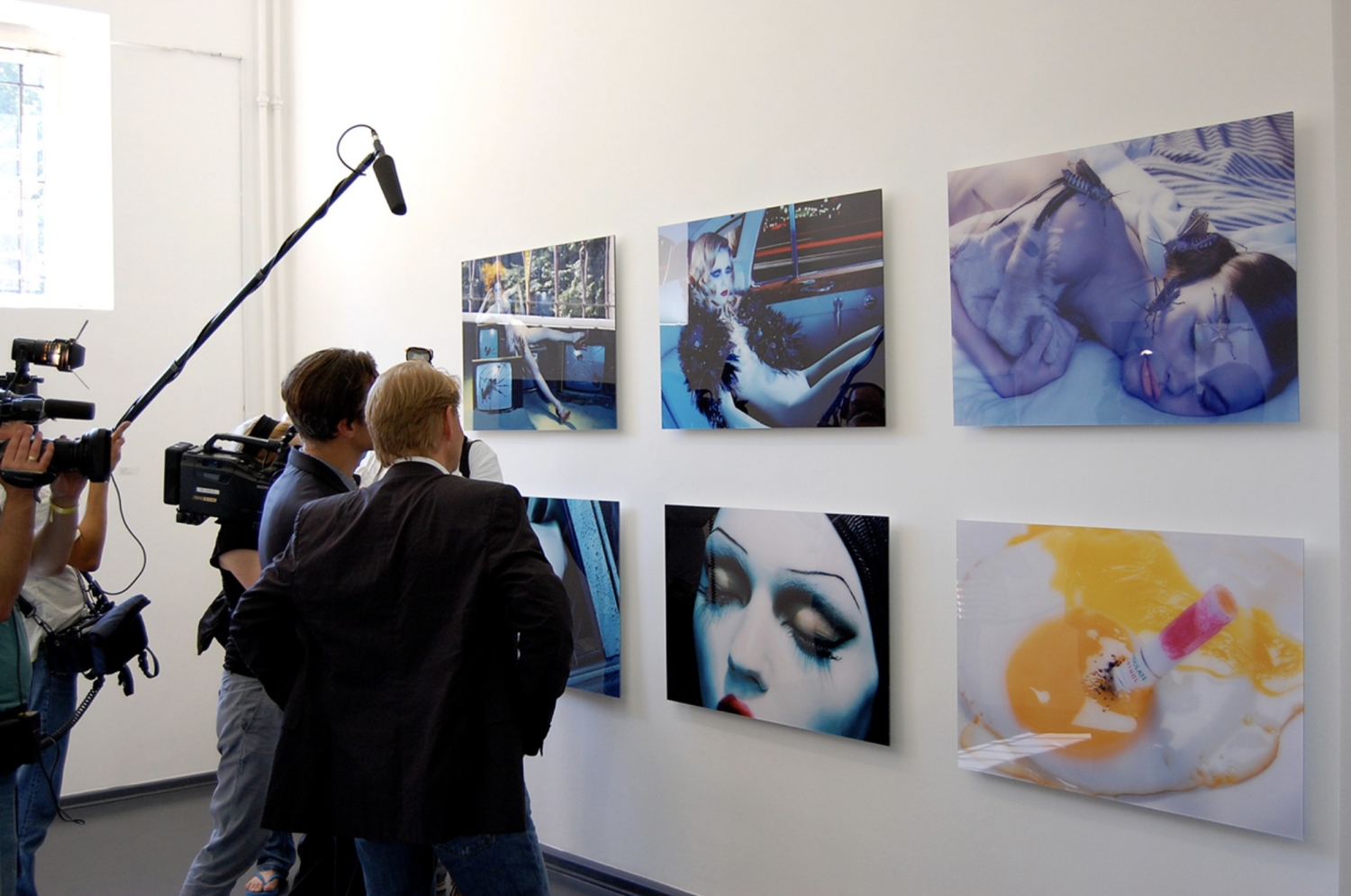
Pictures for Photographs
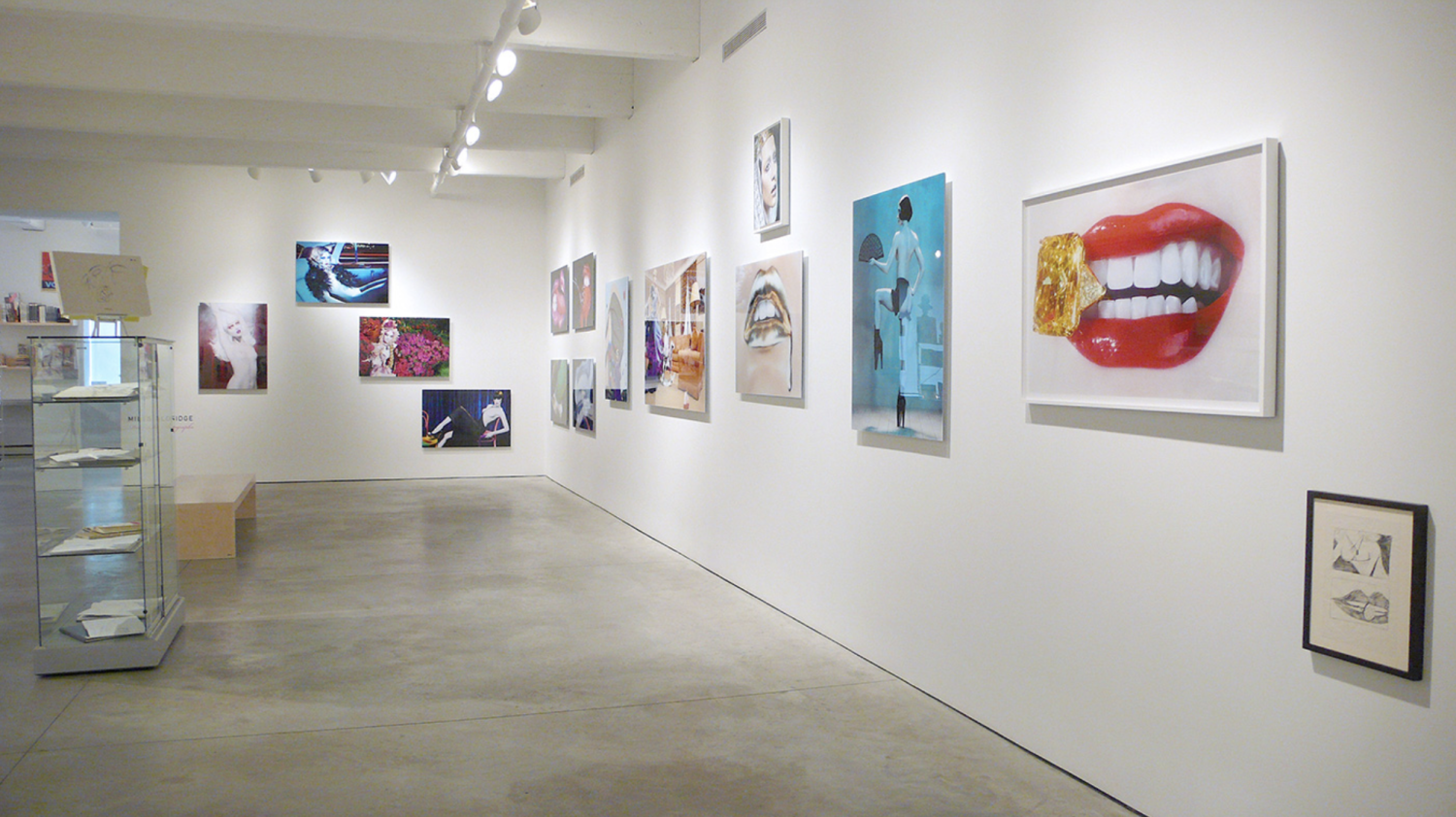
Doll Face
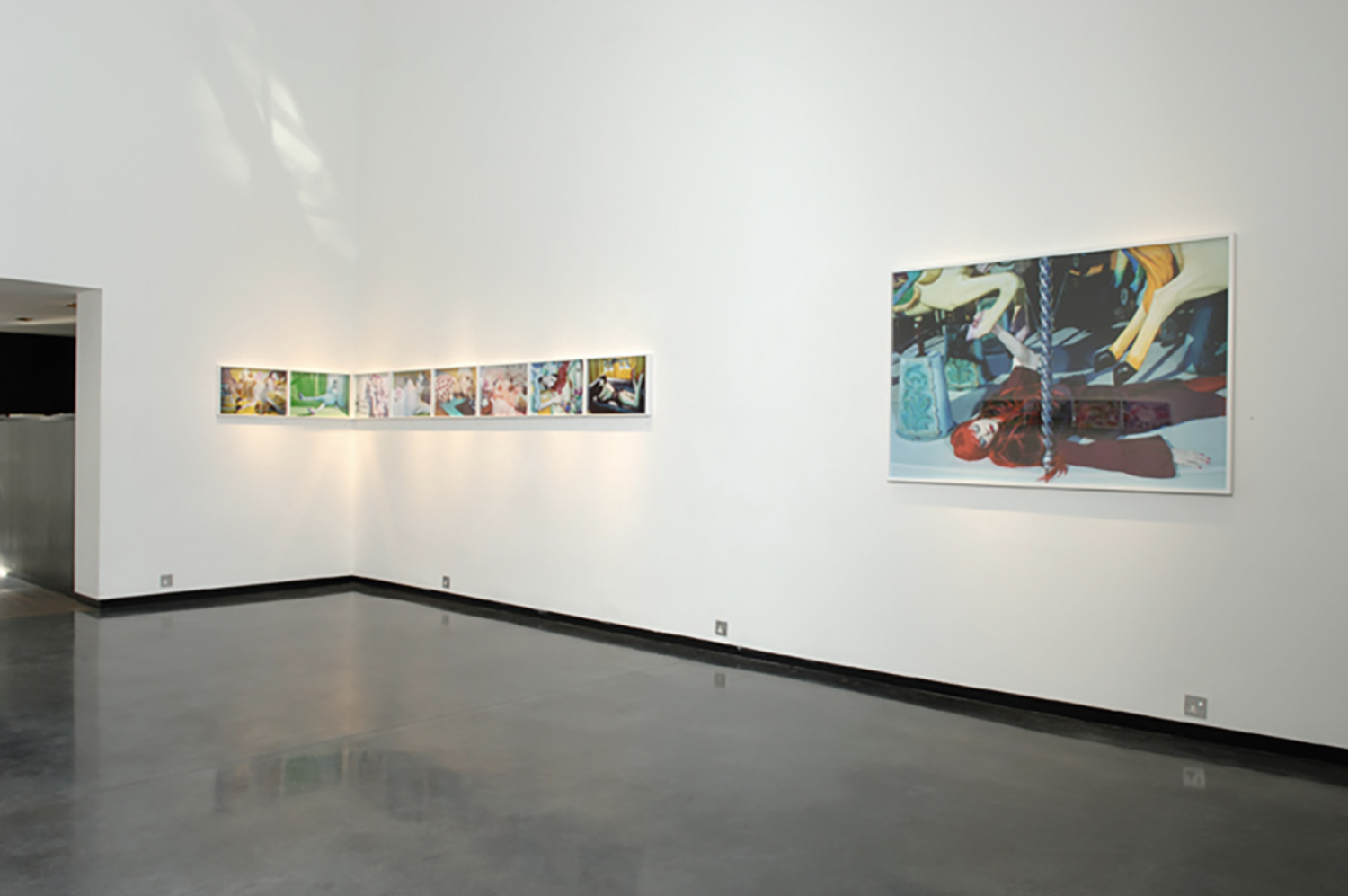
Press
Wallpaper*: As Photo London turns 10, seven photographers tell us the story behind their portraits
2025
Miles Aldridge
‘My portrait of Cara Delevingne was shot in The Victory, a pub on Vyner Street in East London. I had created a series of preparatory drawings and spent a weekend with my assistant scouting pubs across East London and the Isle of Dogs until we found the perfect setting. The landlady agreed to rent the pub for the shoot, with the only condition being that one of her regulars couldn’t be turned away. The taps were made available for props, and many drinks were consumed by the crew over the course of the day. The image was inspired by my years living in East London in the 1980s, when pubs often featured cabaret singers or strippers and formed a unique social fabric. Cara brought the right energy to embody that atmosphere. I chose it for the London Lives exhibition because it speaks to the theatricality and rawness of London’s social spaces – the eccentric beauty of its everyday rituals.’
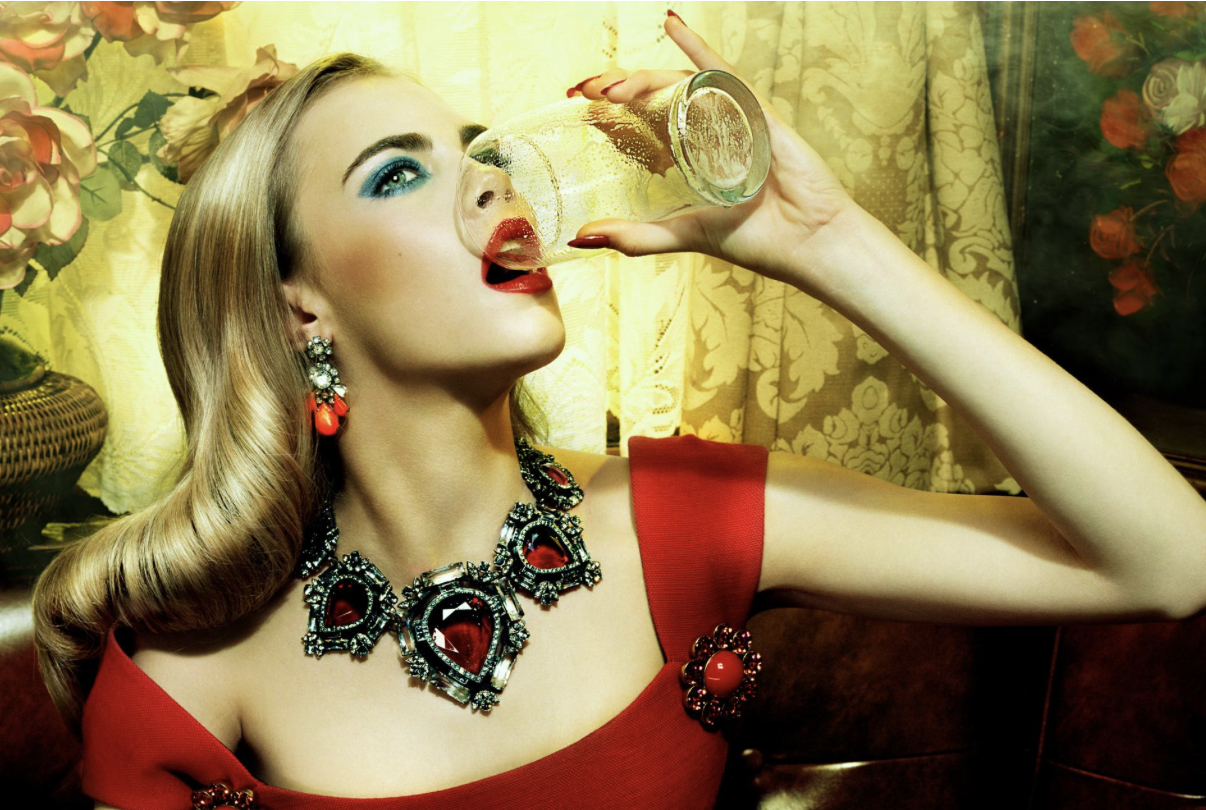
CNN Style: You only have your eyes to trust: Miles Aldridge on shooting film in the digital age
2025
“I like the rigor and tension of looking through the lens and seeing the picture,” said Miles Aldridge. From his studio inside an industrial building in North London, there is an assortment of framed, large-scale works of art — some hung on the walls, others neatly lined up on the floor. The British illustrator-turned-photographer, whose lens has captured numerous stars including Elton John, Donatella Versace and Kate Moss, is recounting his pivot into camerawork and the beauty of shooting with film.The unpredictable nature of film photography has been a powerful motivator for Aldridge across his extensive career, spanning around three decades. “At that point, you only have your eyes to trust,” said Aldridge, of the process when shooting with film.
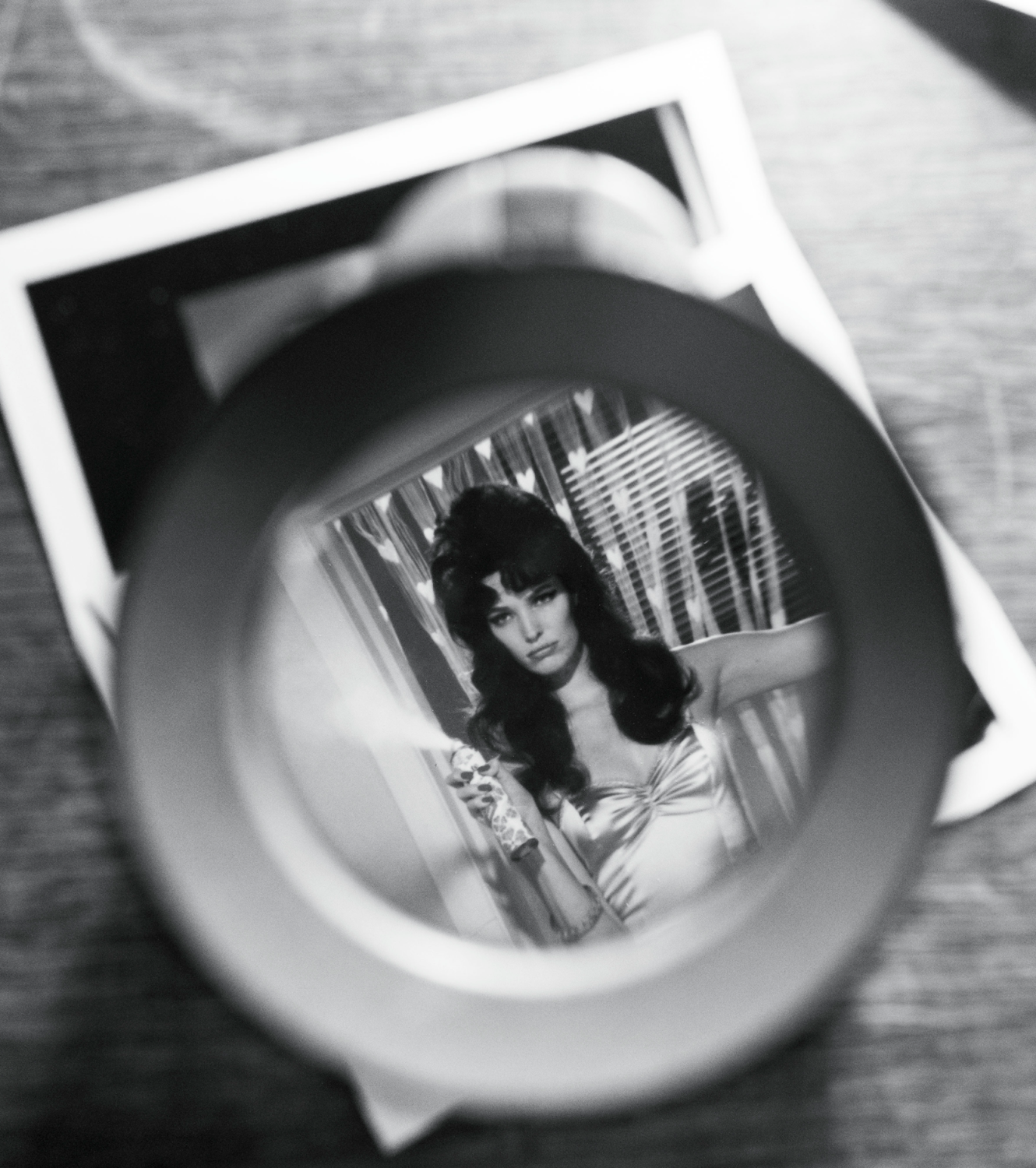
5'Eleven": Point of View: Miles Aldridge
2024
It’s not often you get to experience the works of a creative who has significantly influenced your taste and inspiration in photography – and discuss them in real-time with the creator themselves. It’s a calm Friday afternoon, and Artist and Photographer Miles Aldridge is absorbed in his latest project. Surrounding me, vibrant characters in acidic hues from his extensive catalogue of work gaze out through the quietude. In one frame, a multi-hued domestic setting barely contains a woman reminiscent of Elizabeth Taylor. Clad in a wipe-clean dress, she silently screams over a half-grapefruit crowned with a glacé cherry. Known as Actress #6, she’s just one of many faces whose familiar presence feels oddly recognisable. Like a character from a forgotten noir film, perhaps it’s the backdrop of domesticity that creates this impression – or simply the result of years spent admiring these images in awe. Now, finally standing among them, they feel like old friends.
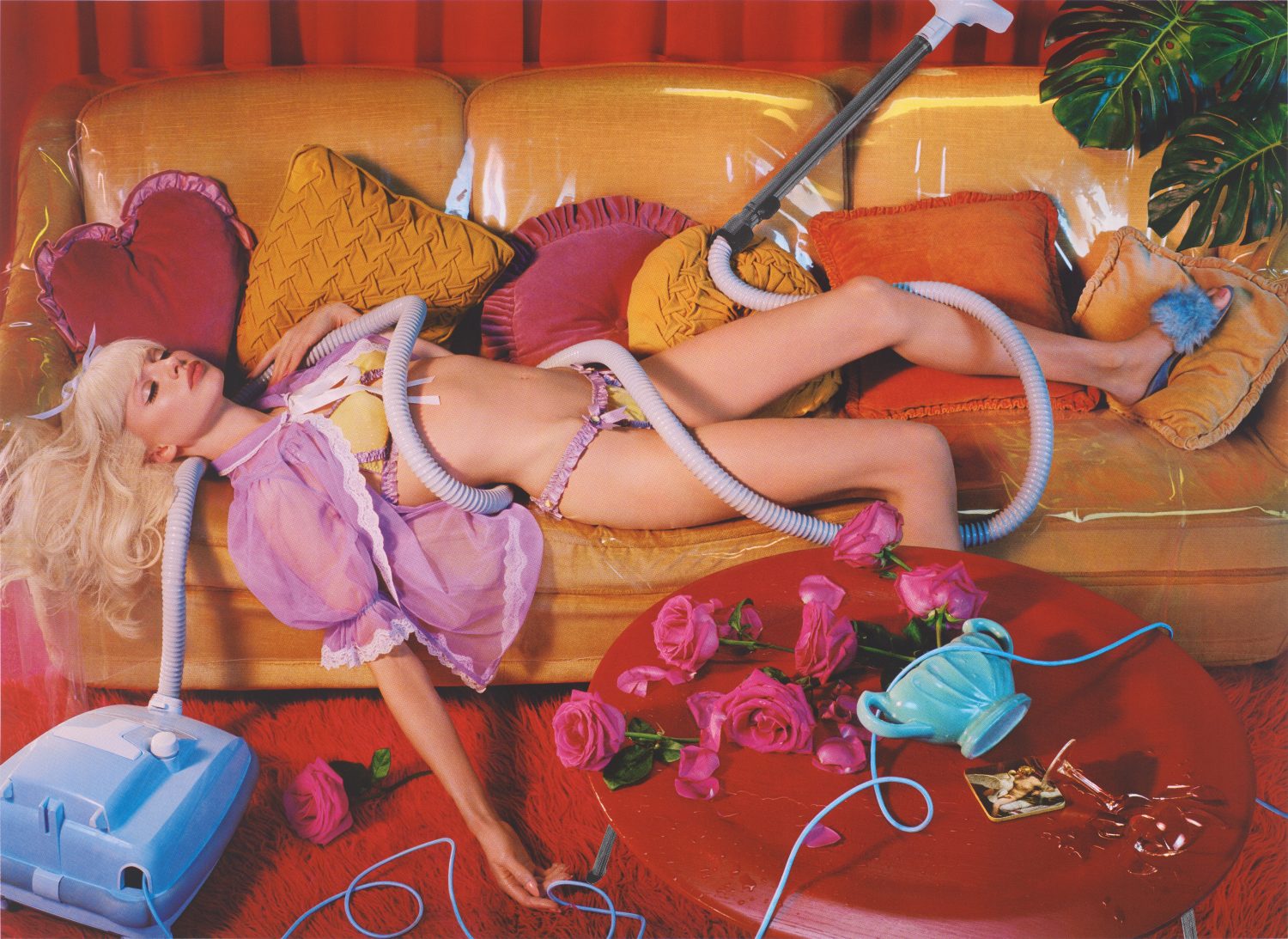
ES Magazine: How Photographer Miles Aldridge brought fashion to the front room
2023
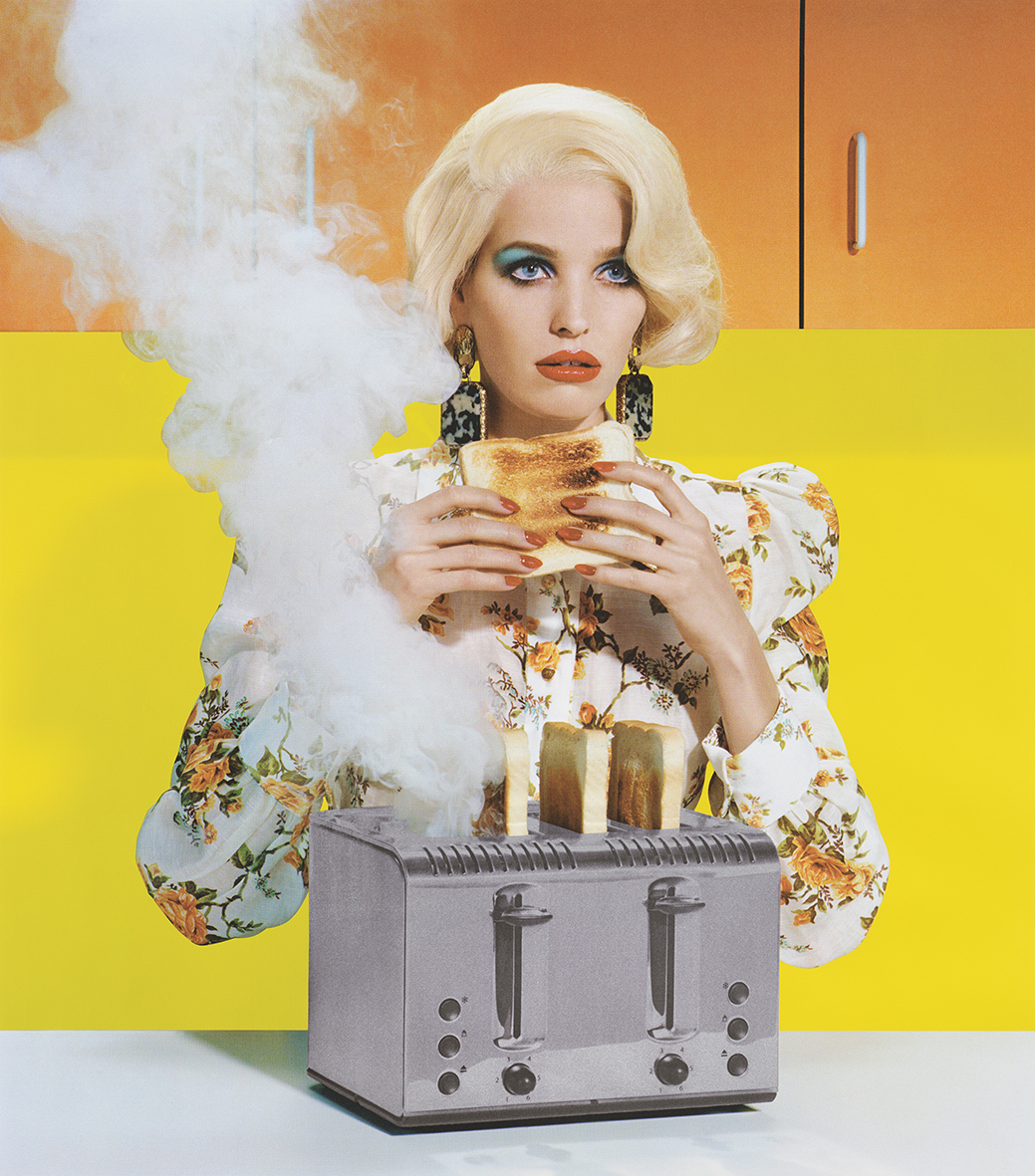
The Guardian: Miles Aldridge’s psychedelic dreamworld – in pictures
2022
Viewers beware! These acid-drenched mise-en-scénes have a glamorous, film noir quality yet often contain sinister undercurrents. Miles Aldridge rose to prominence in the mid-90s with his arresting, highly stylised photographs referencing film noir, art history and pop culture. The images are glamorous, yet probe society’s idealised notions of domestic bliss, where sinister undercurrents swirl beneath a flawless surface.
